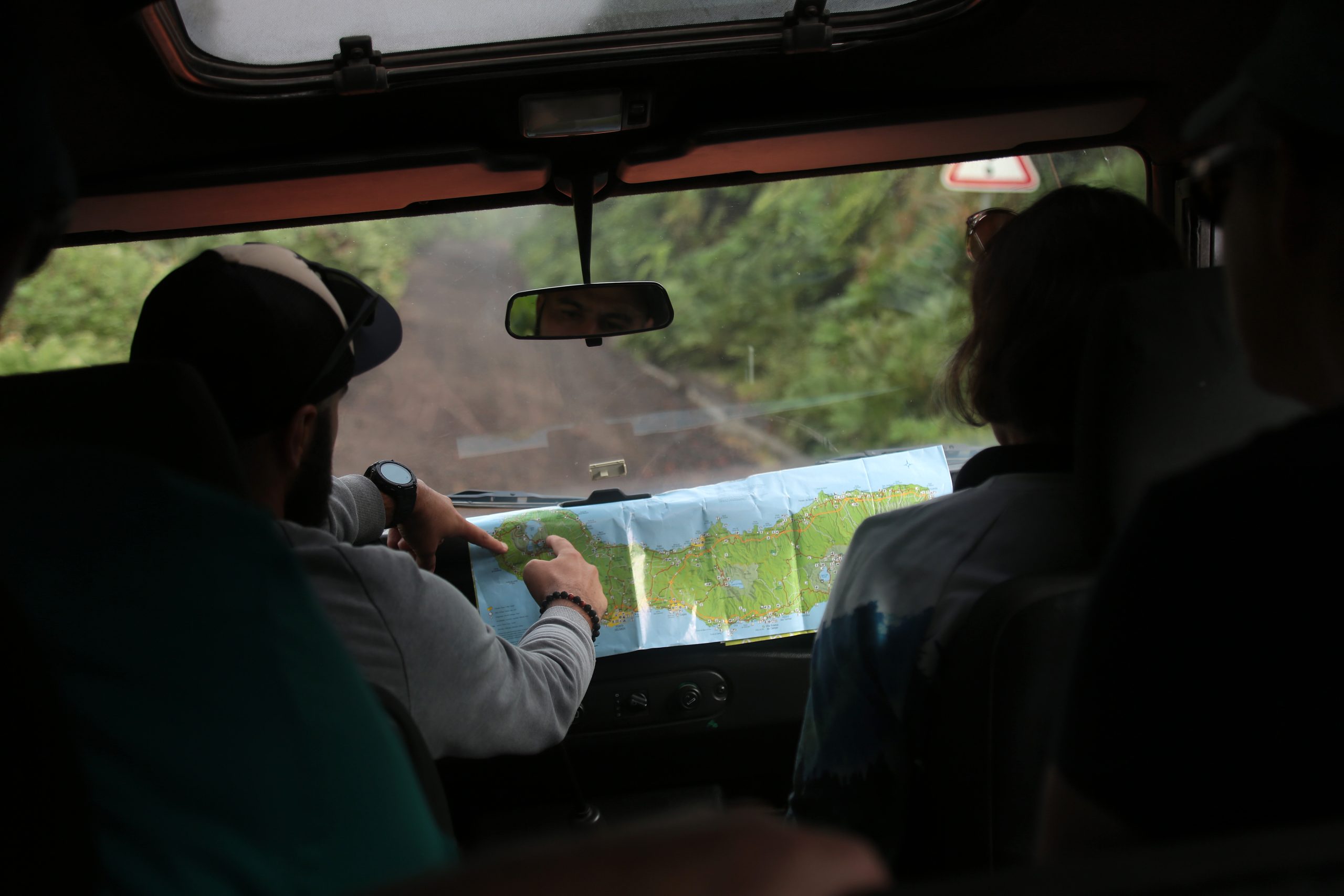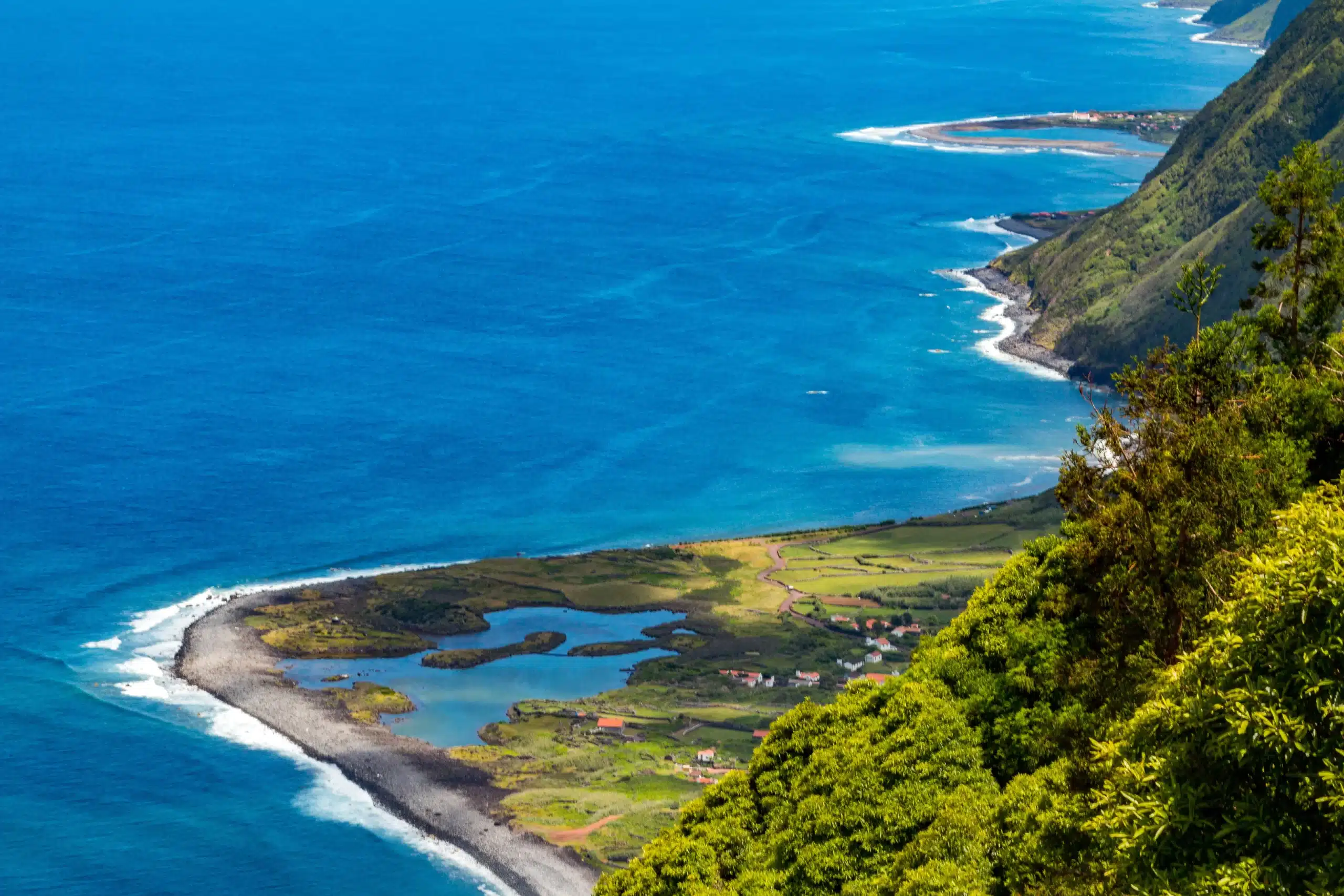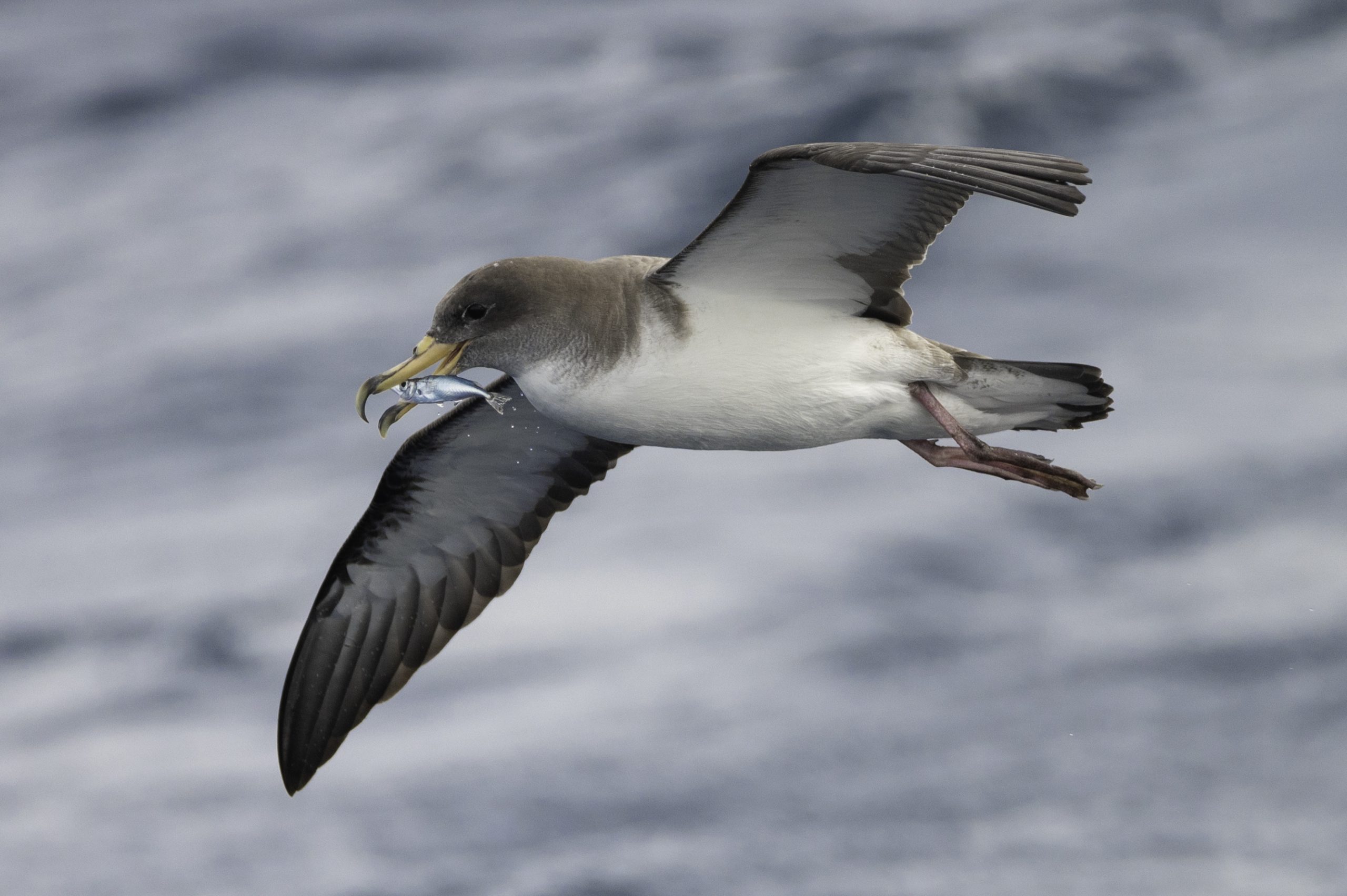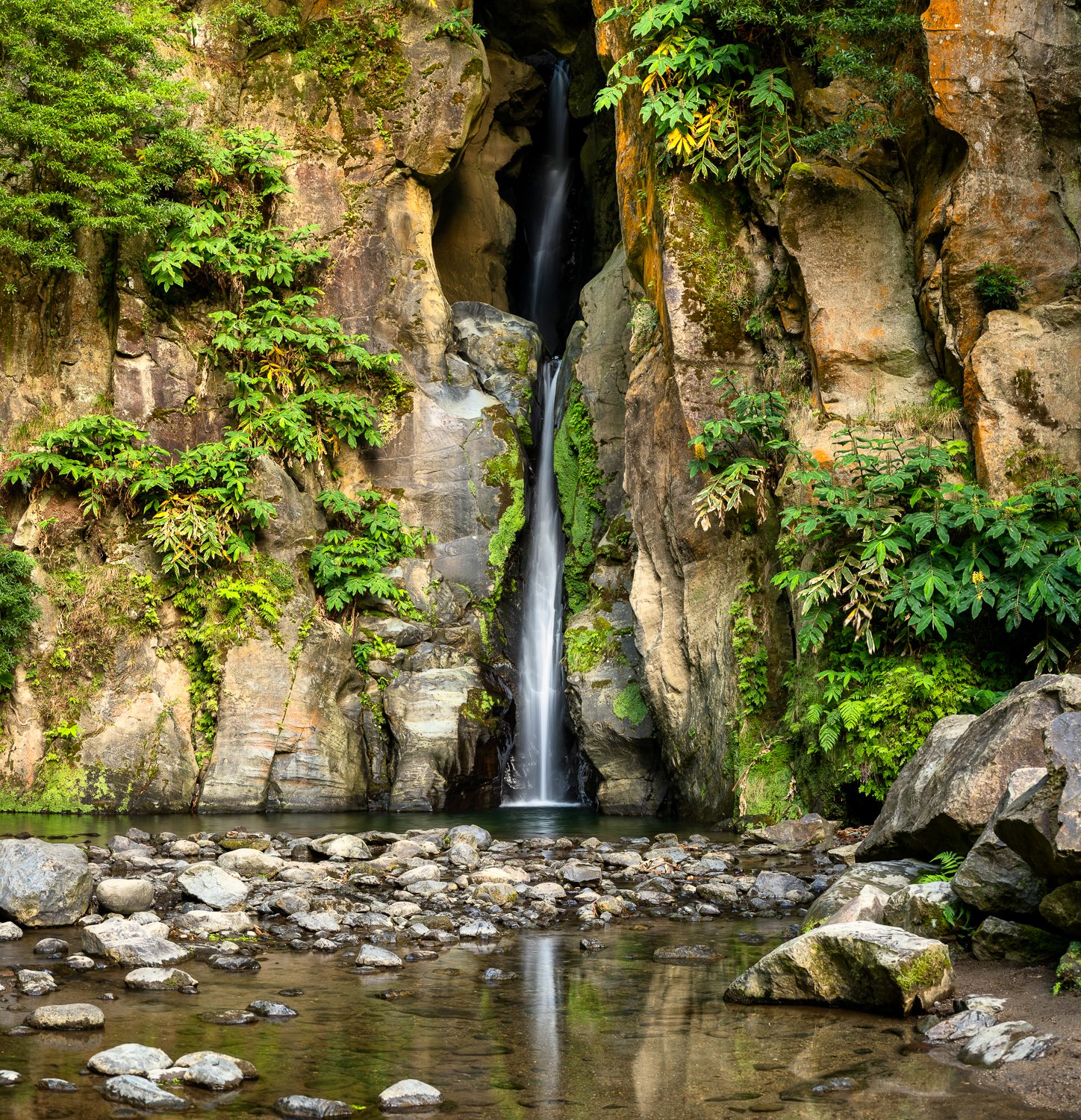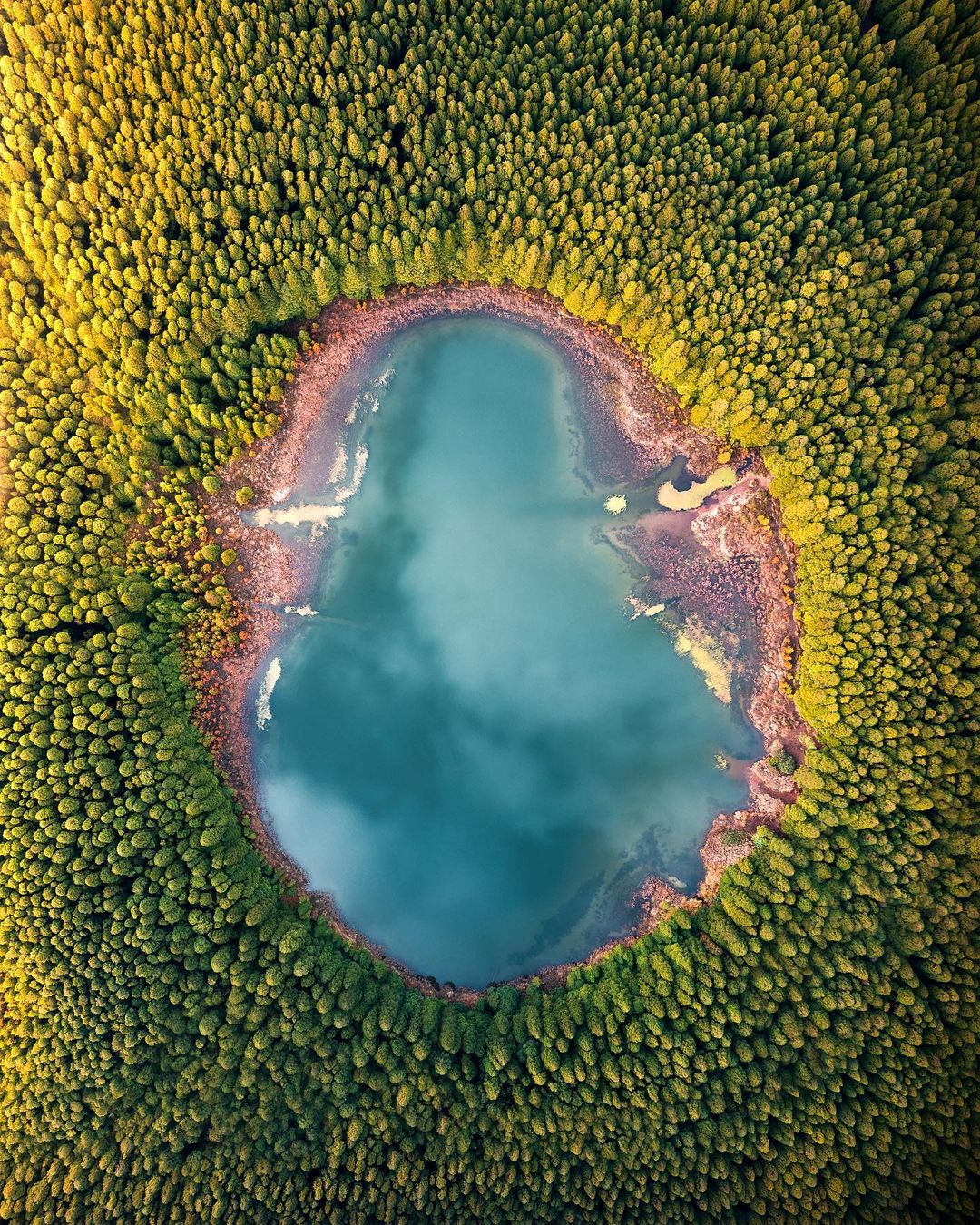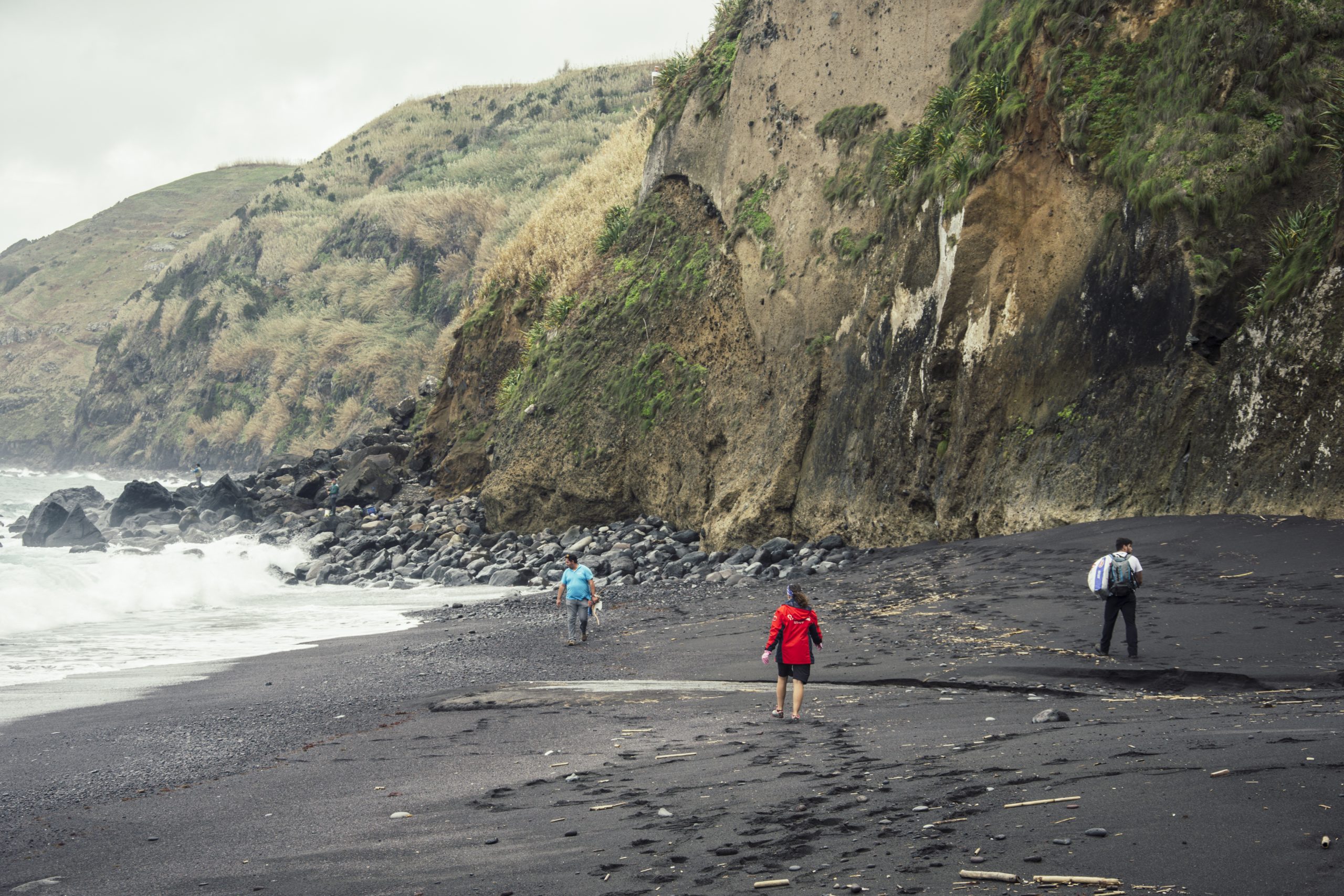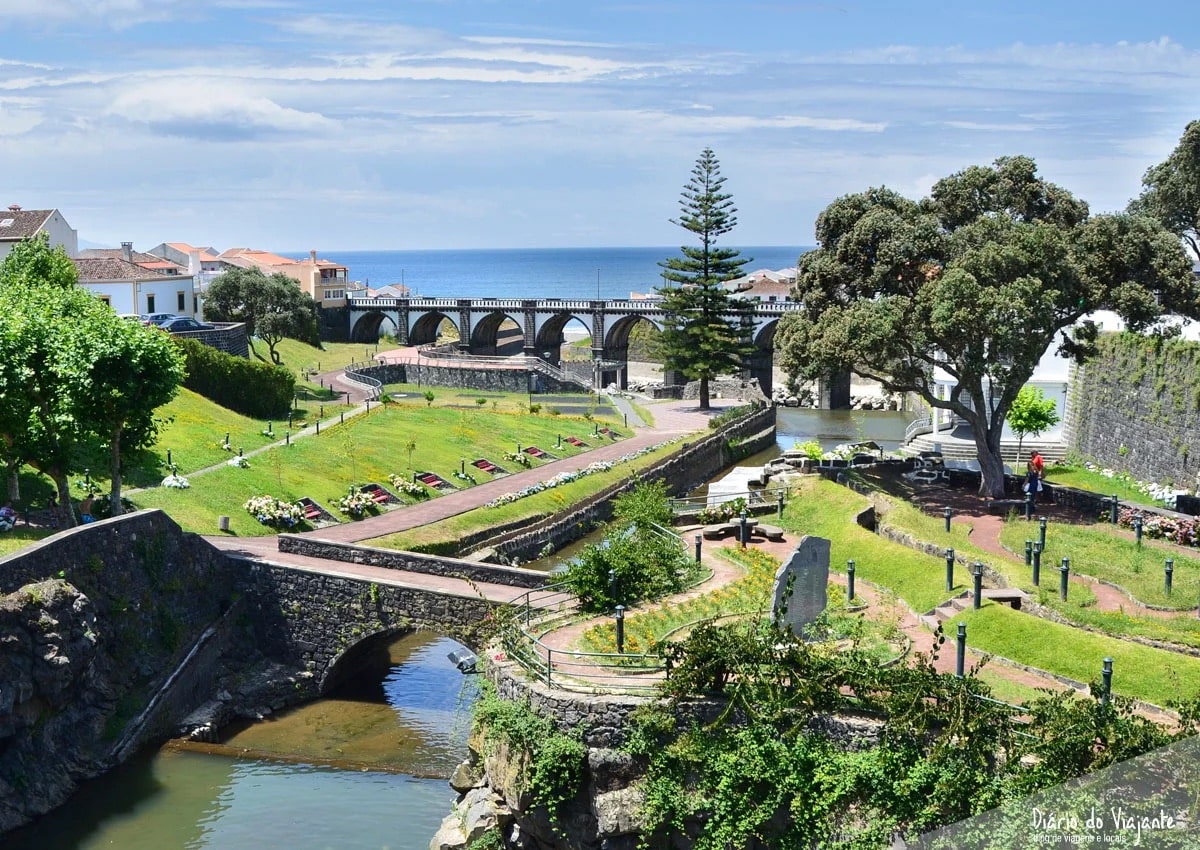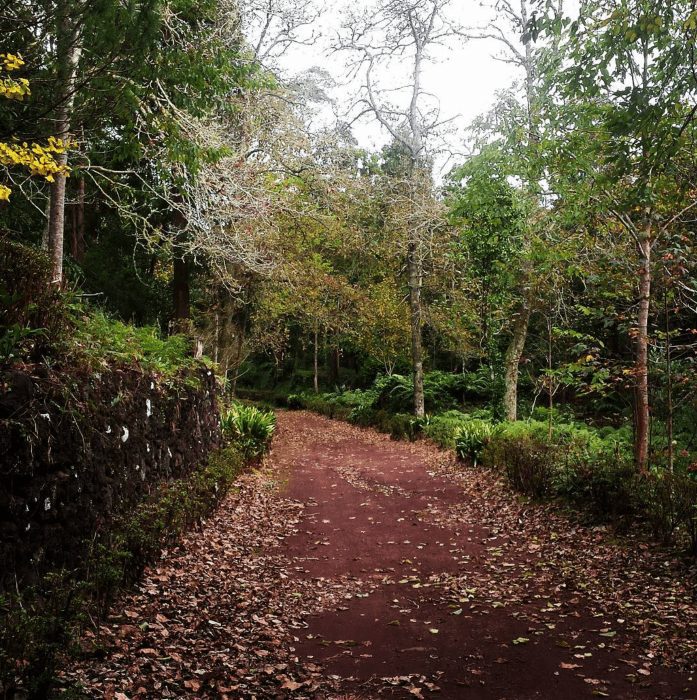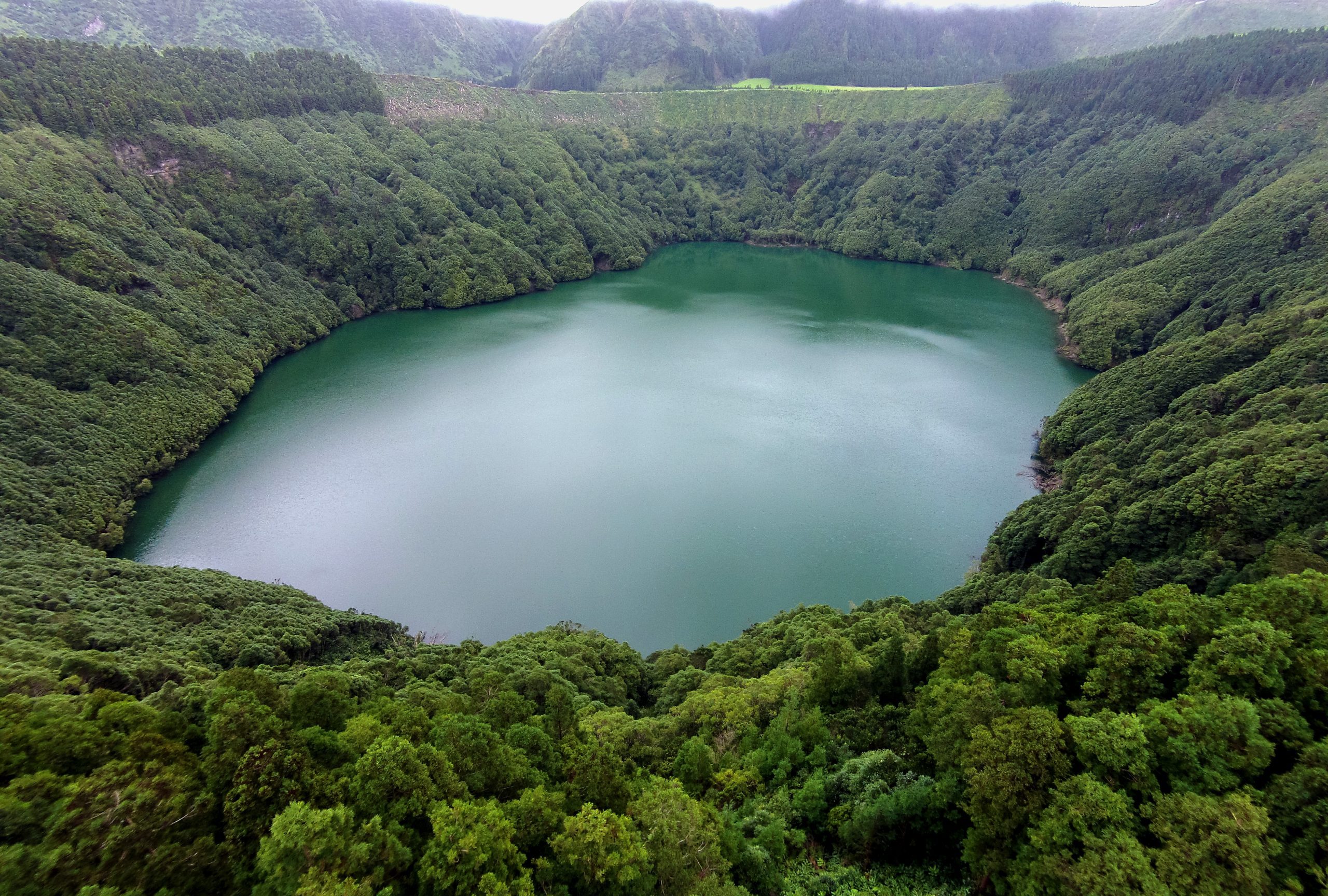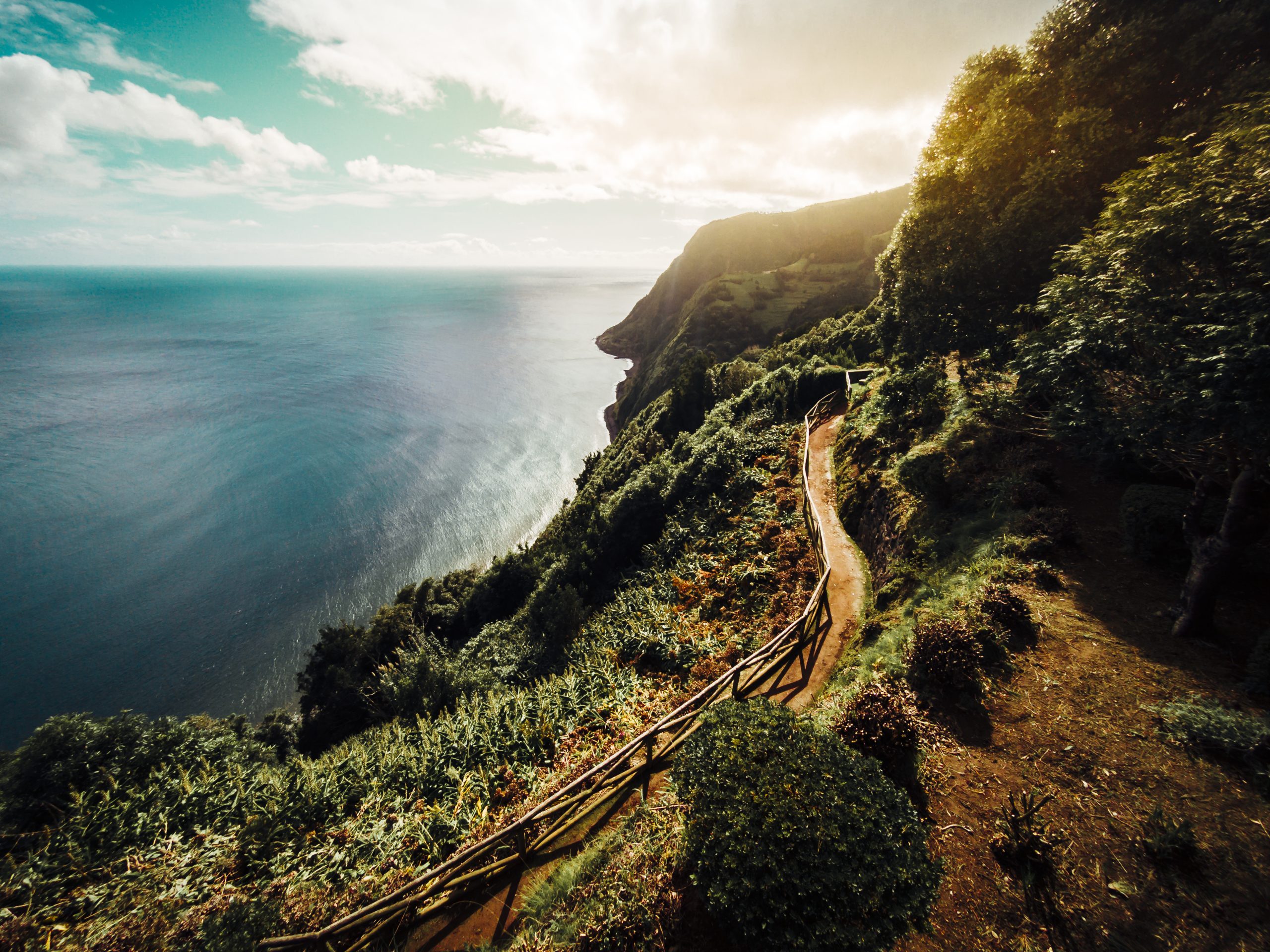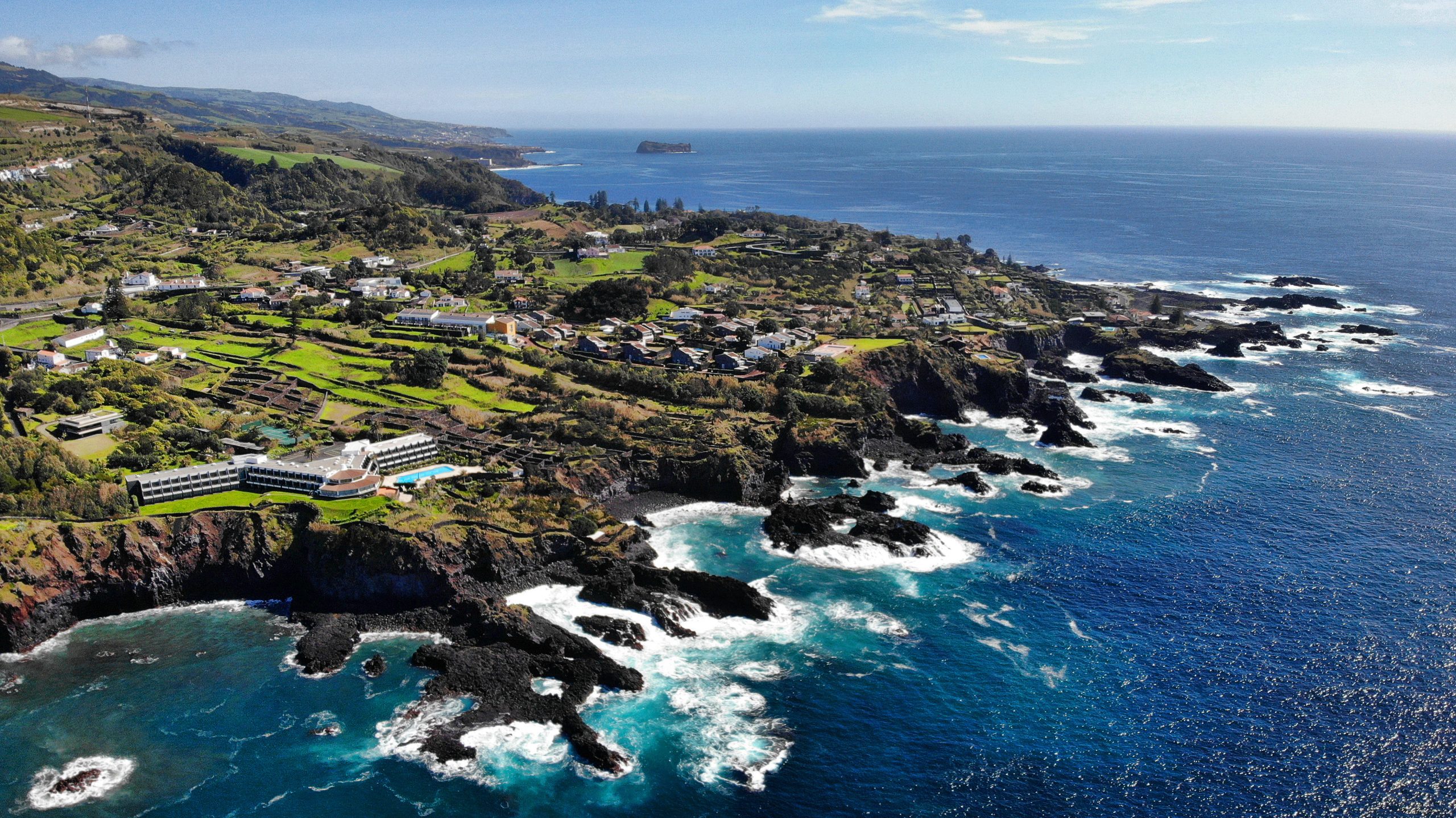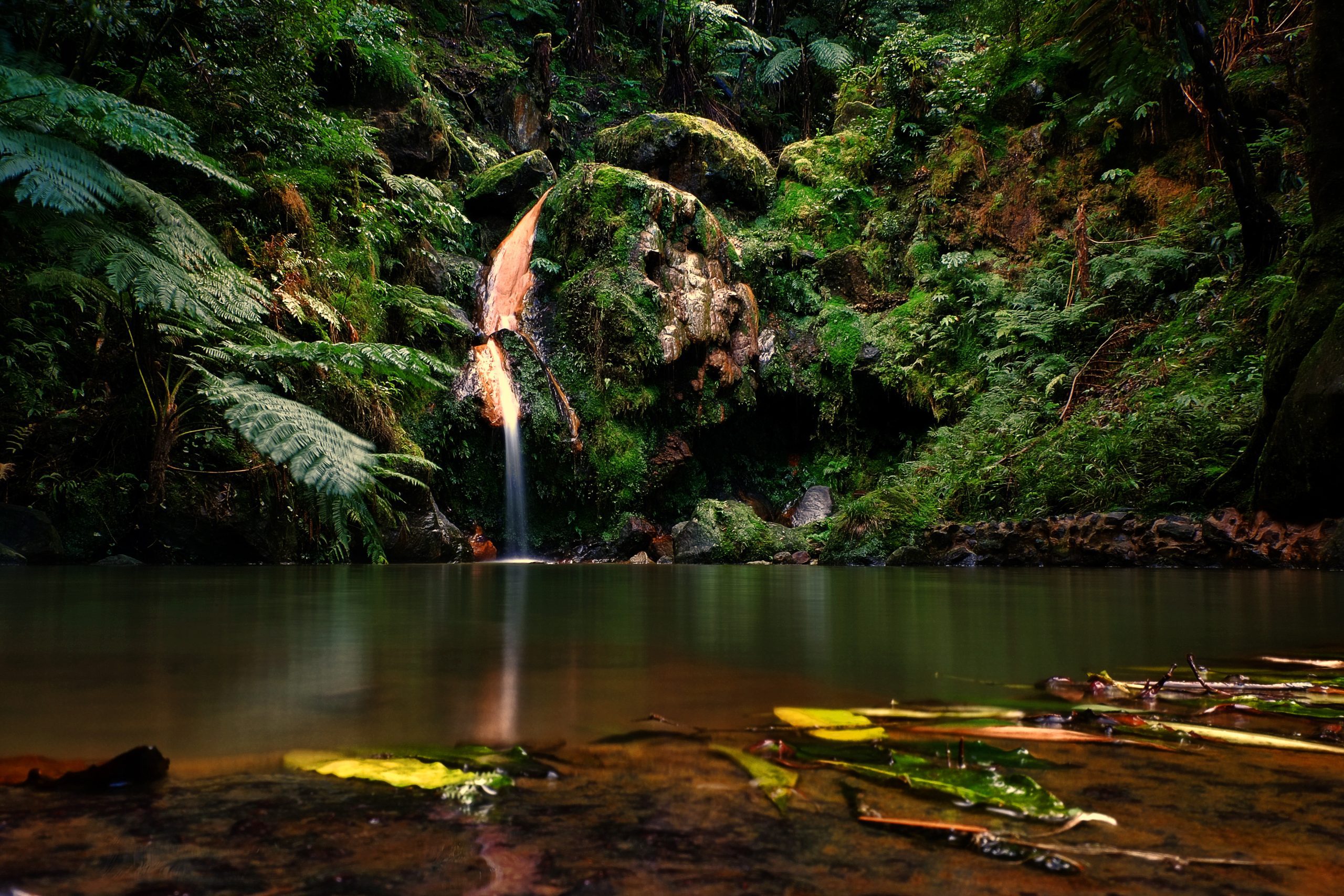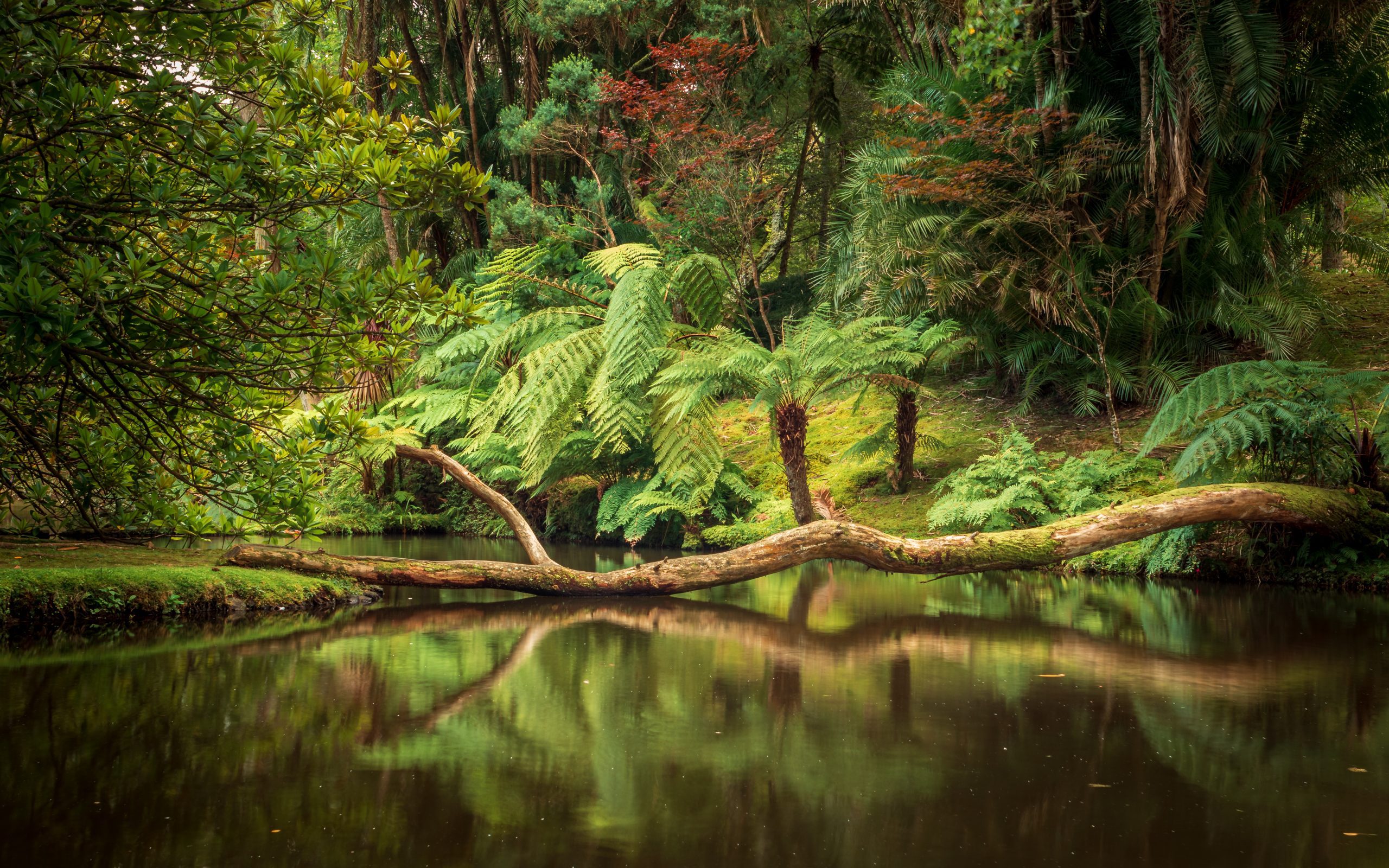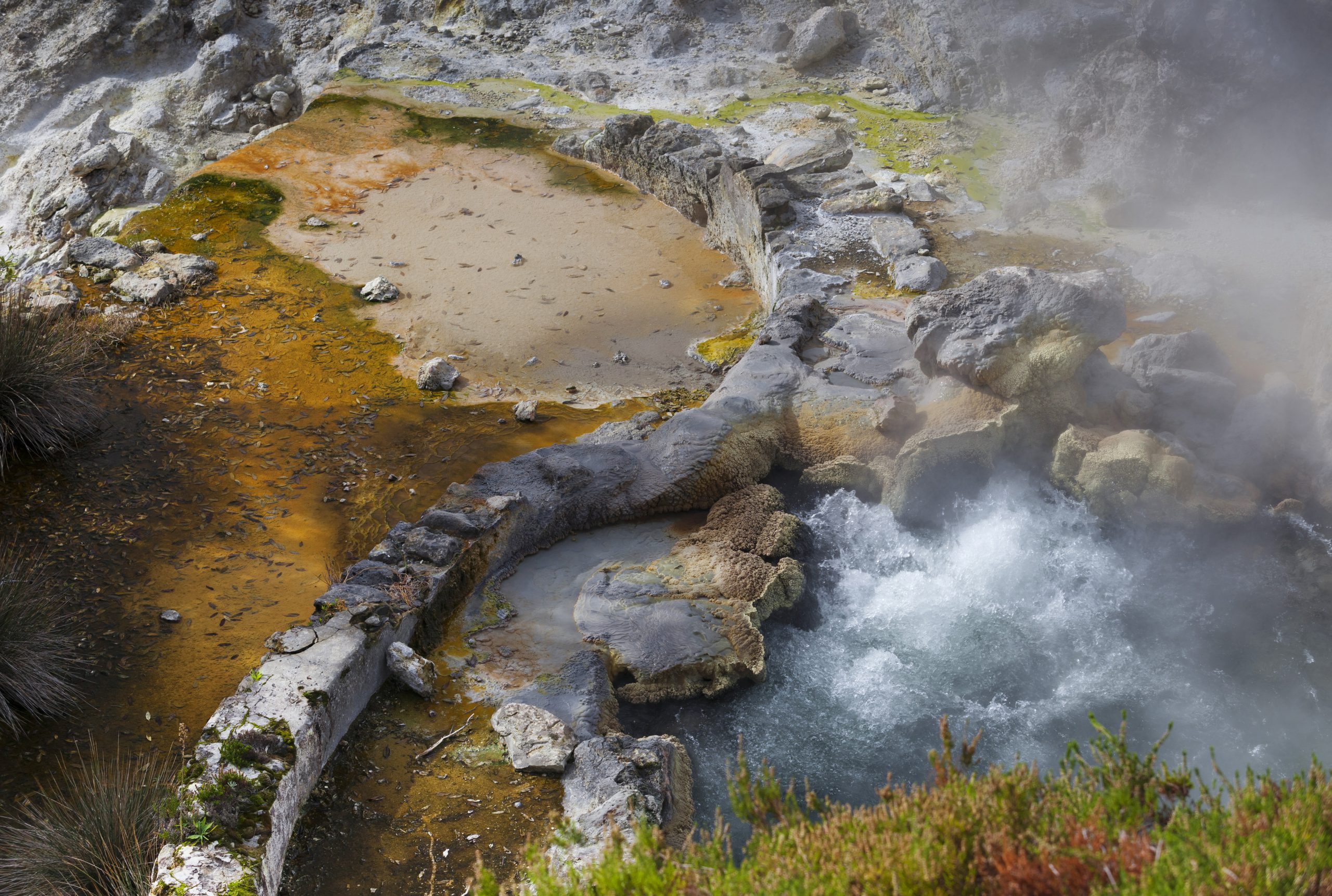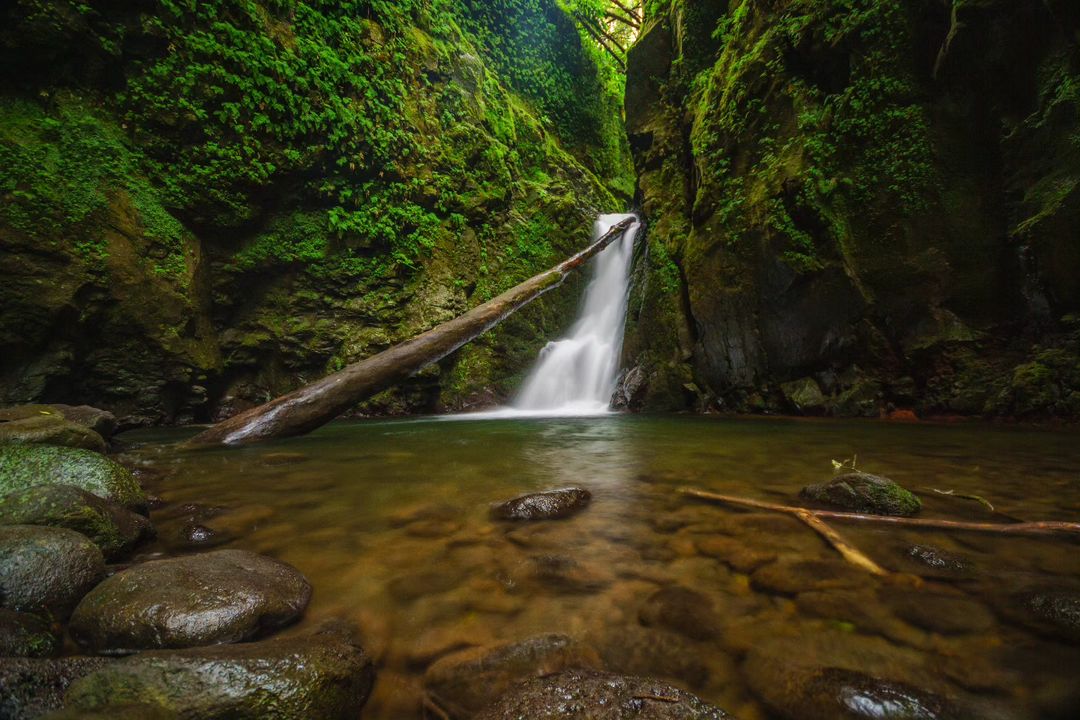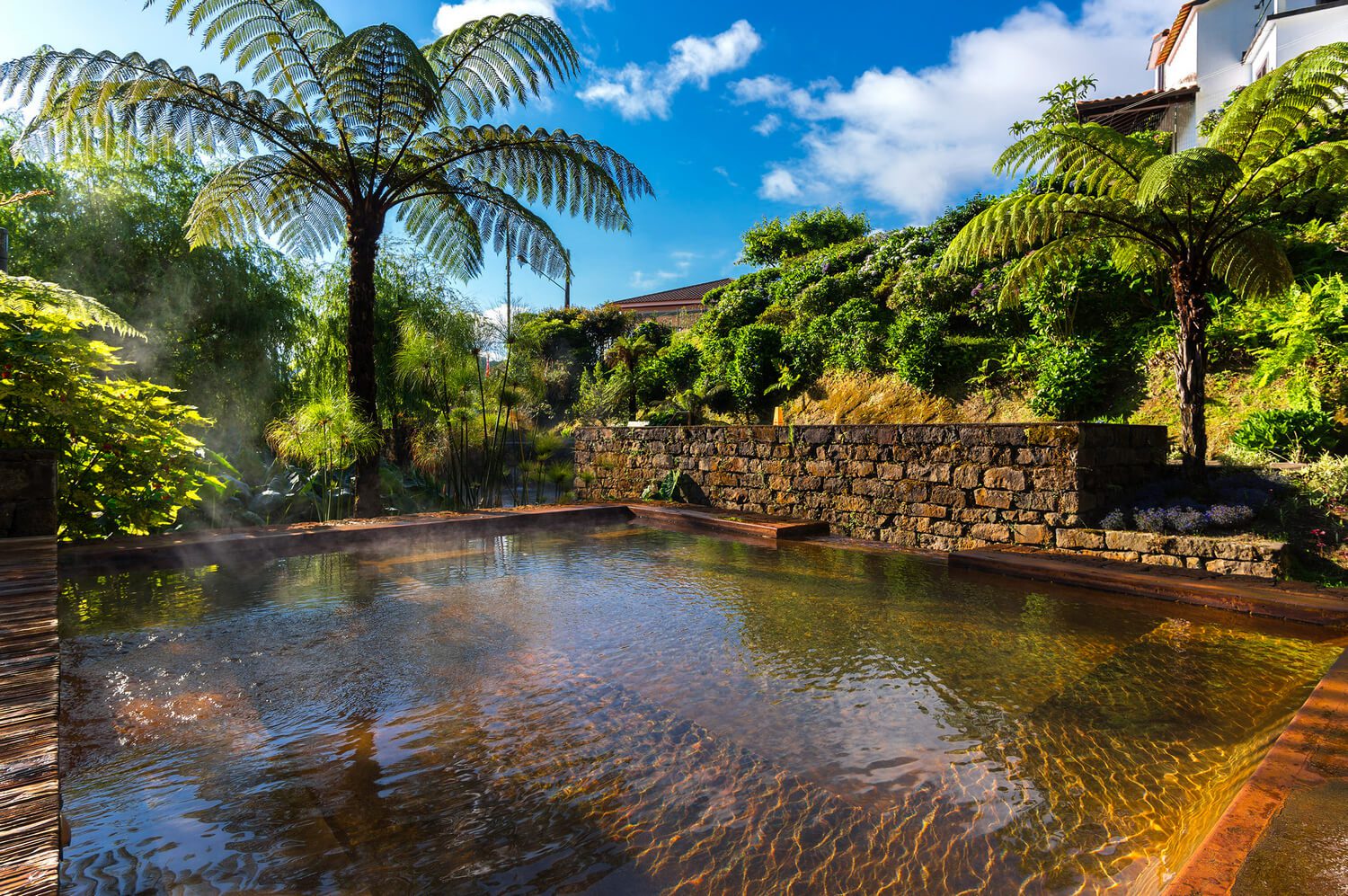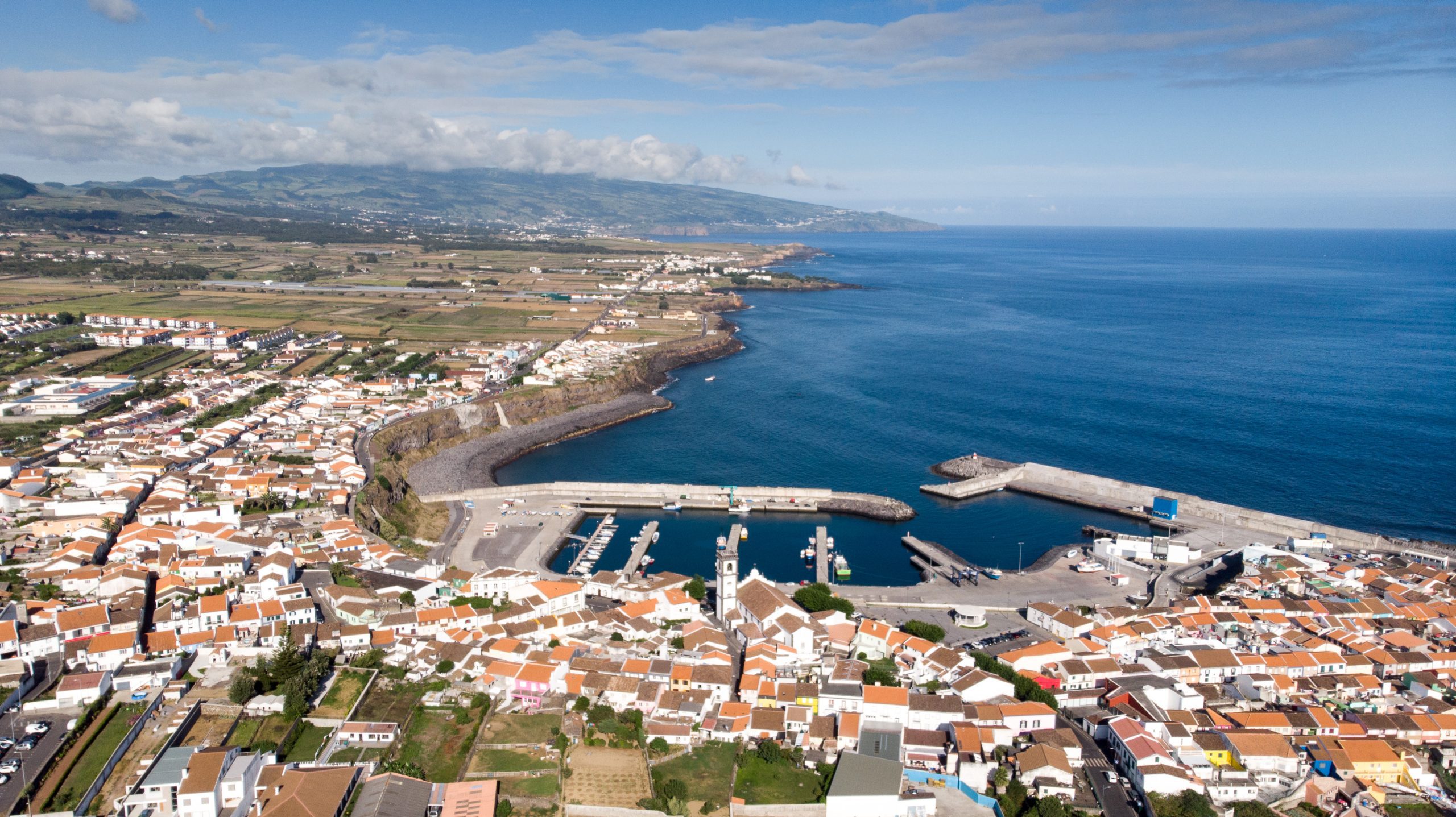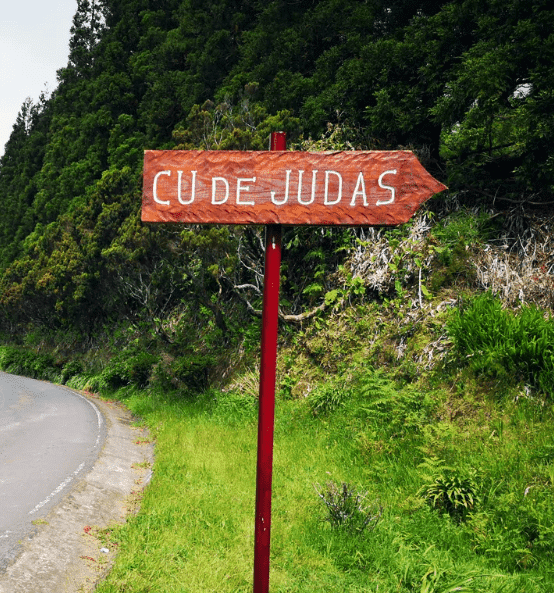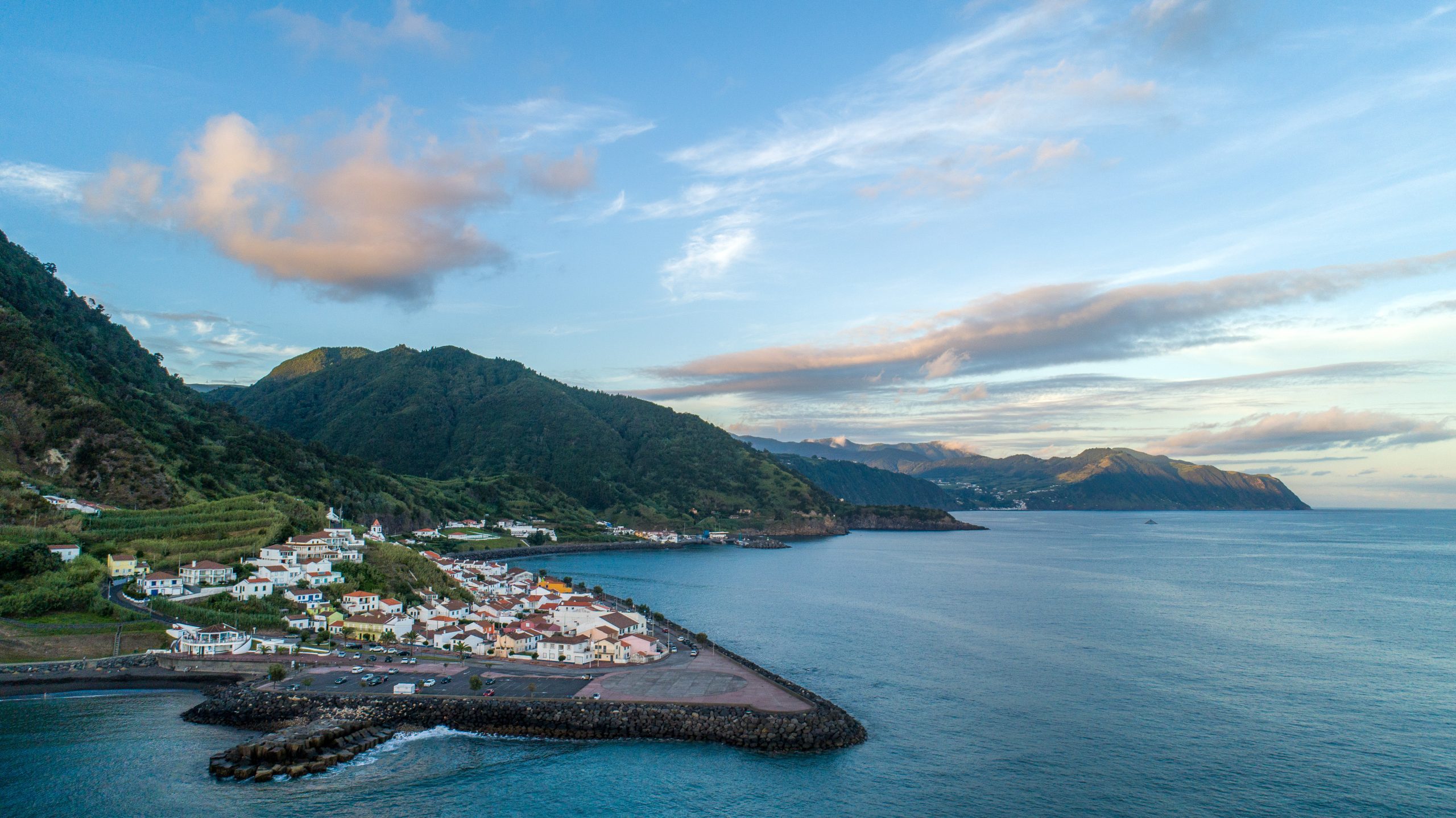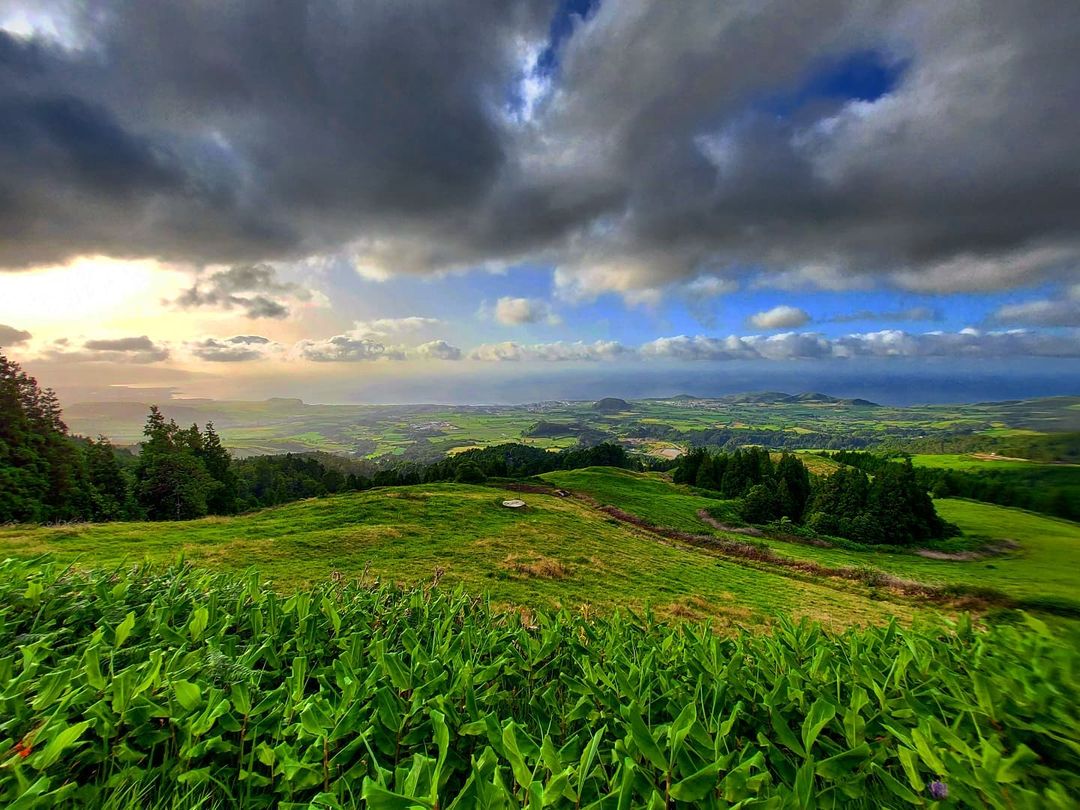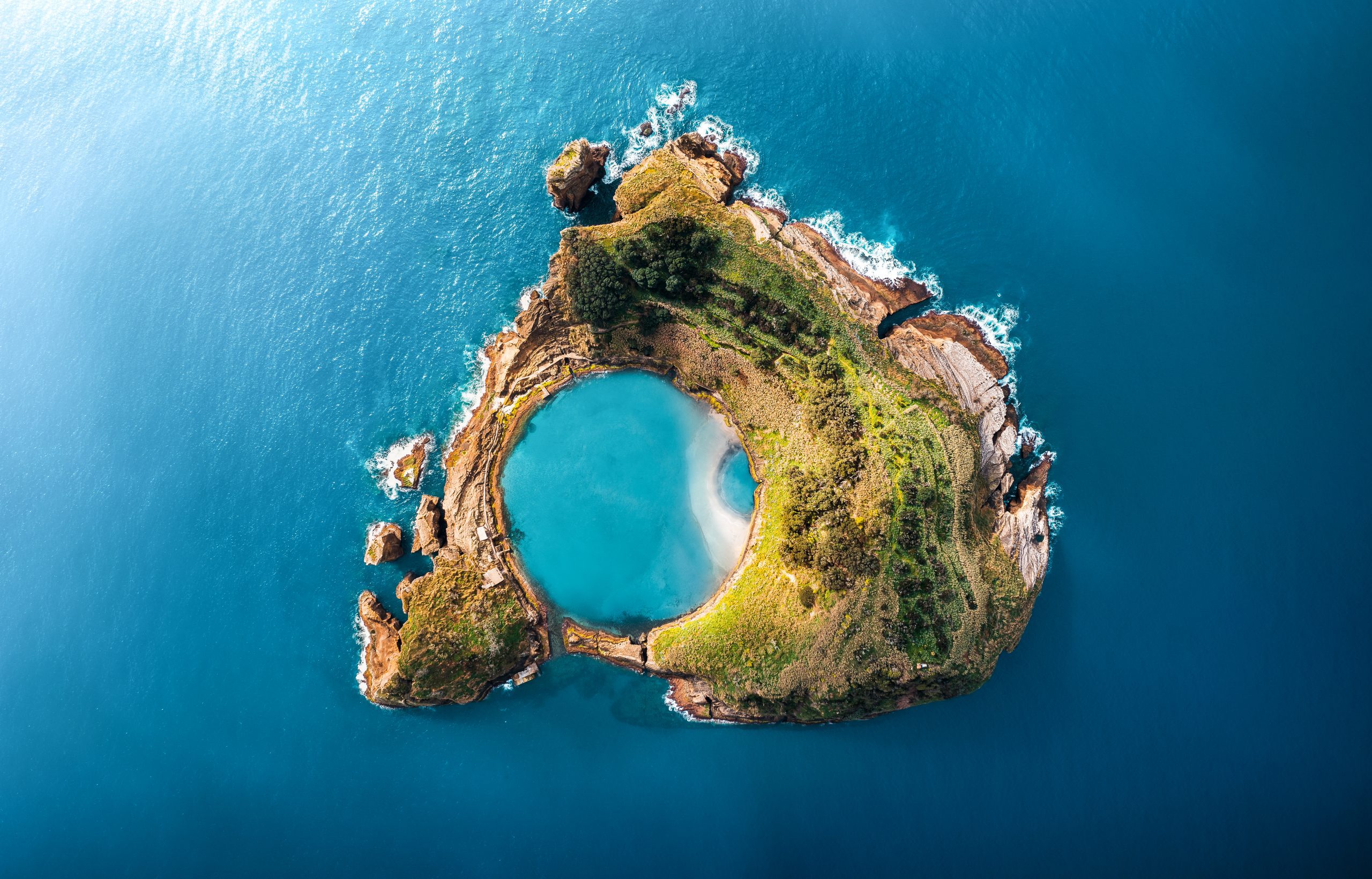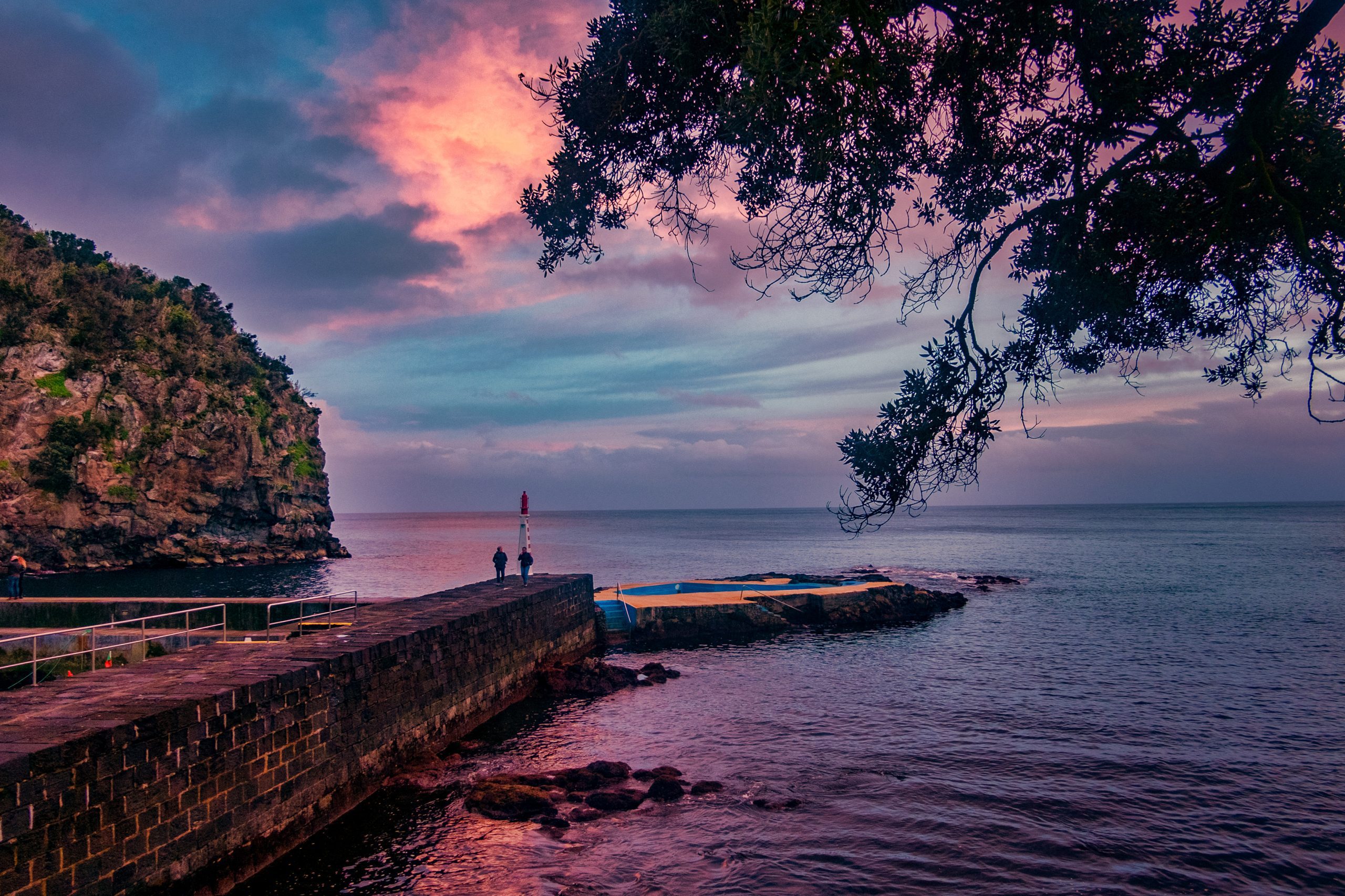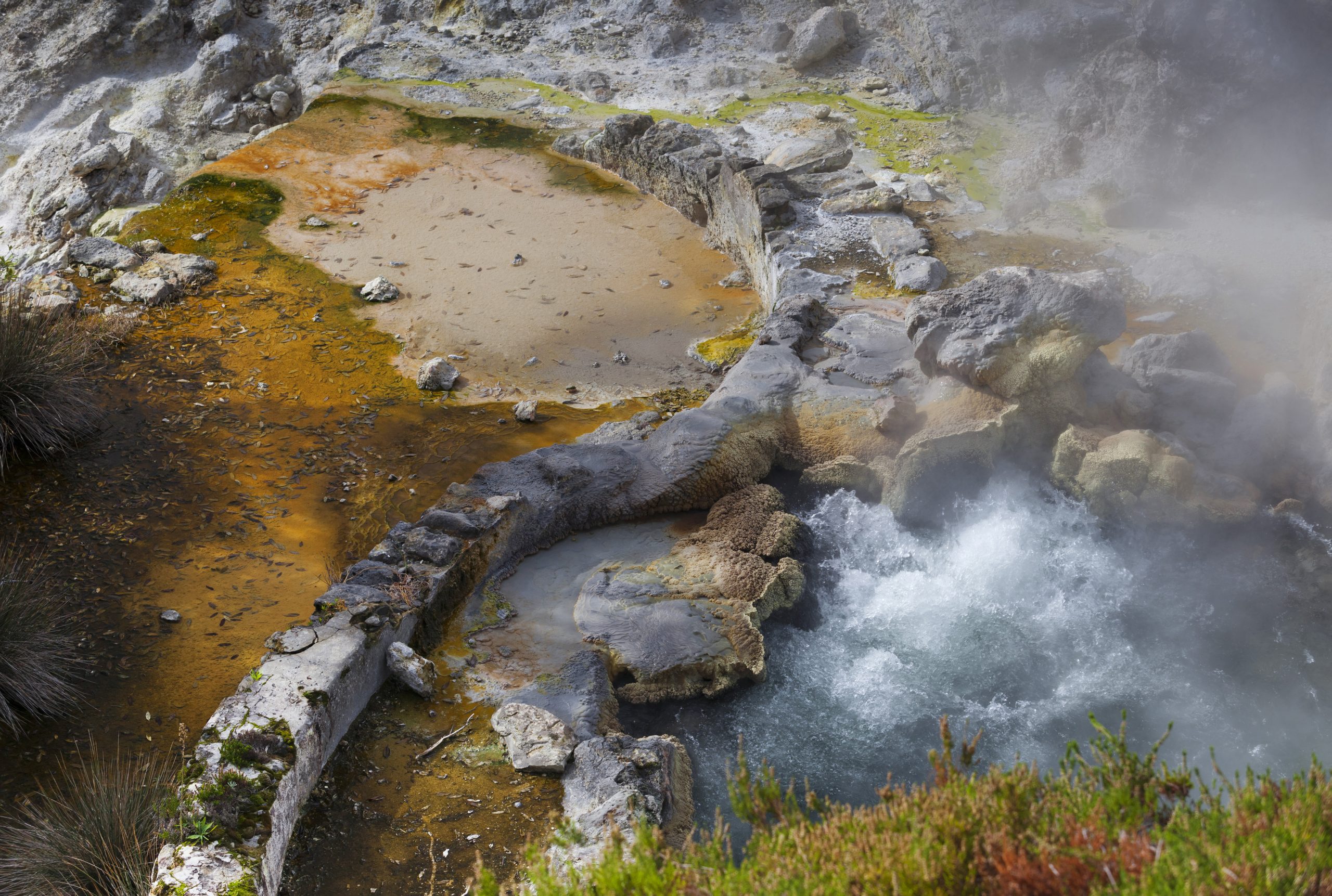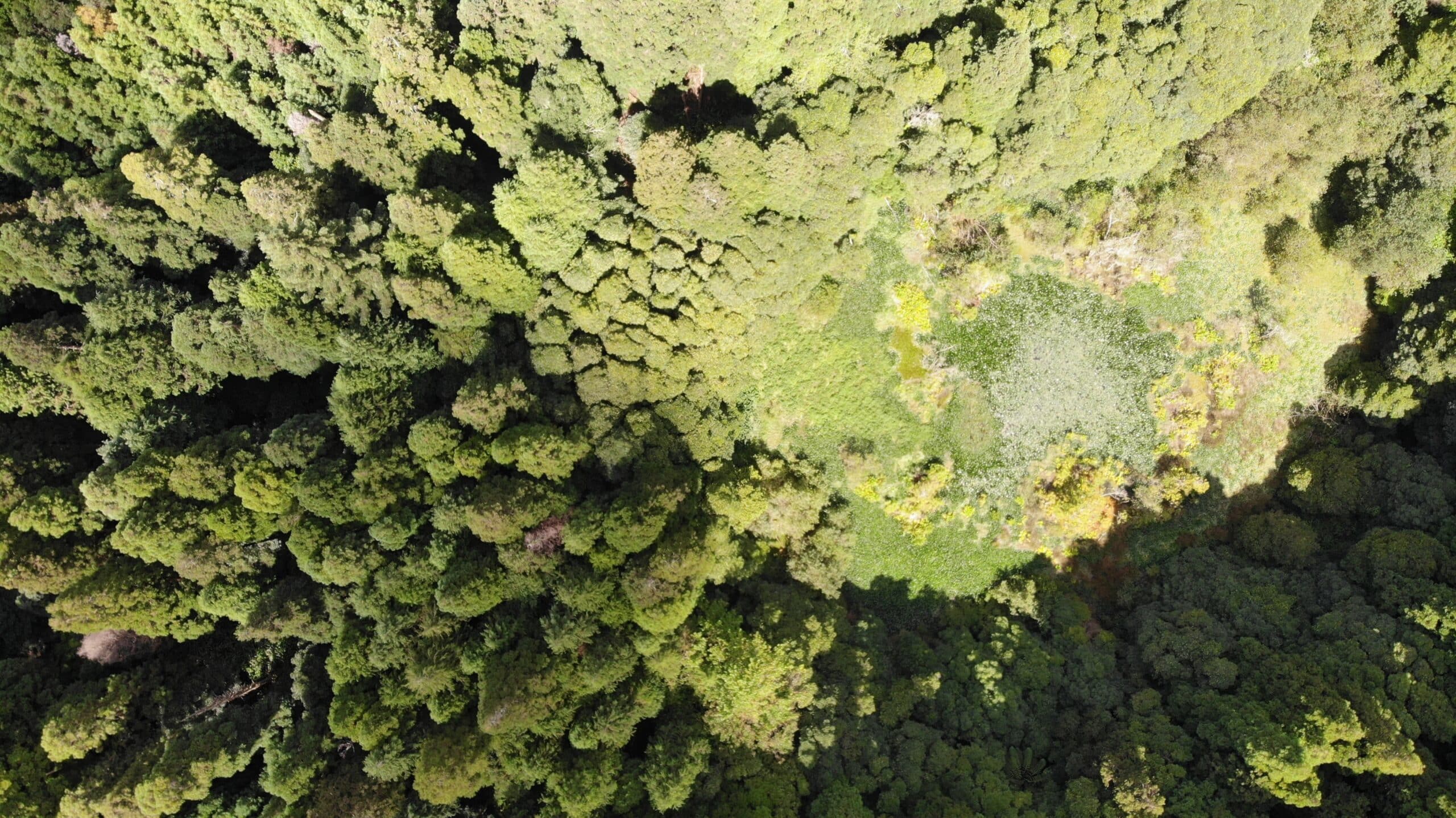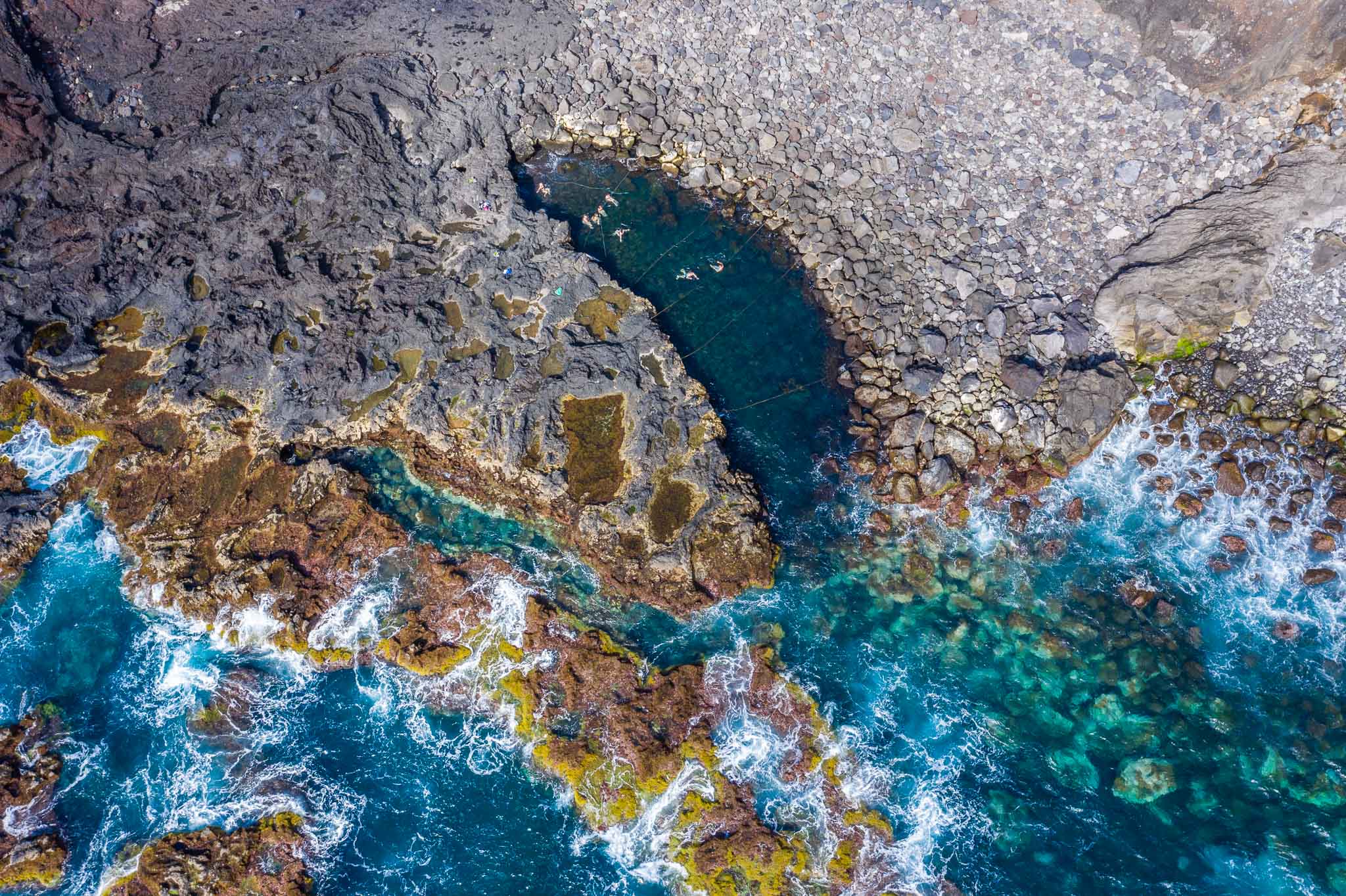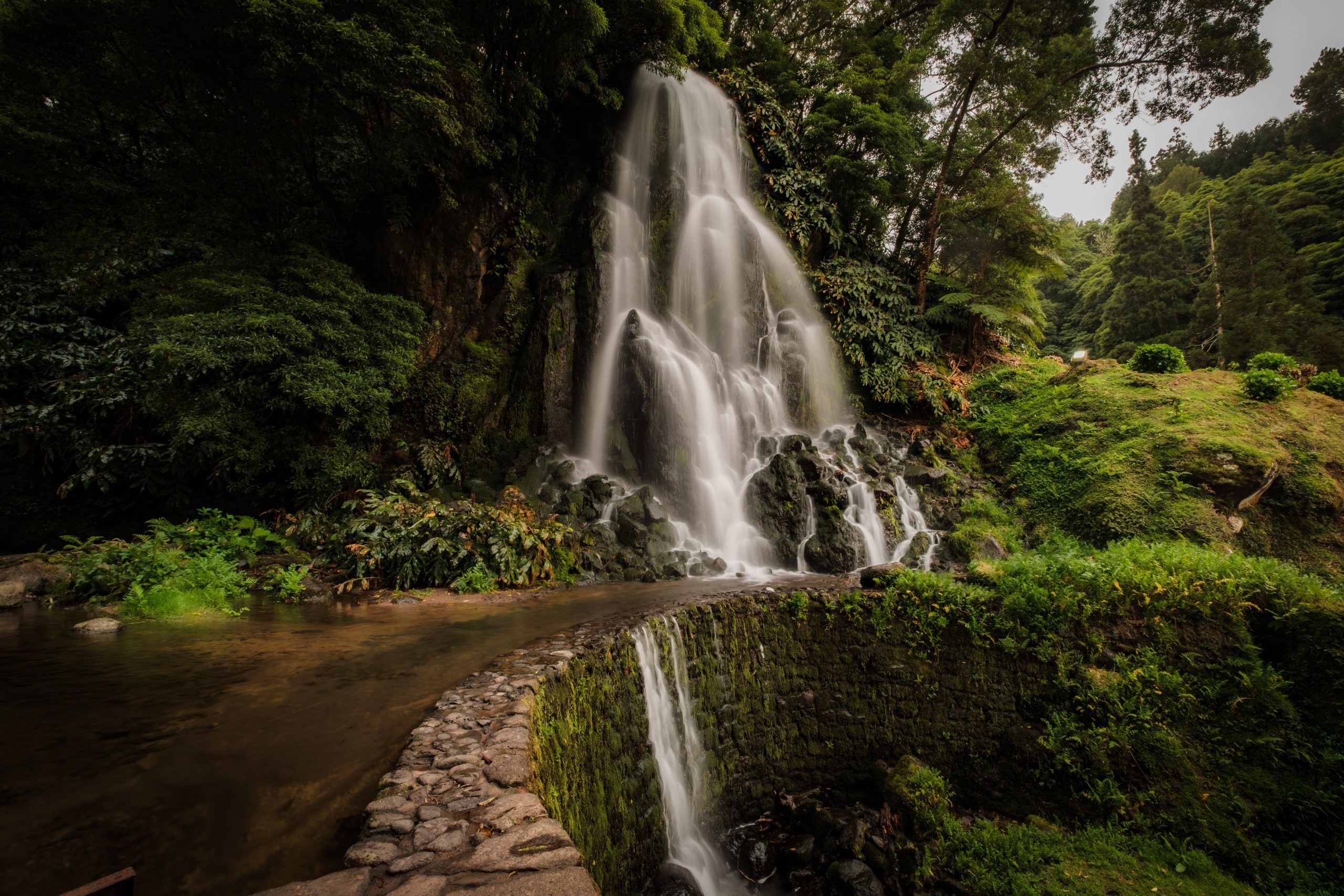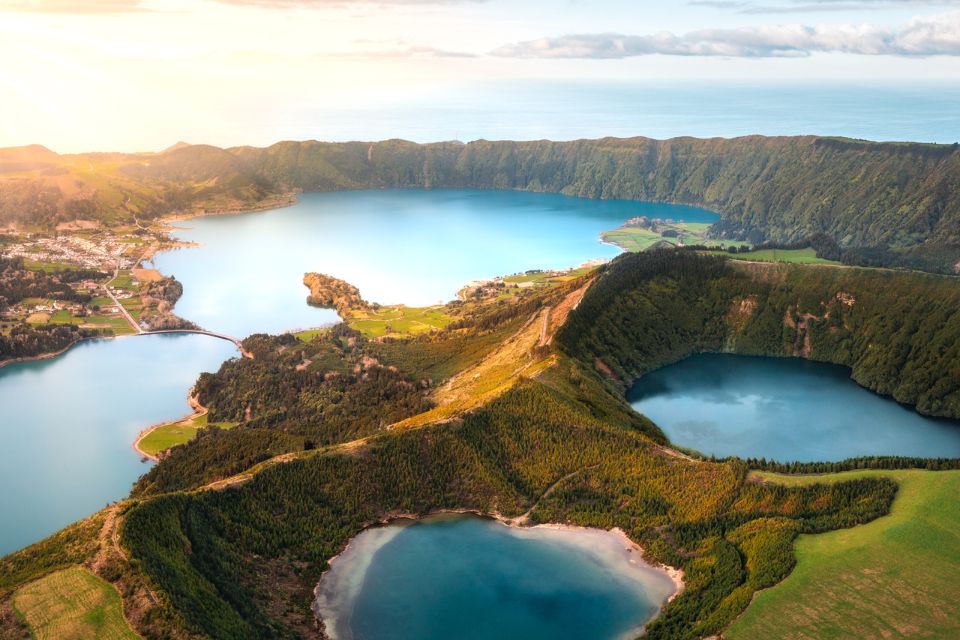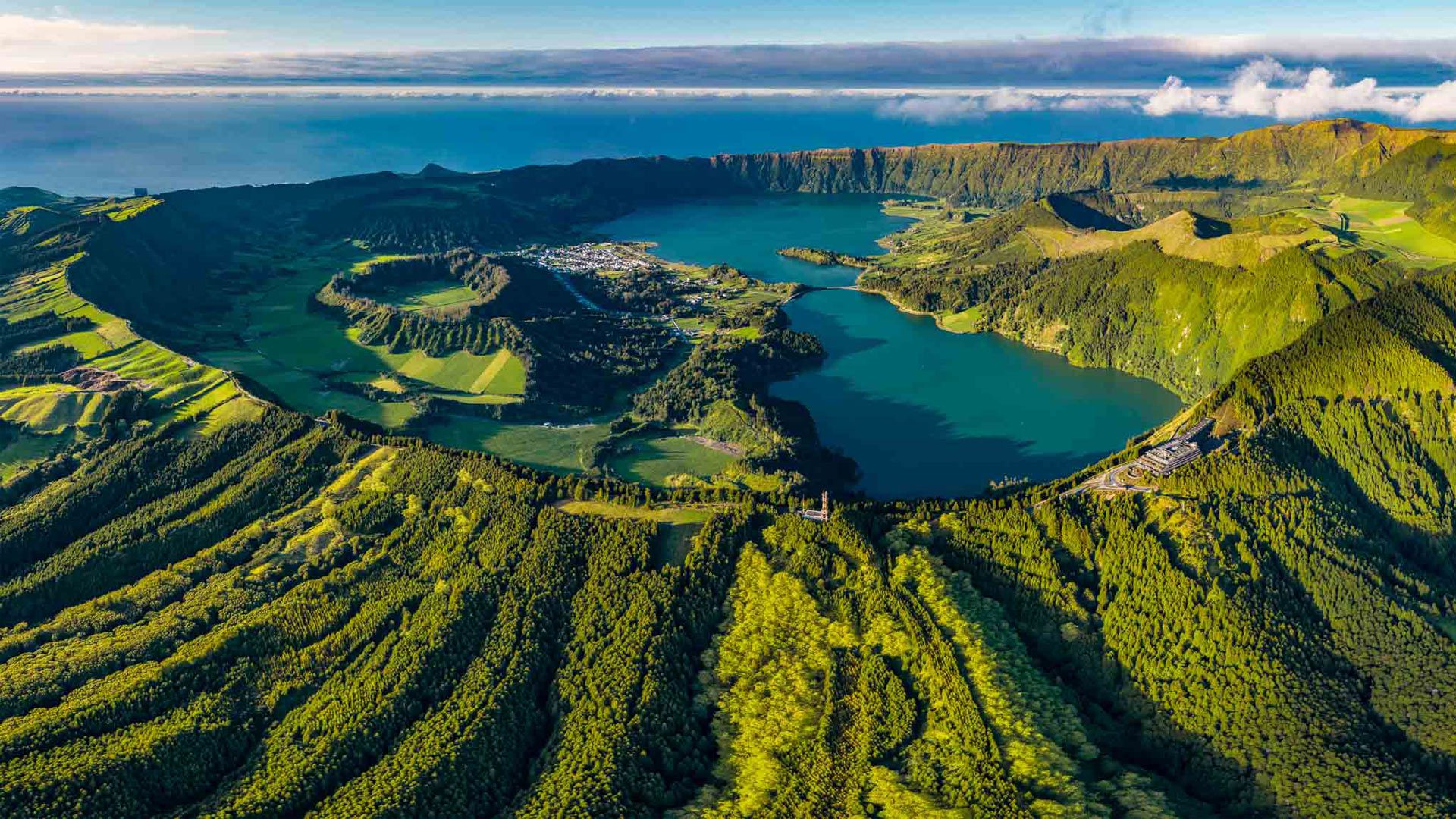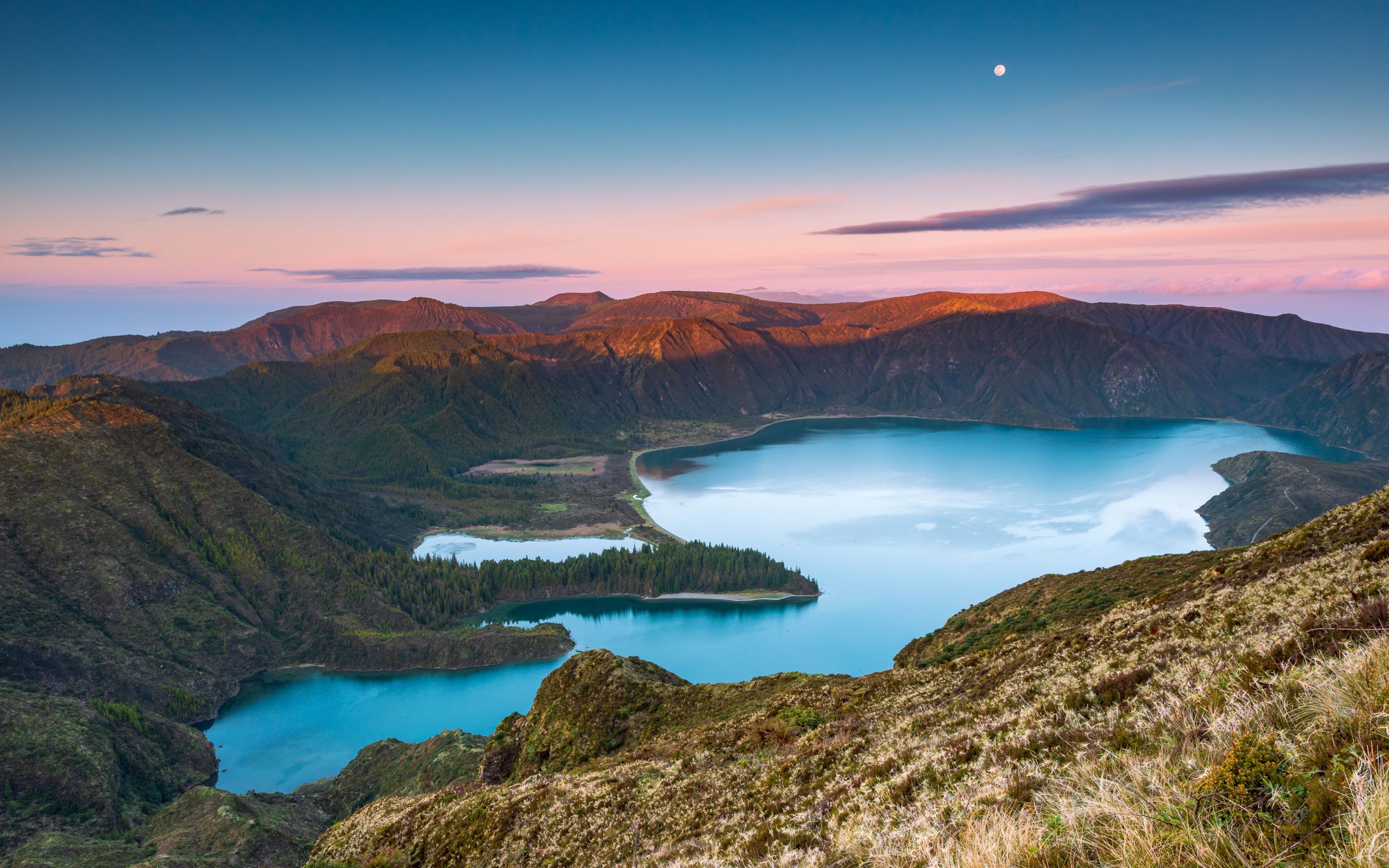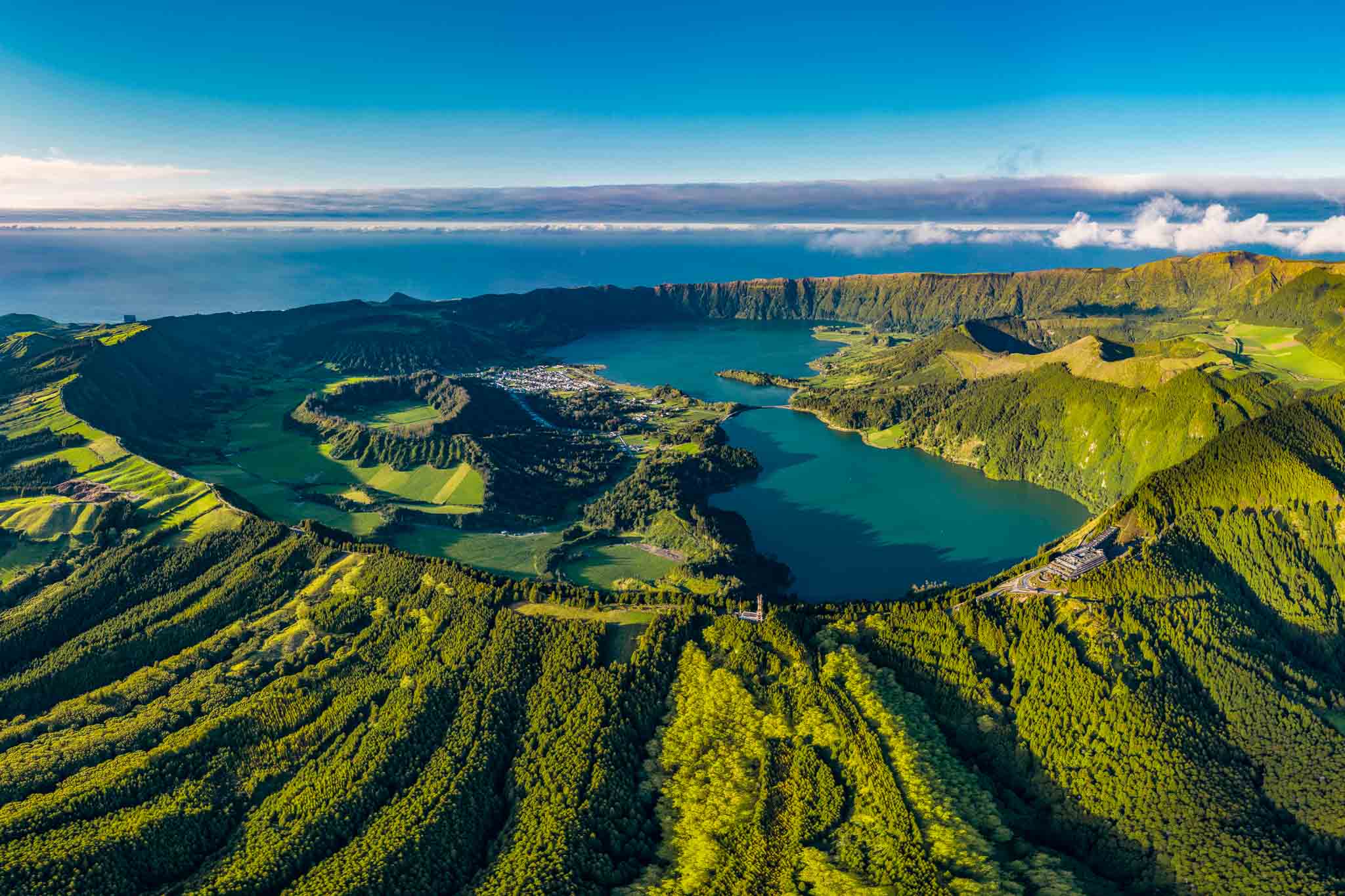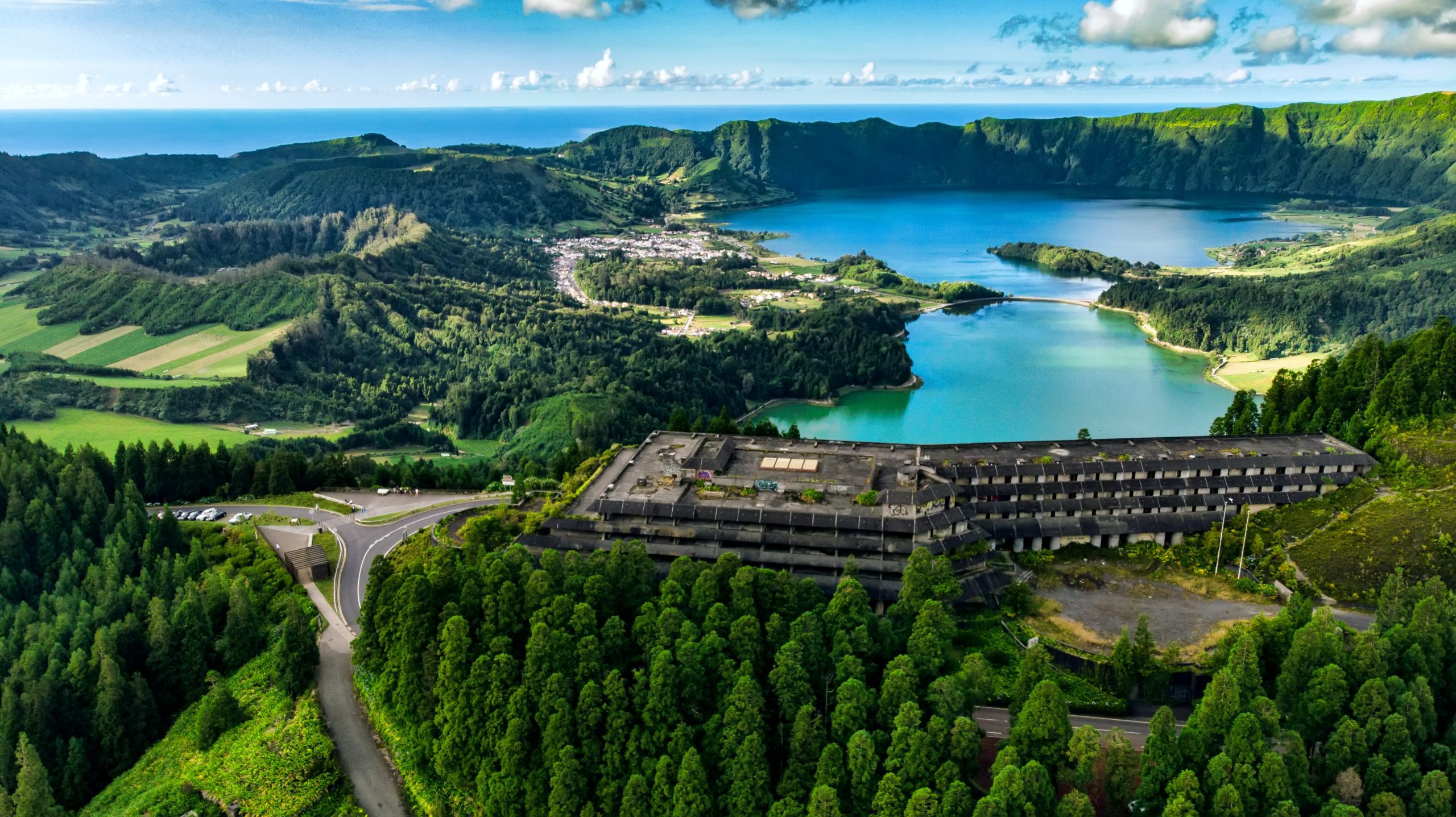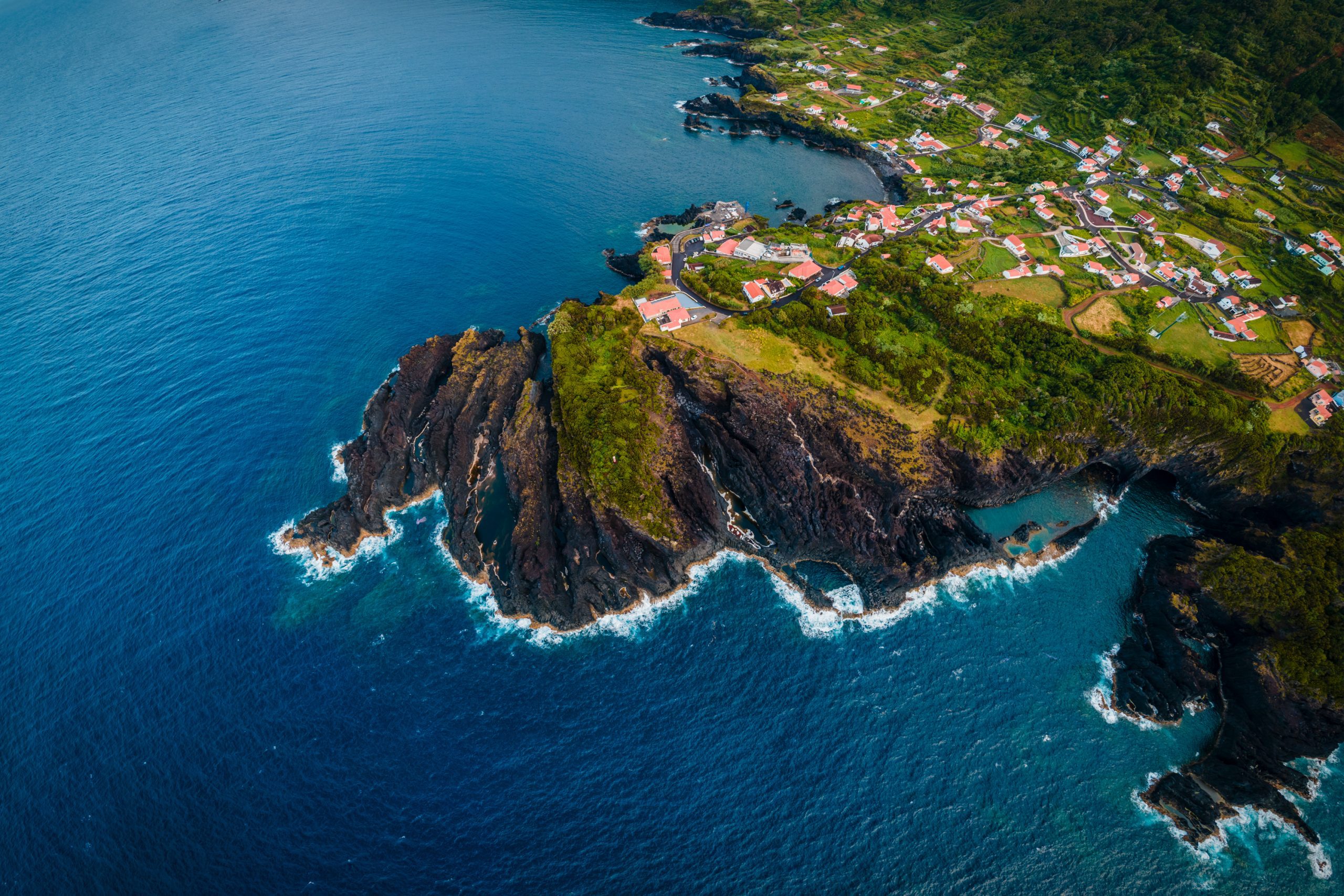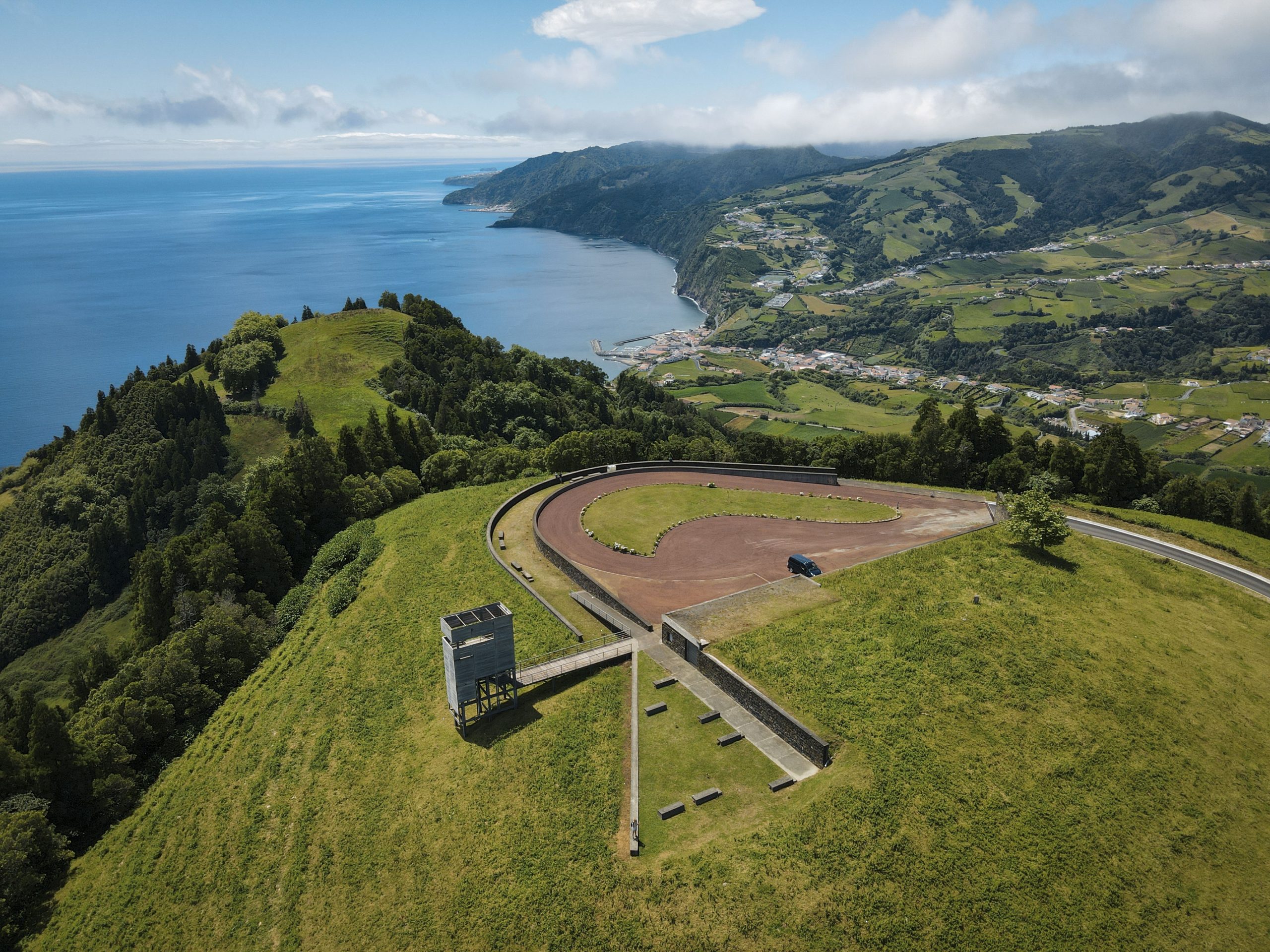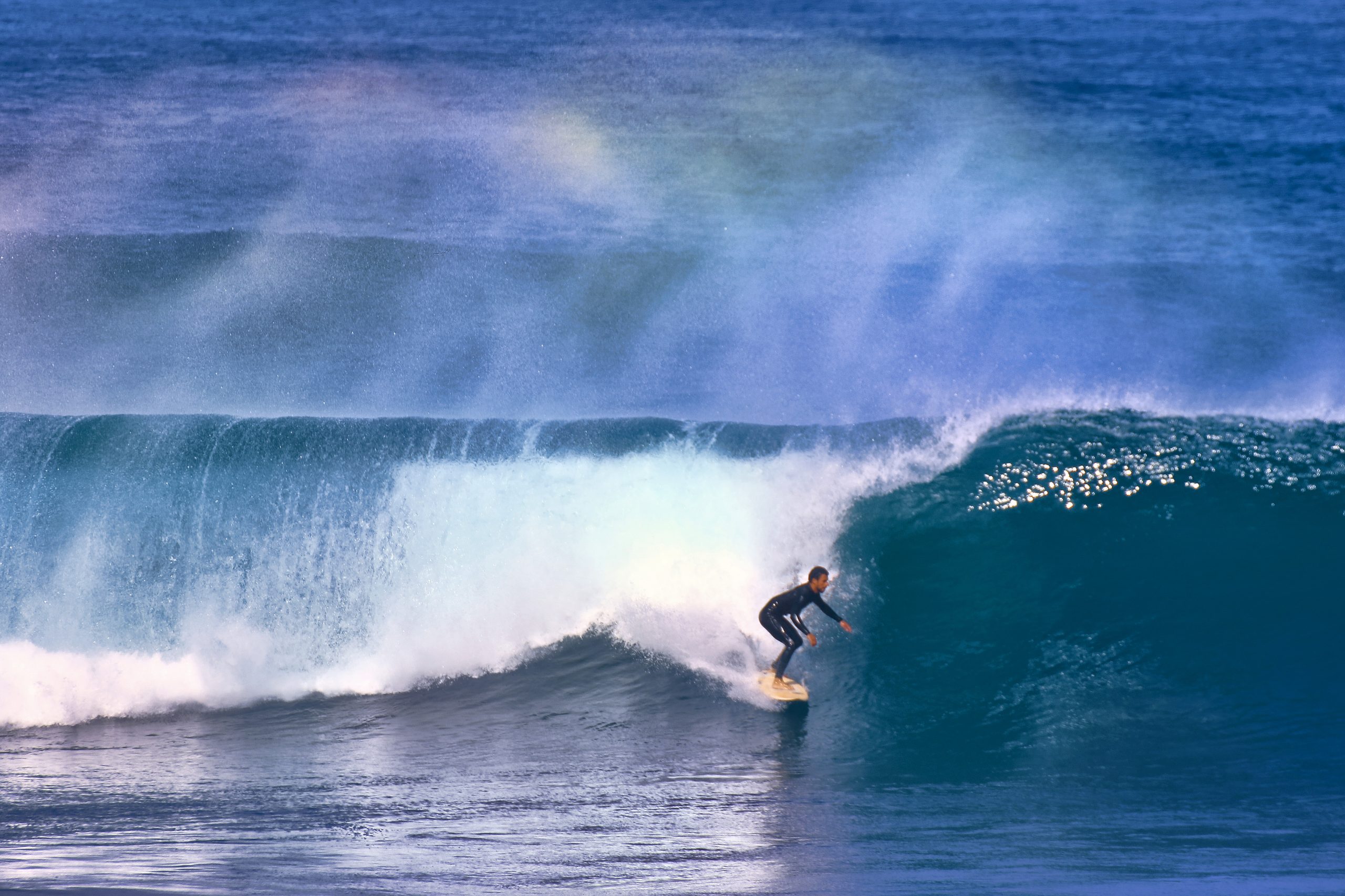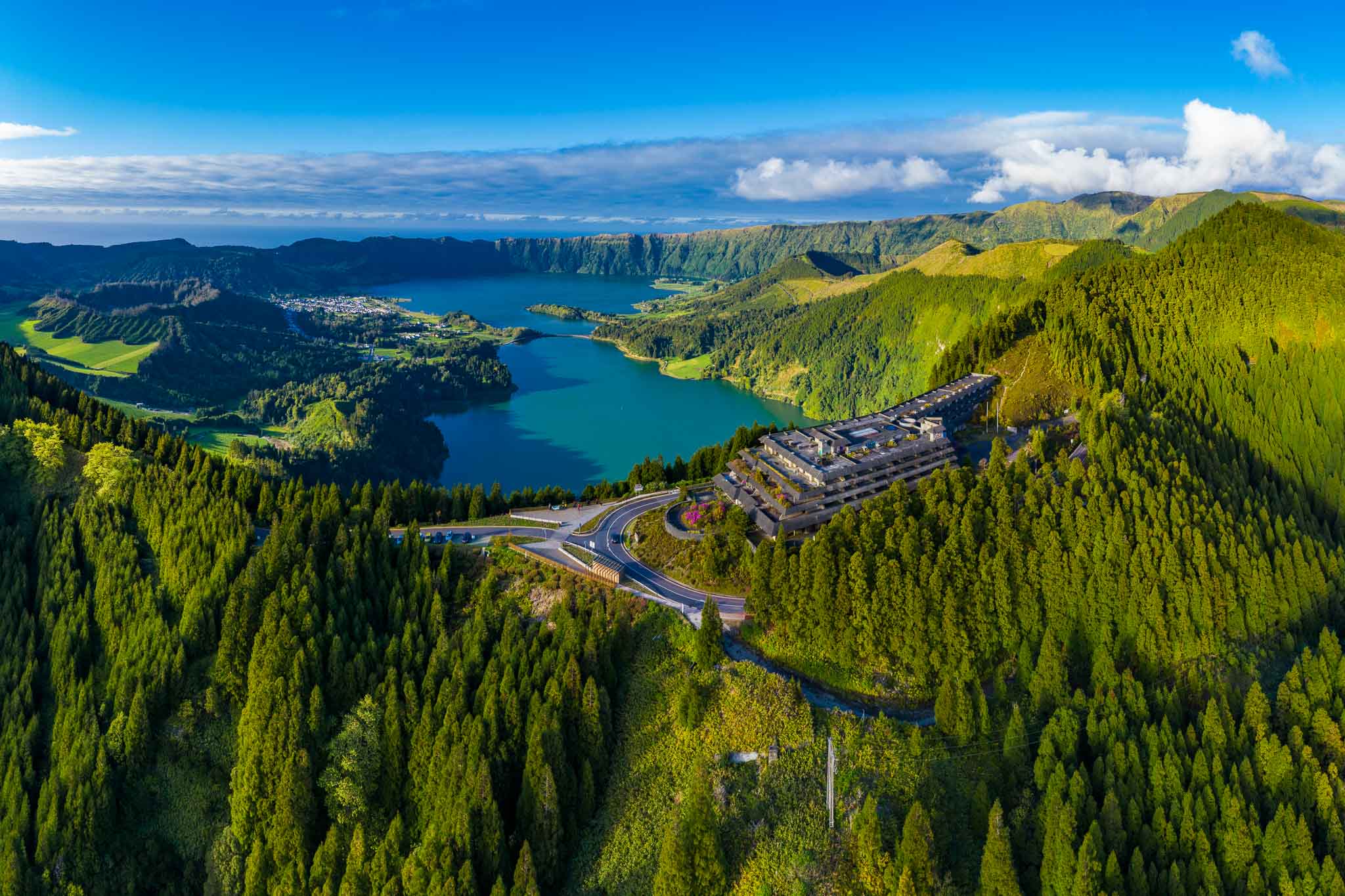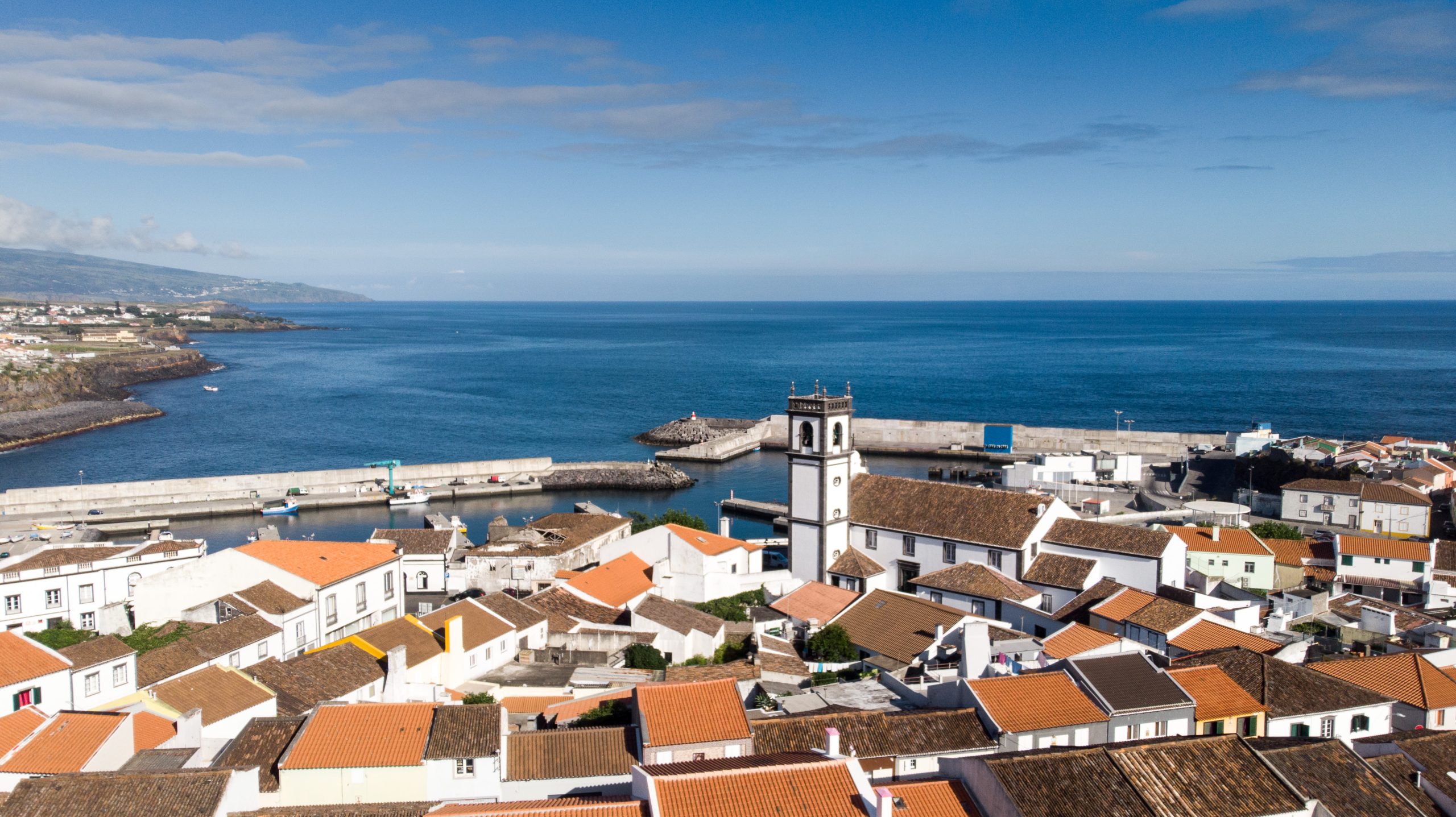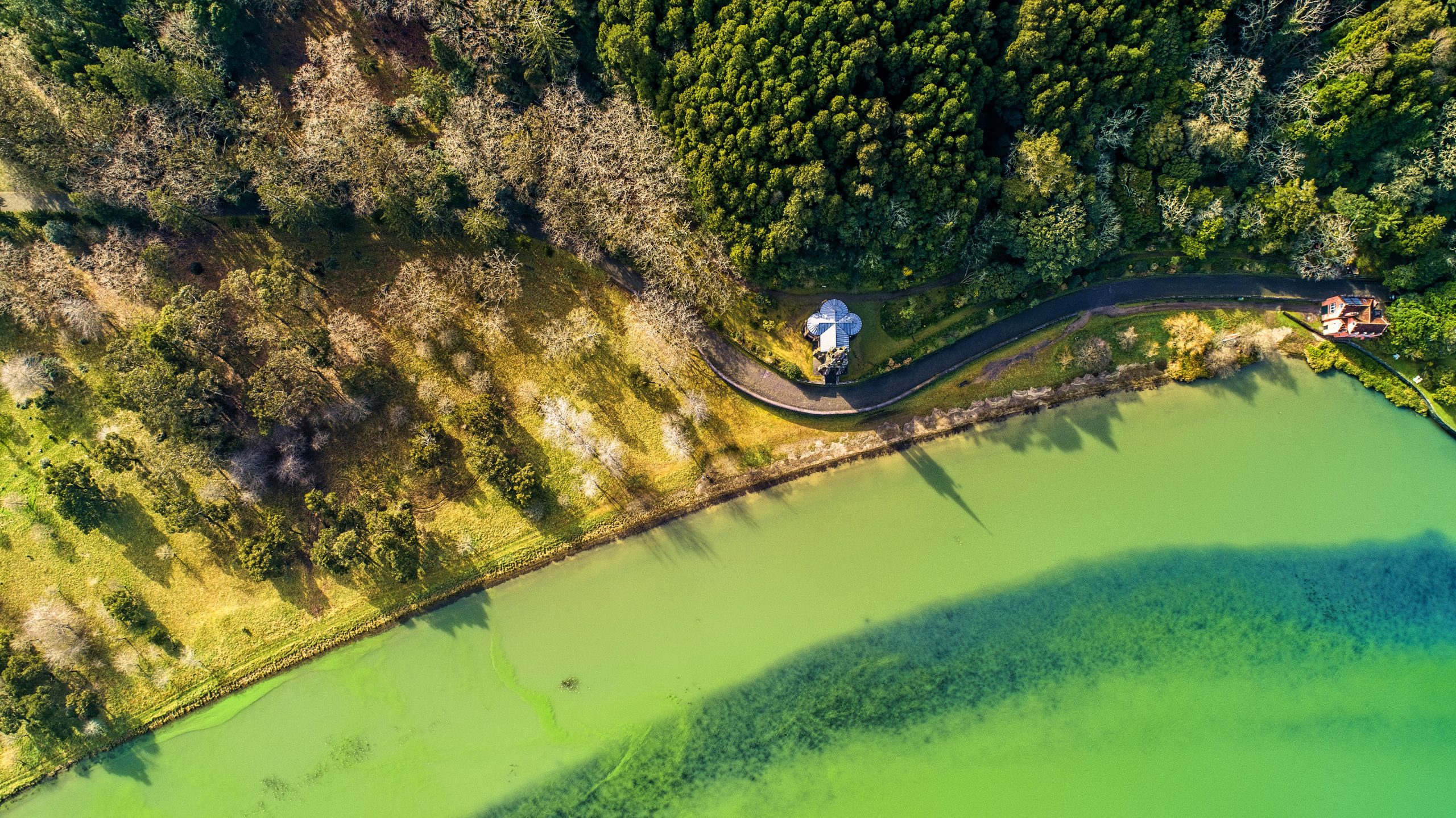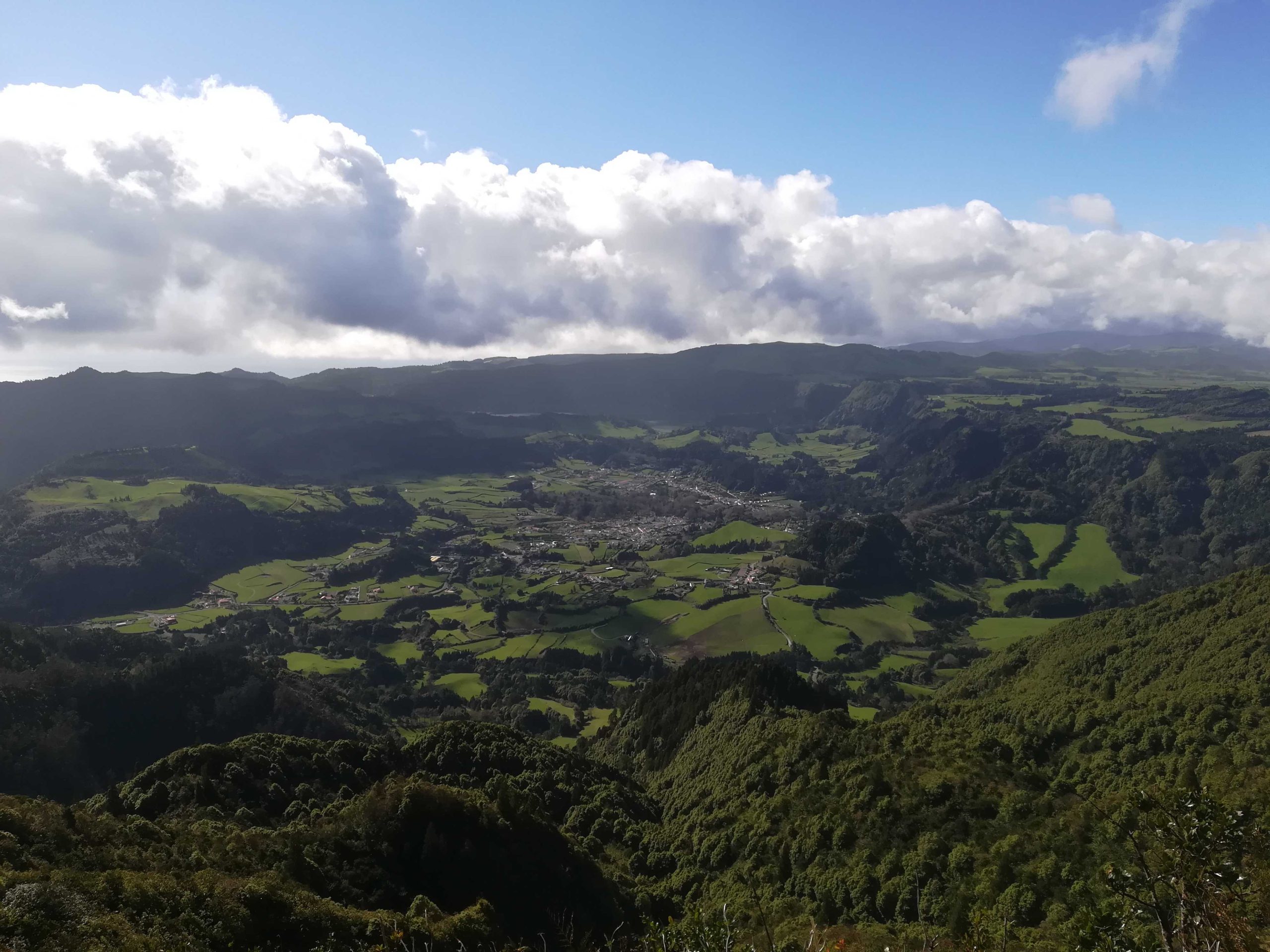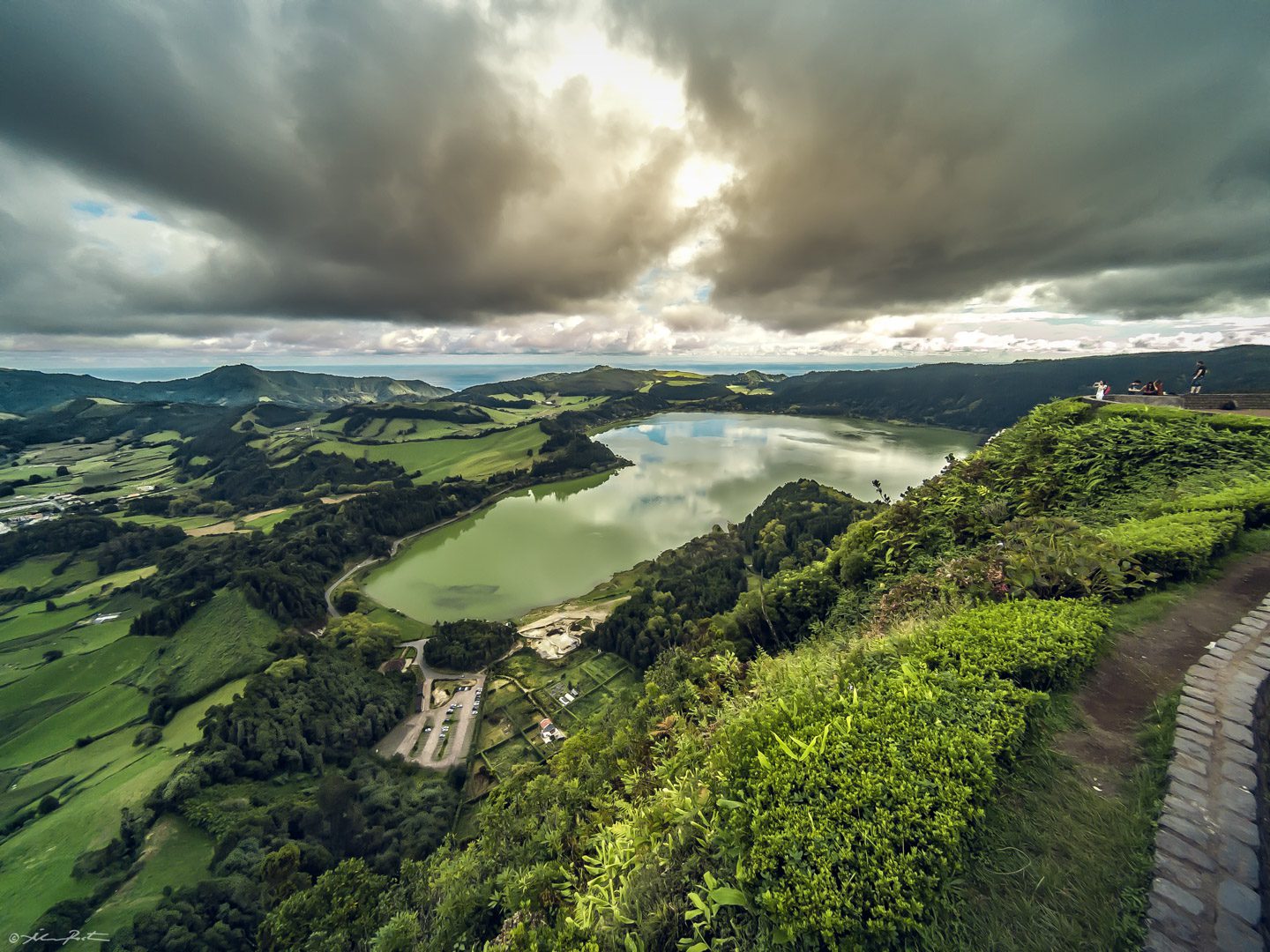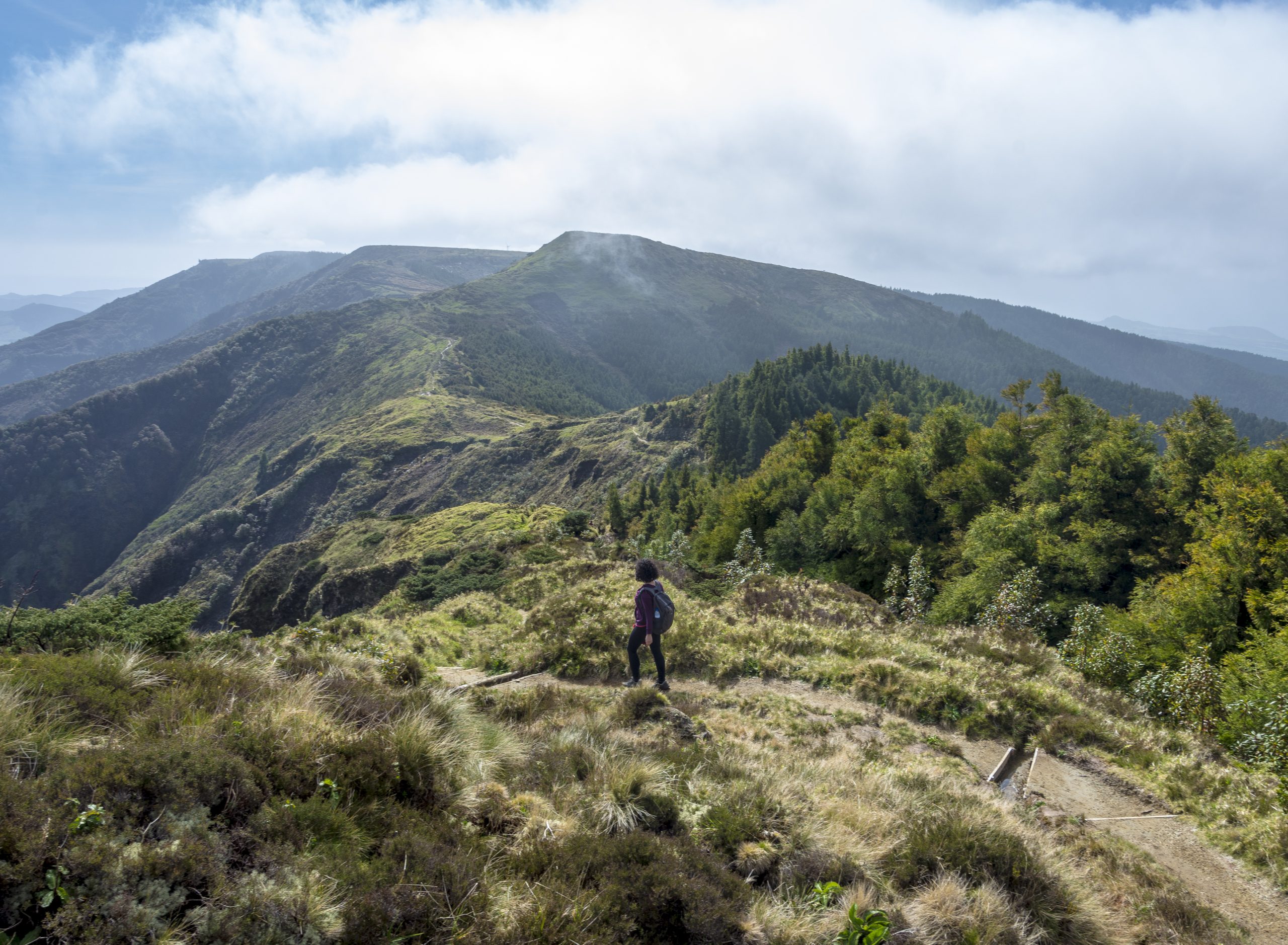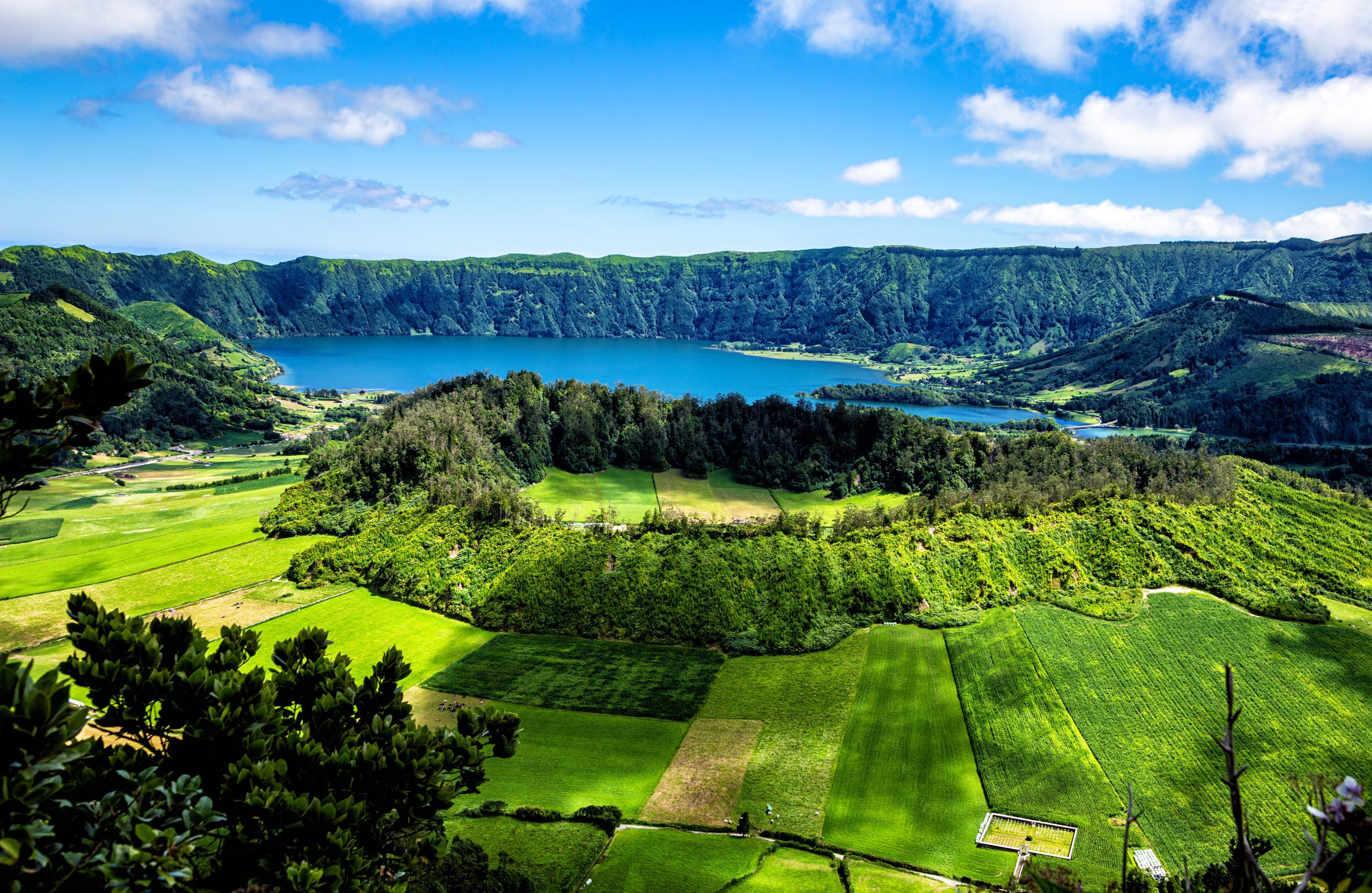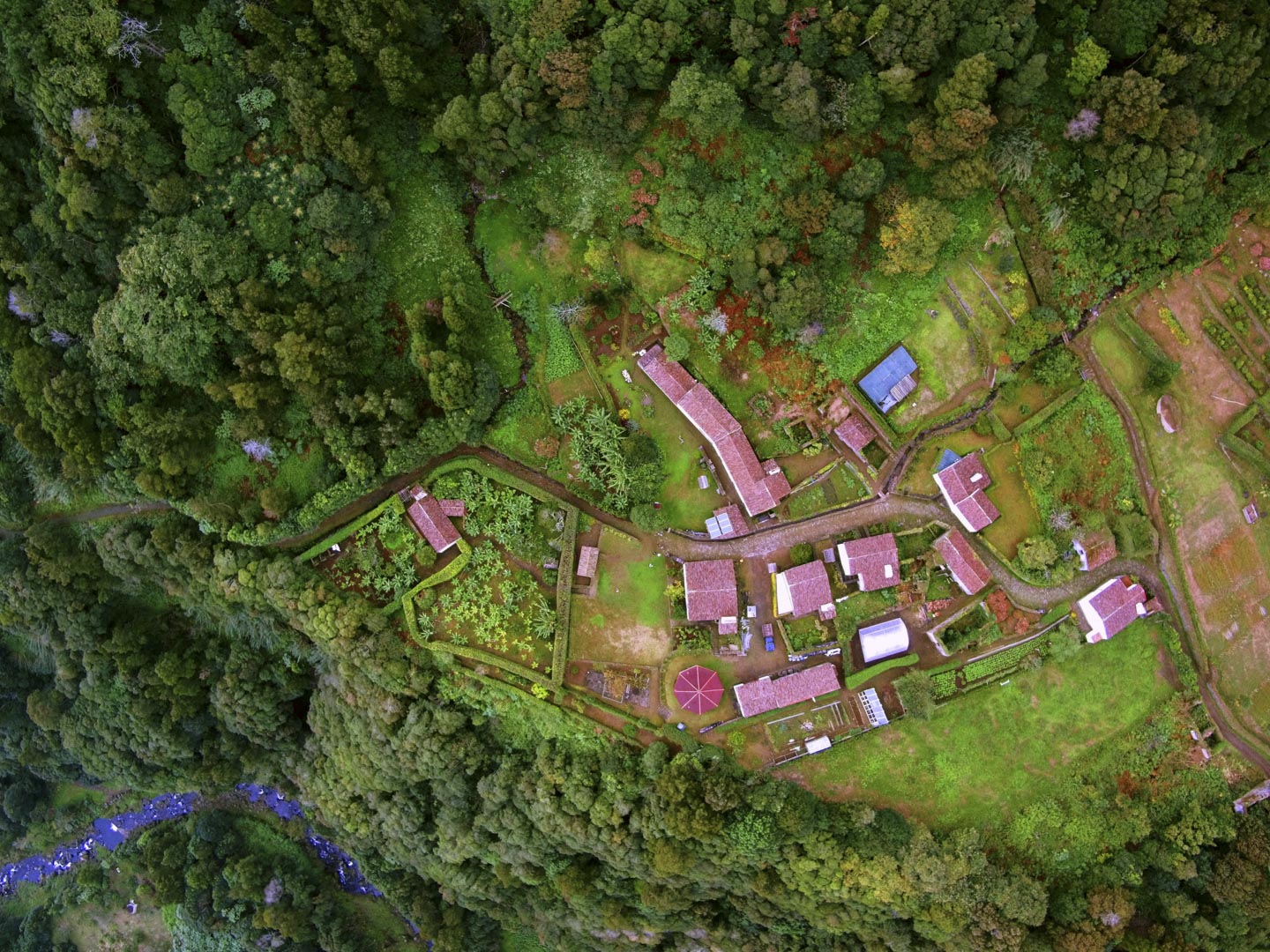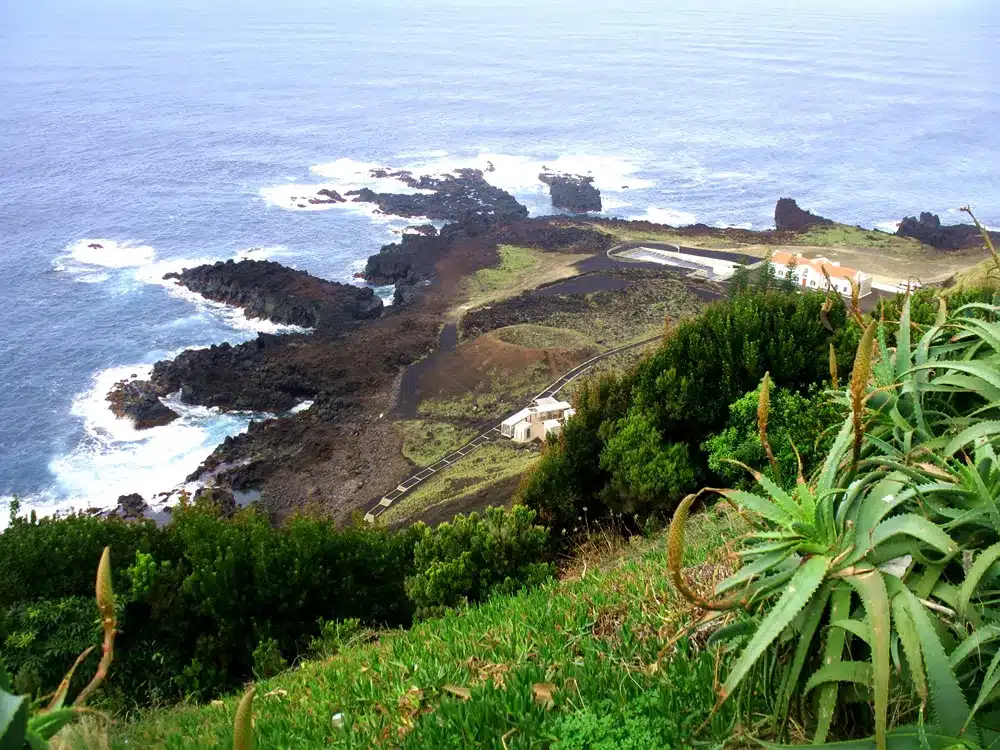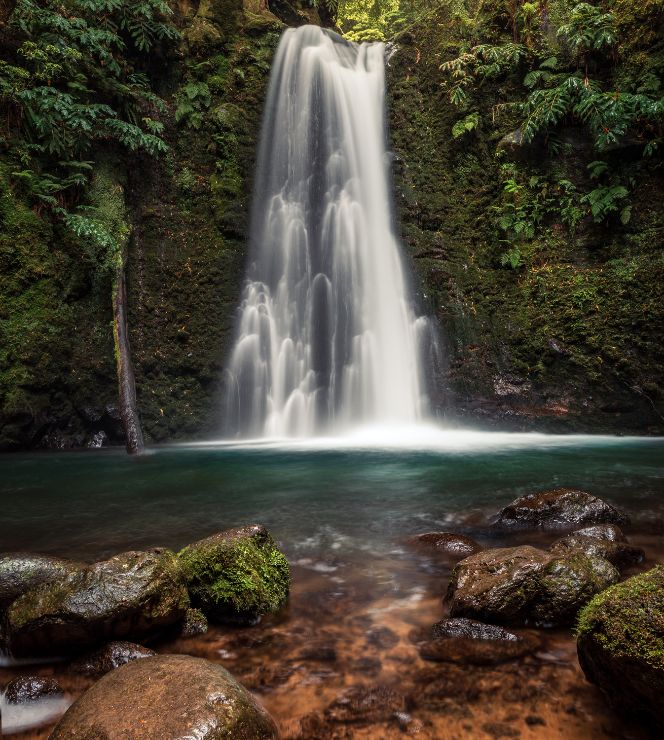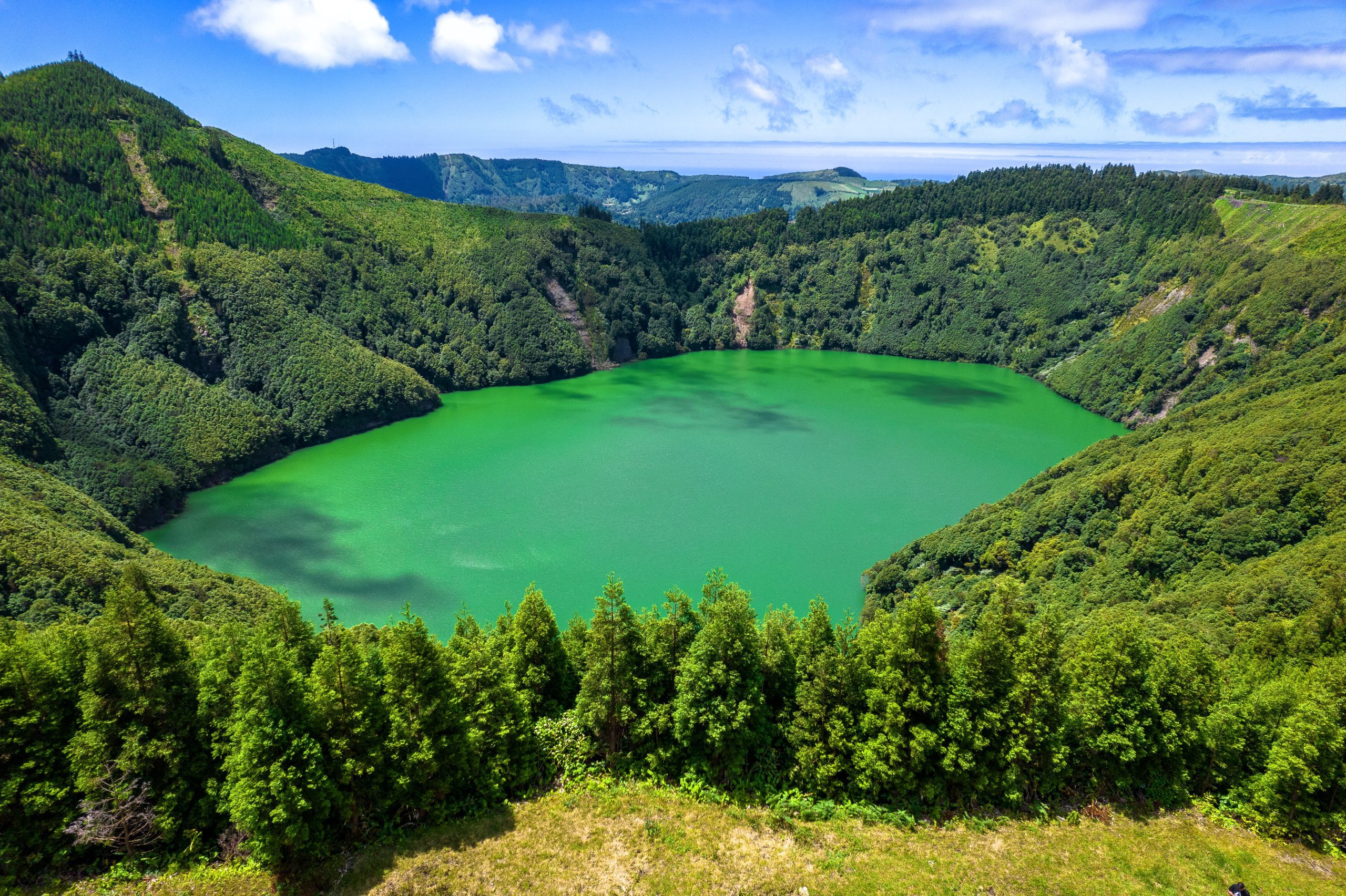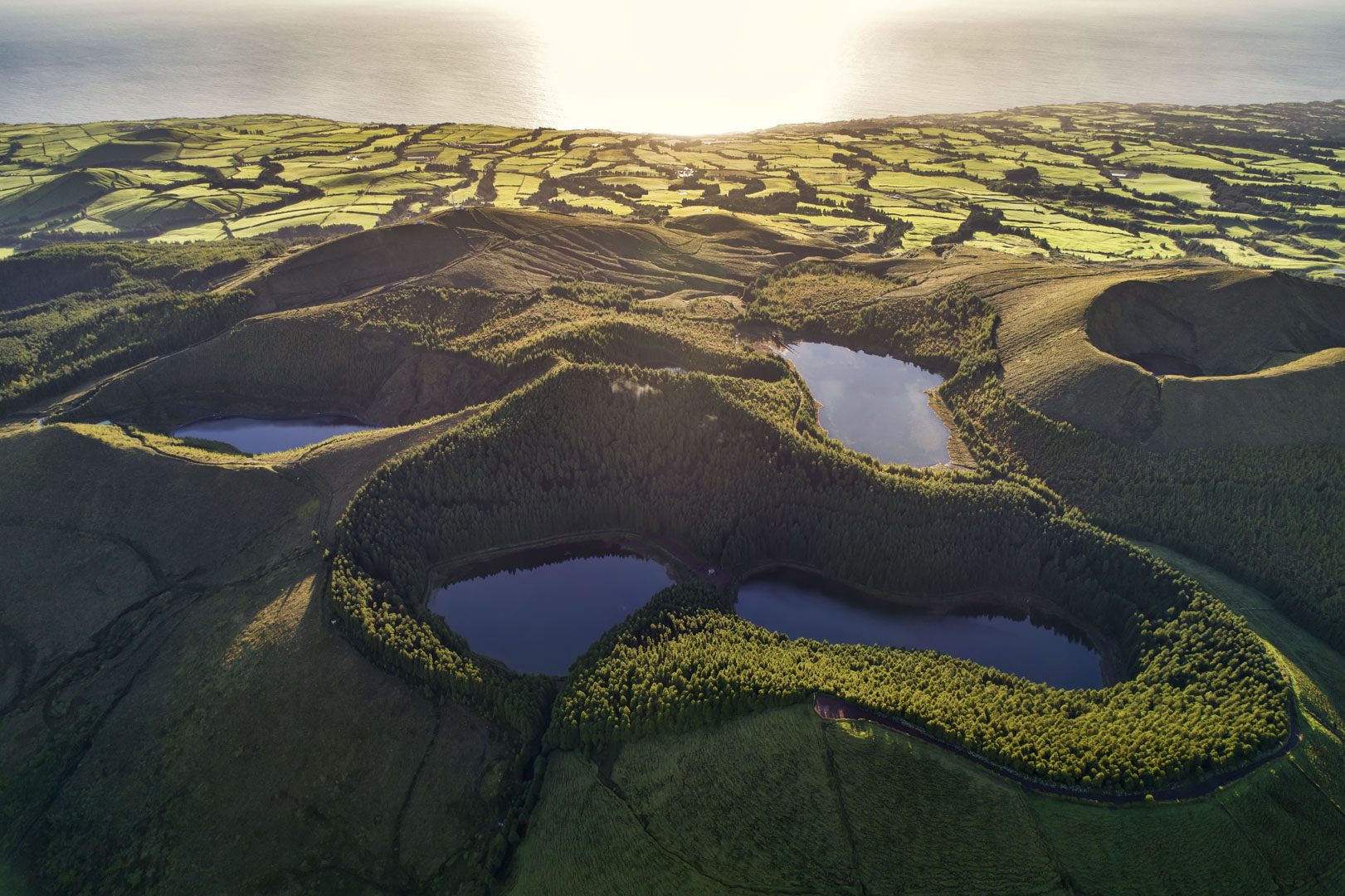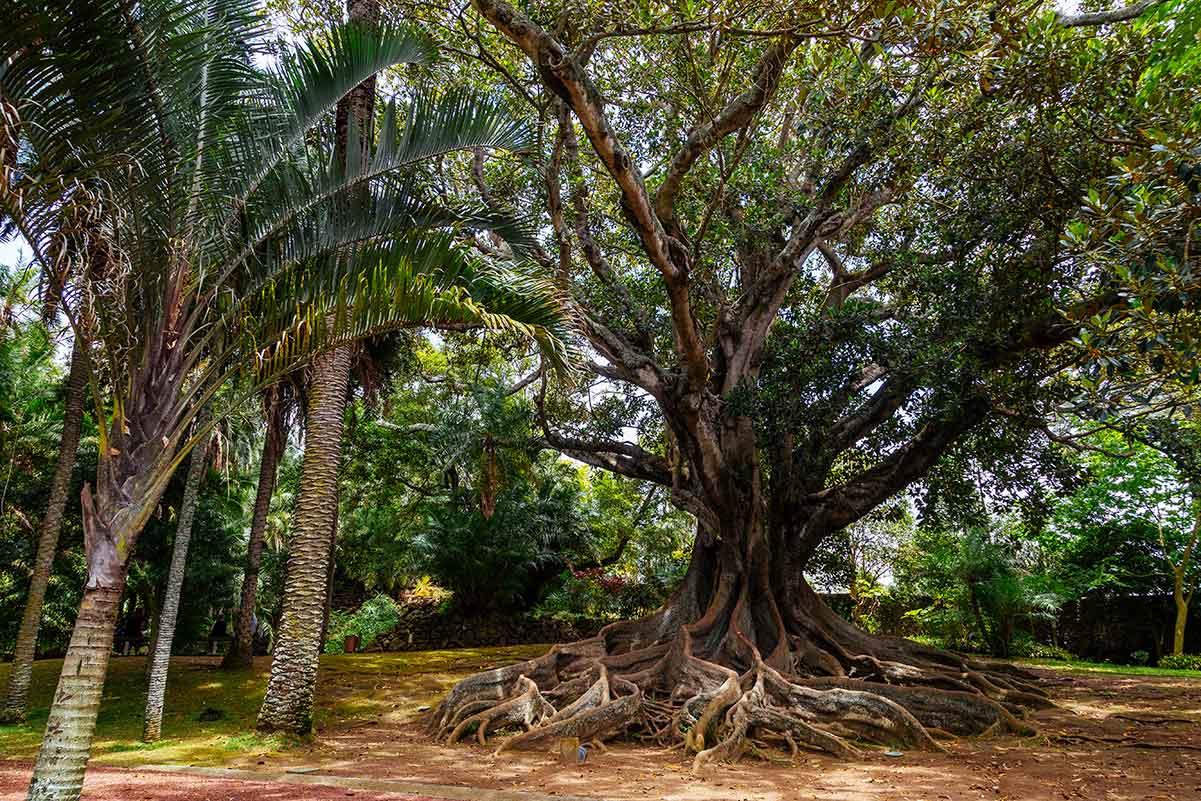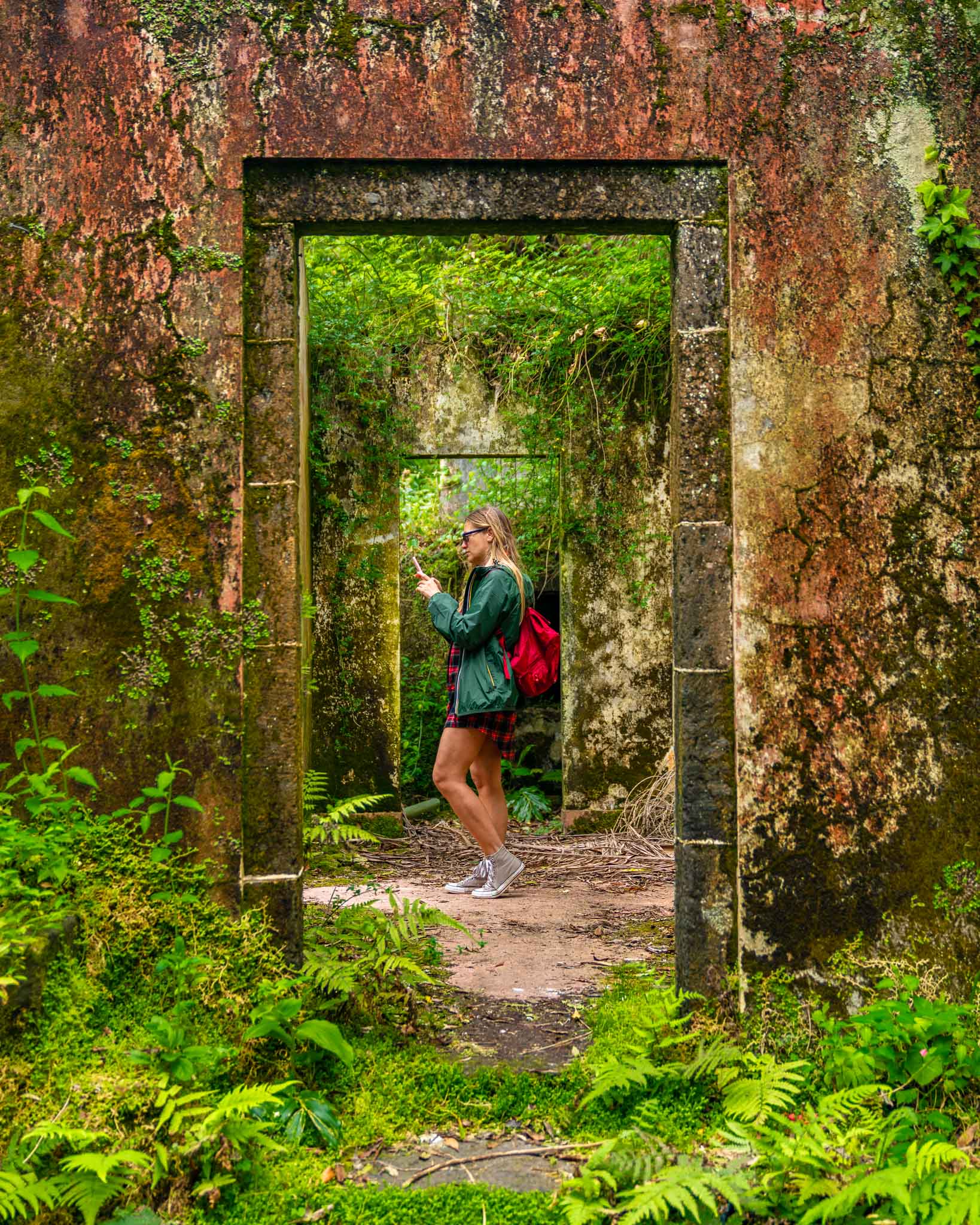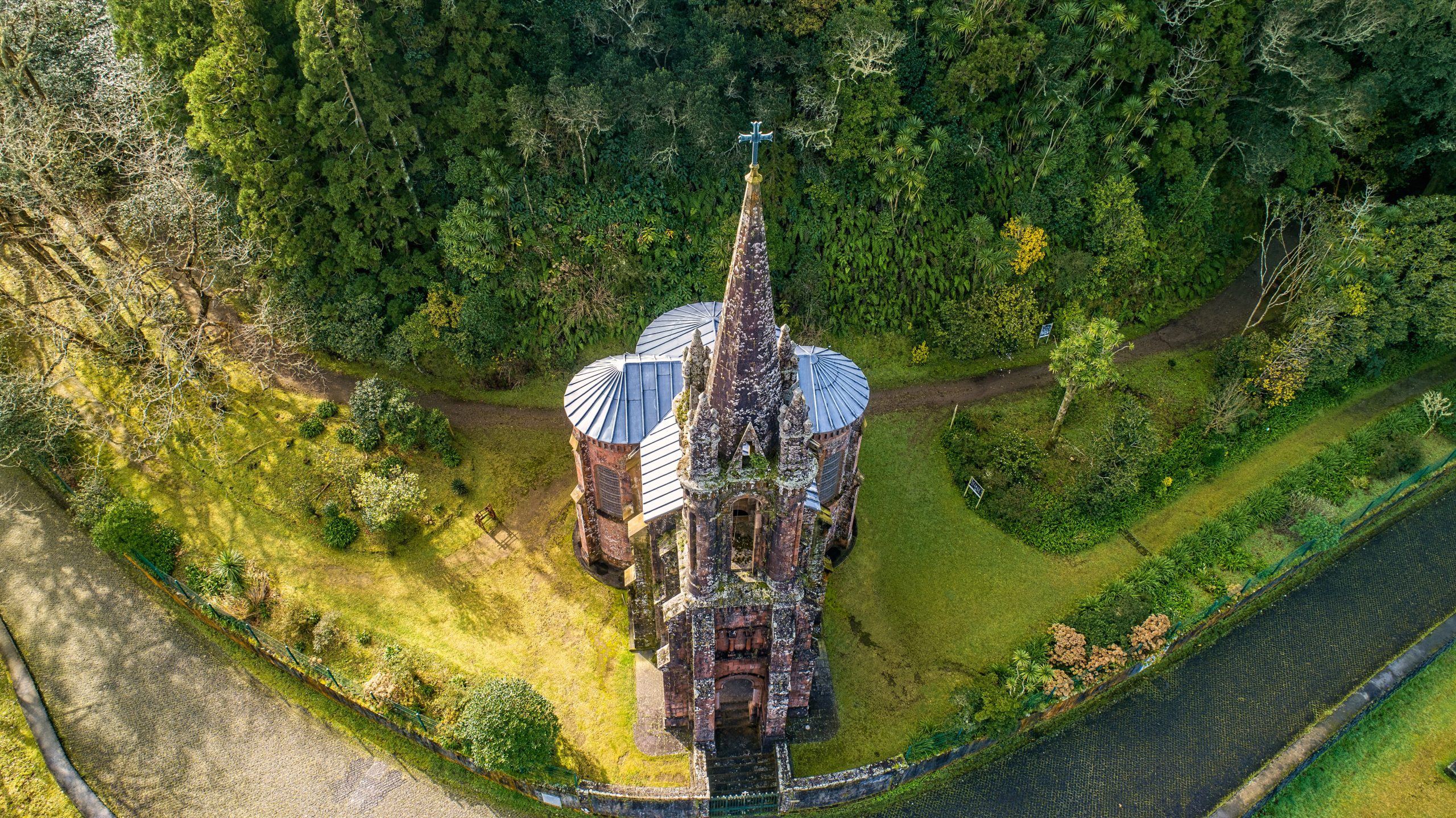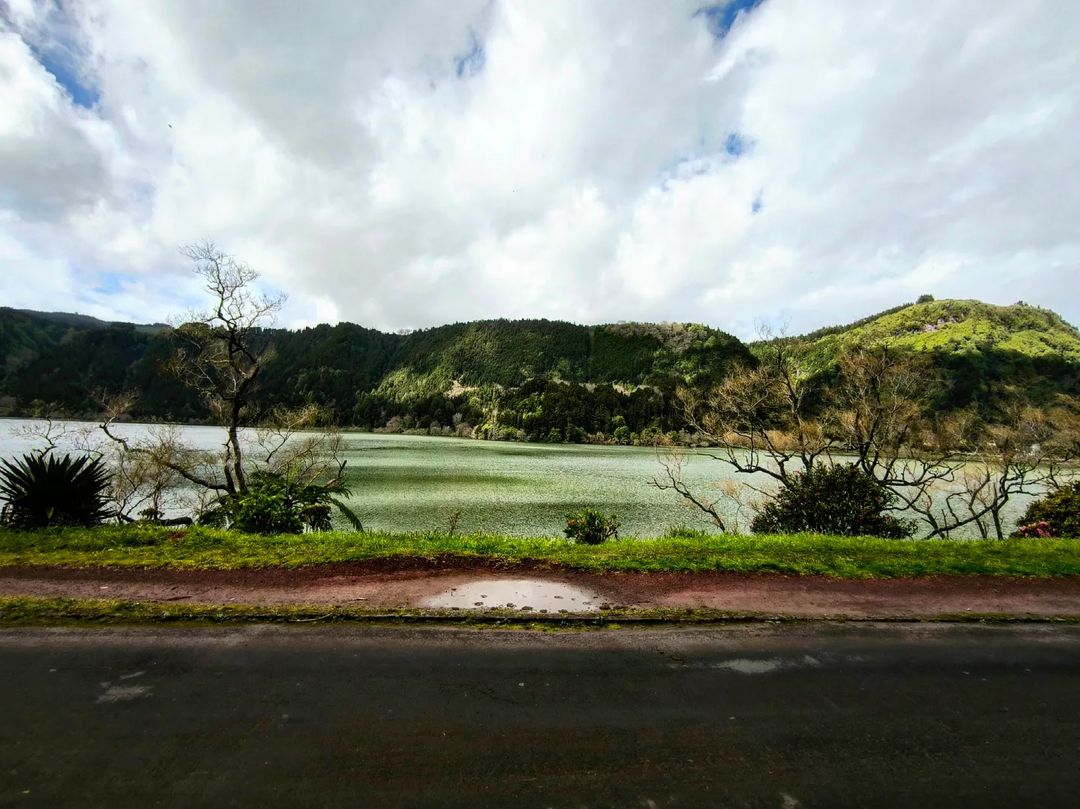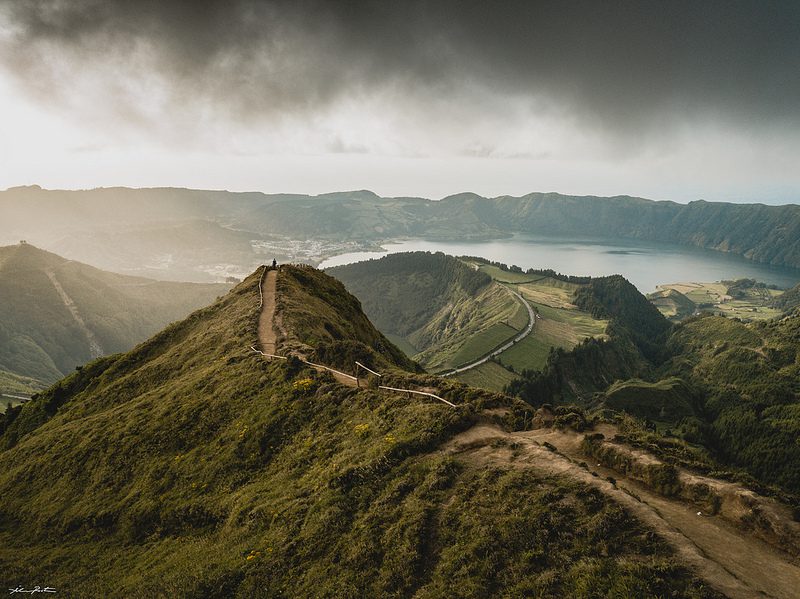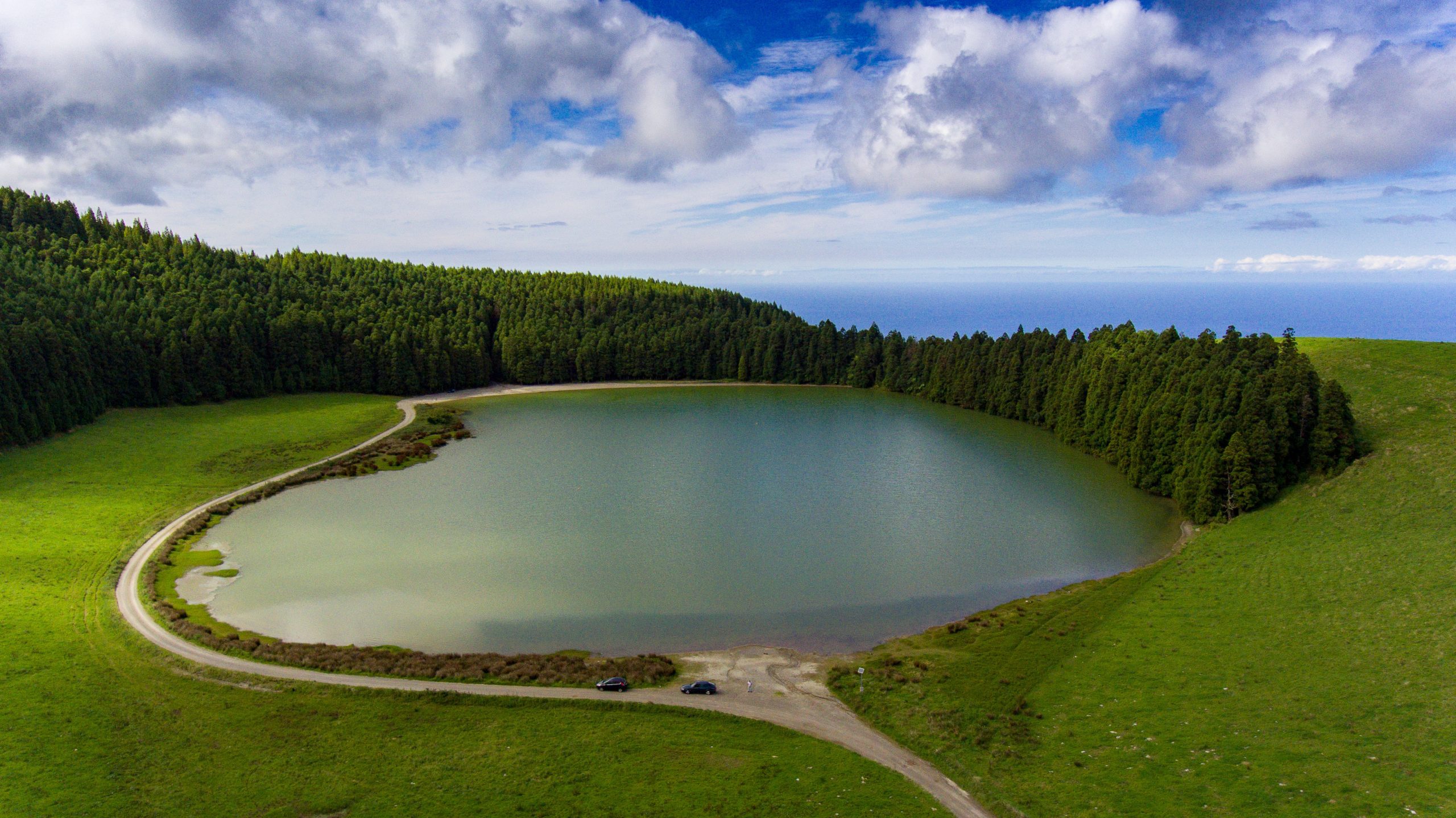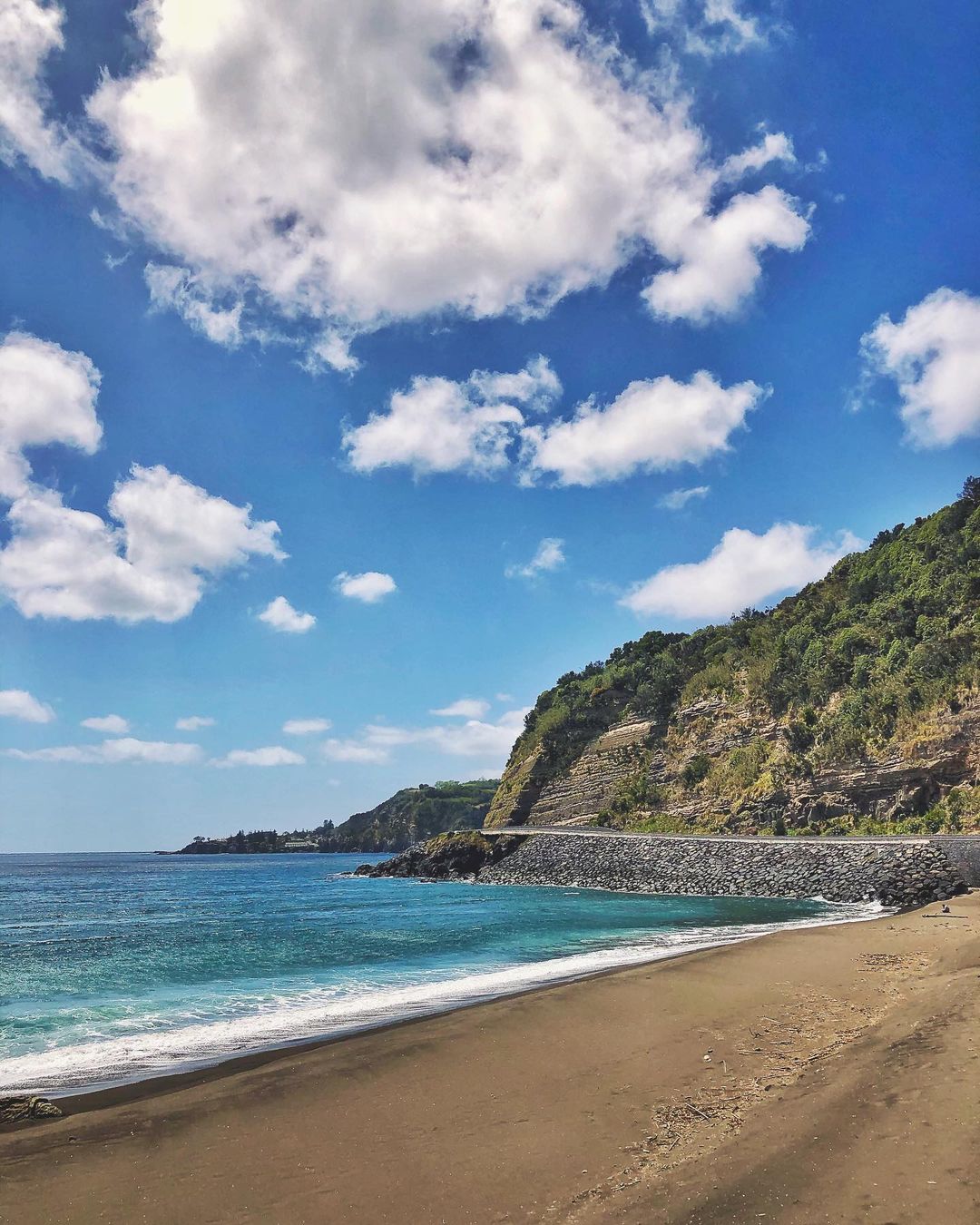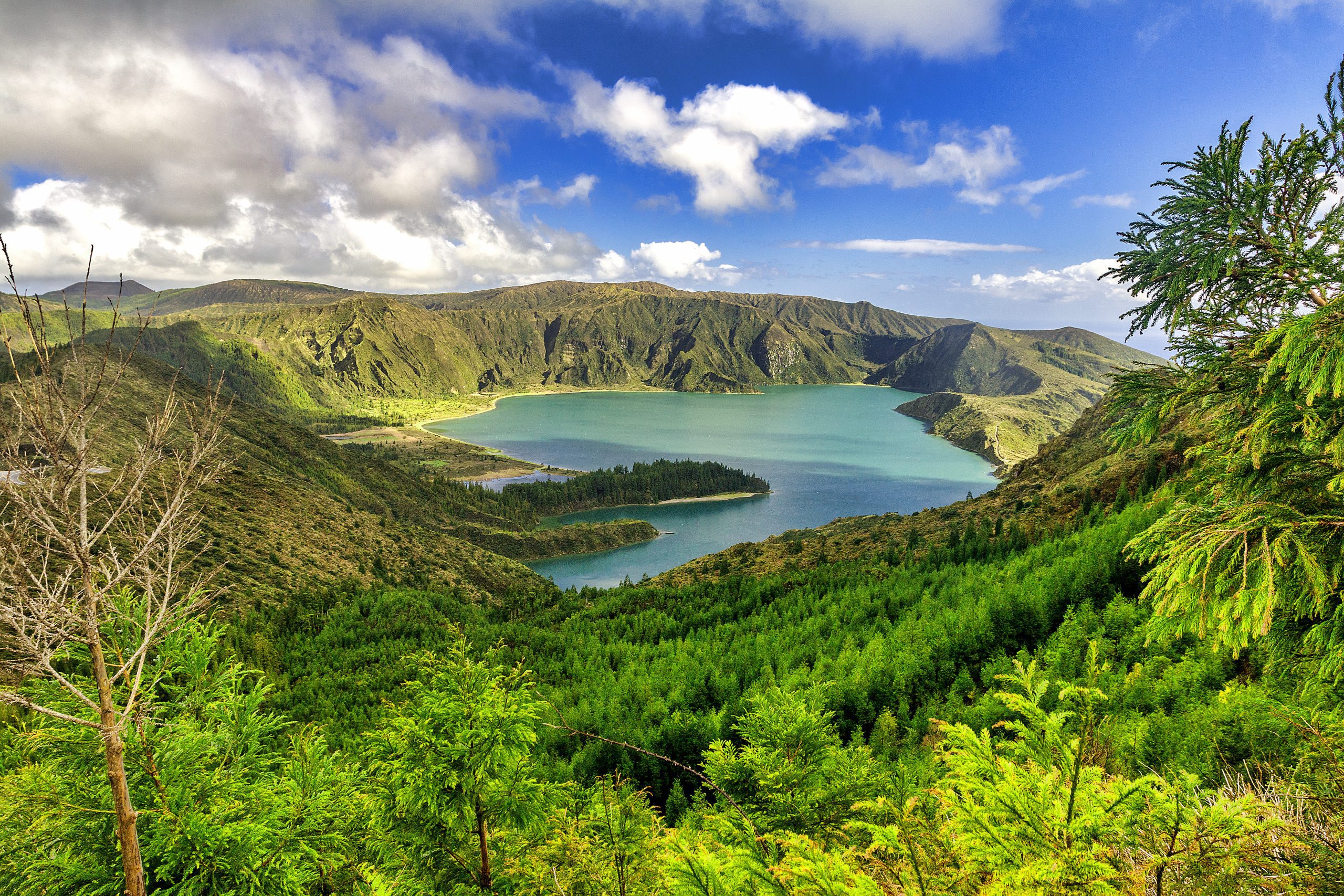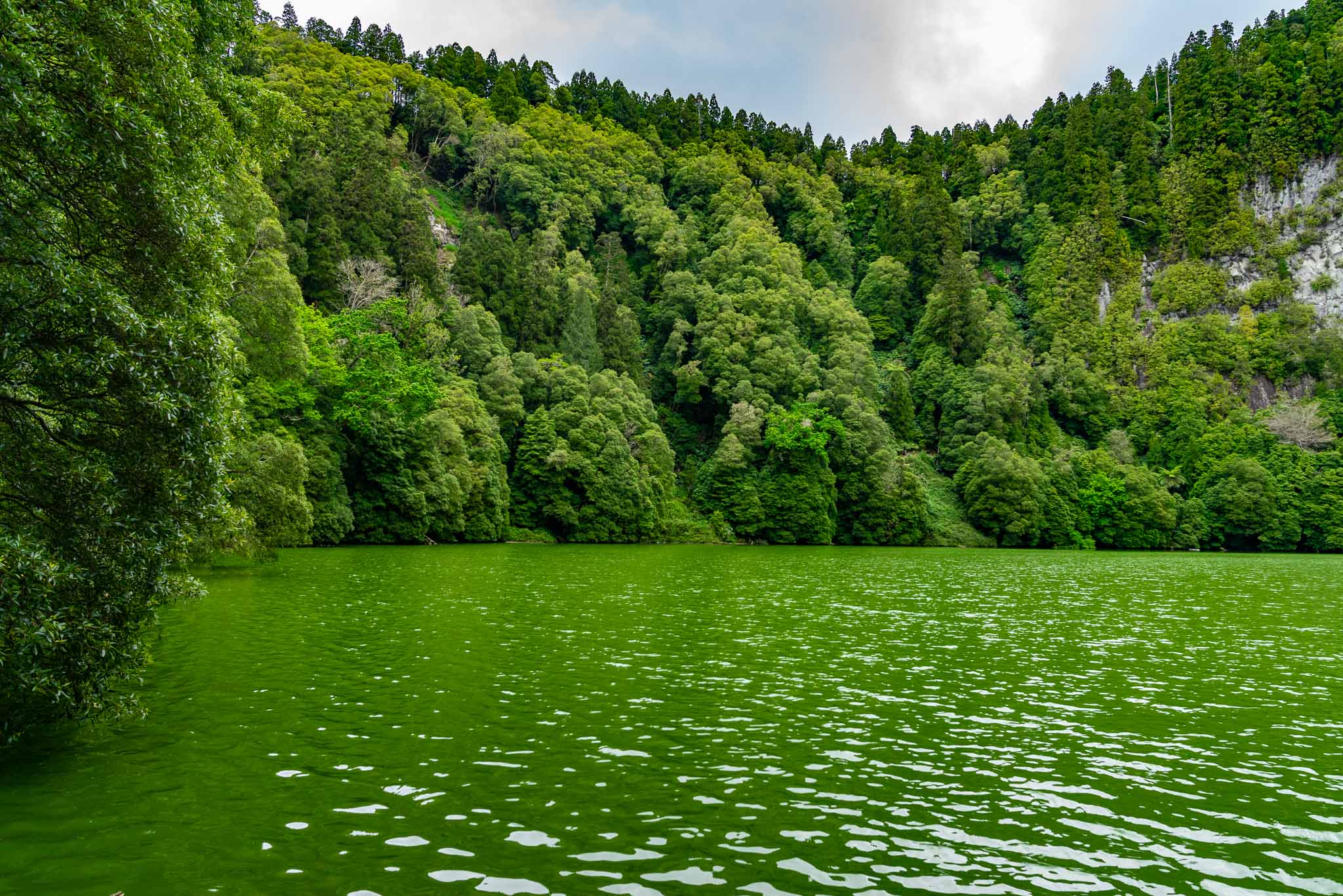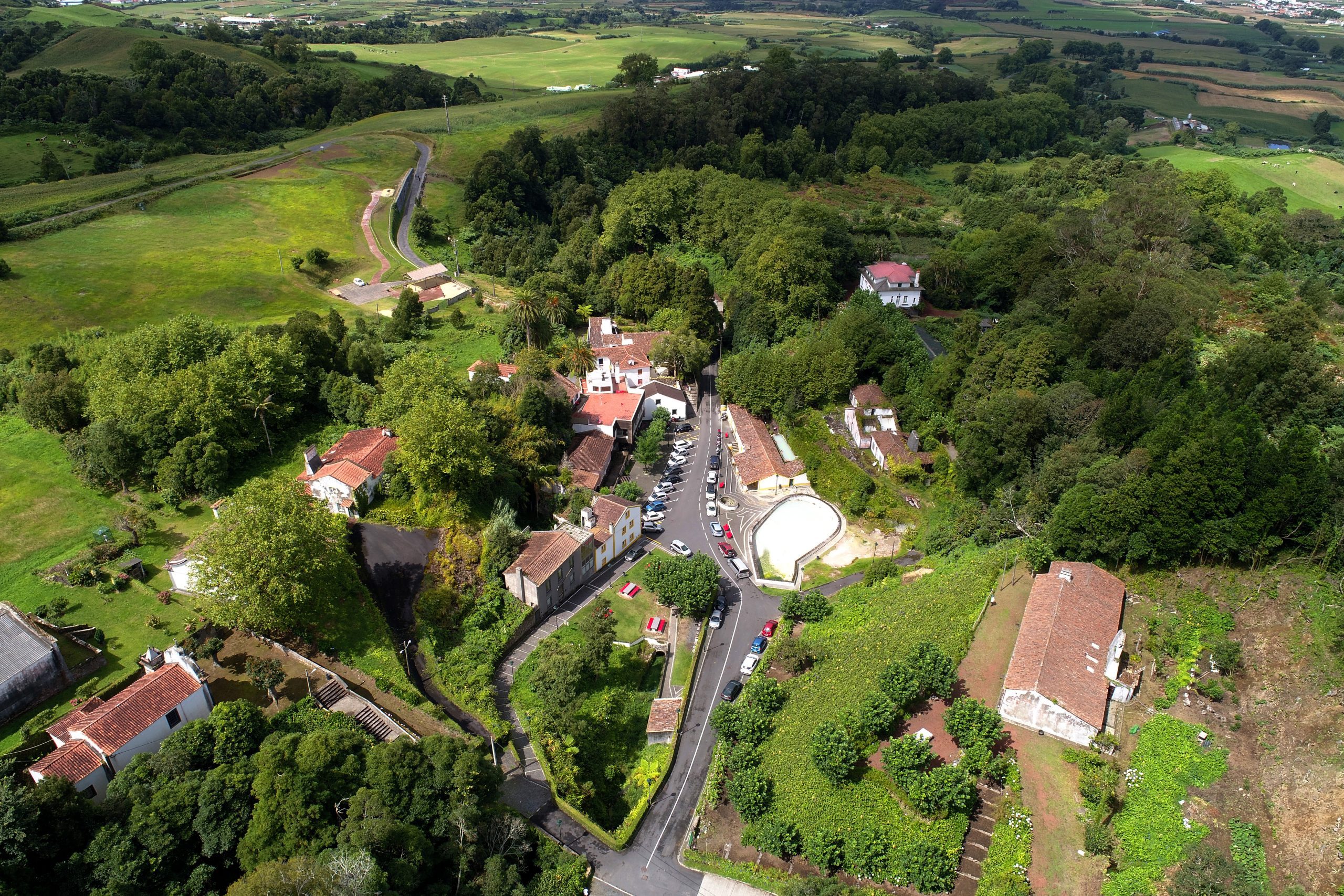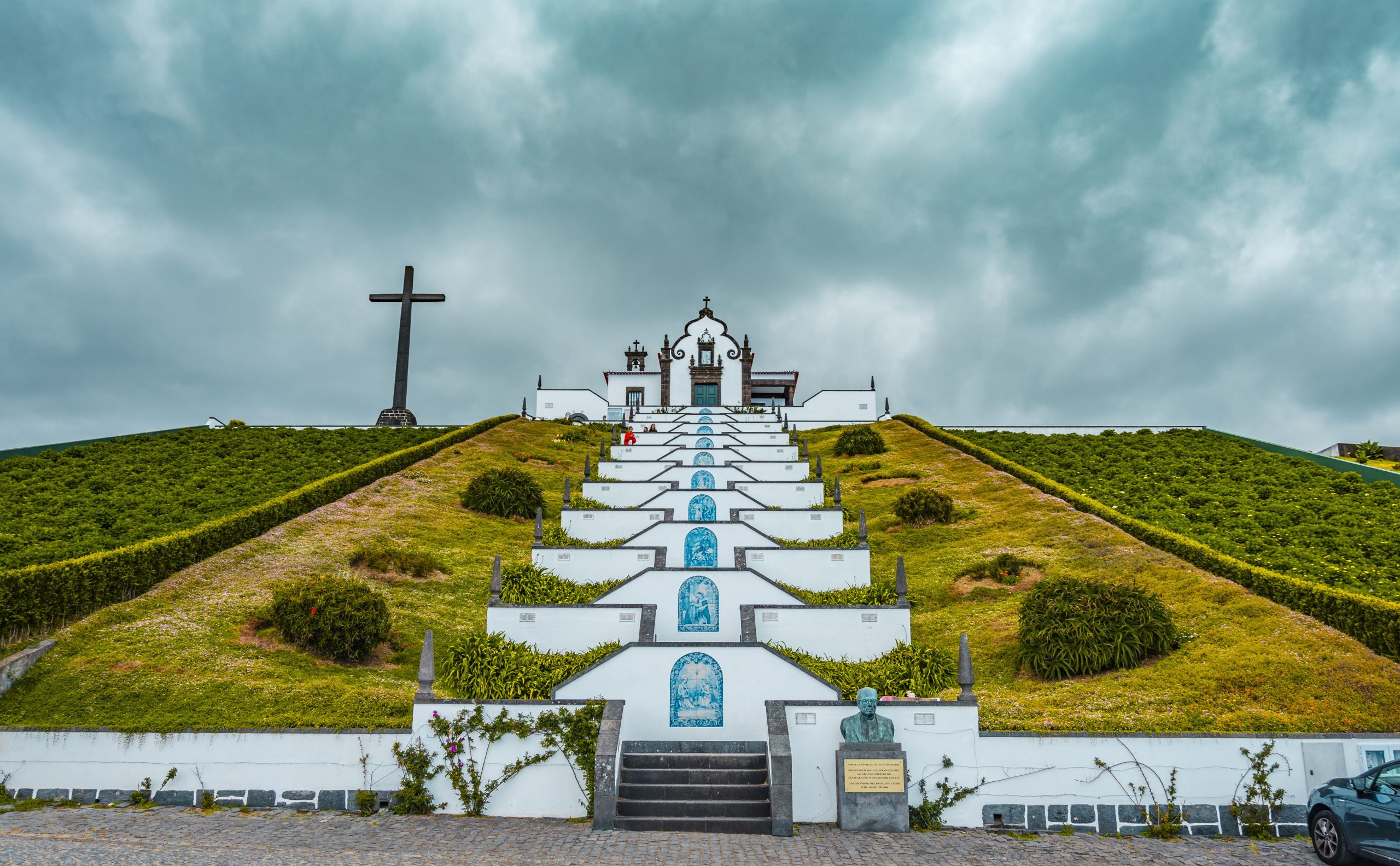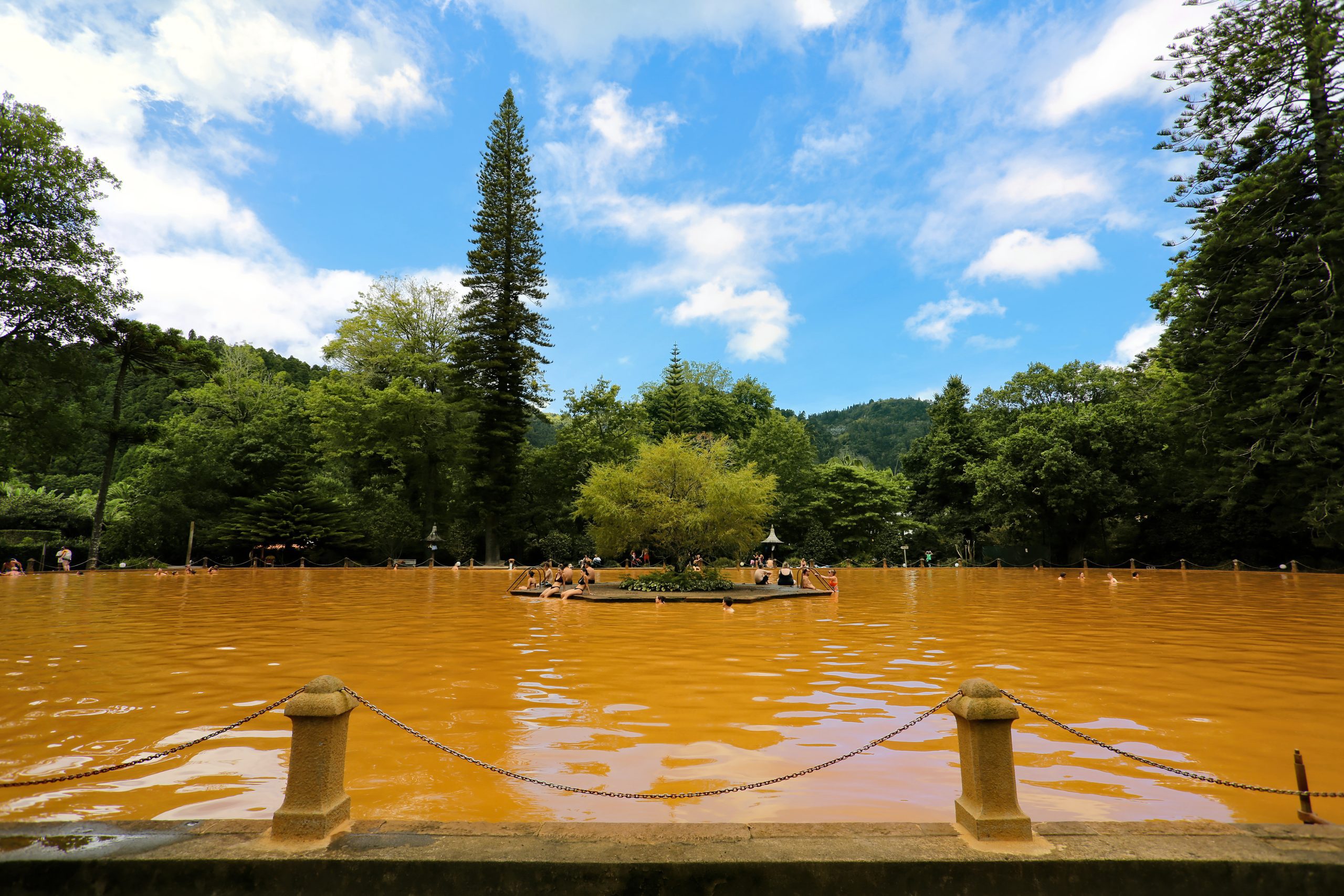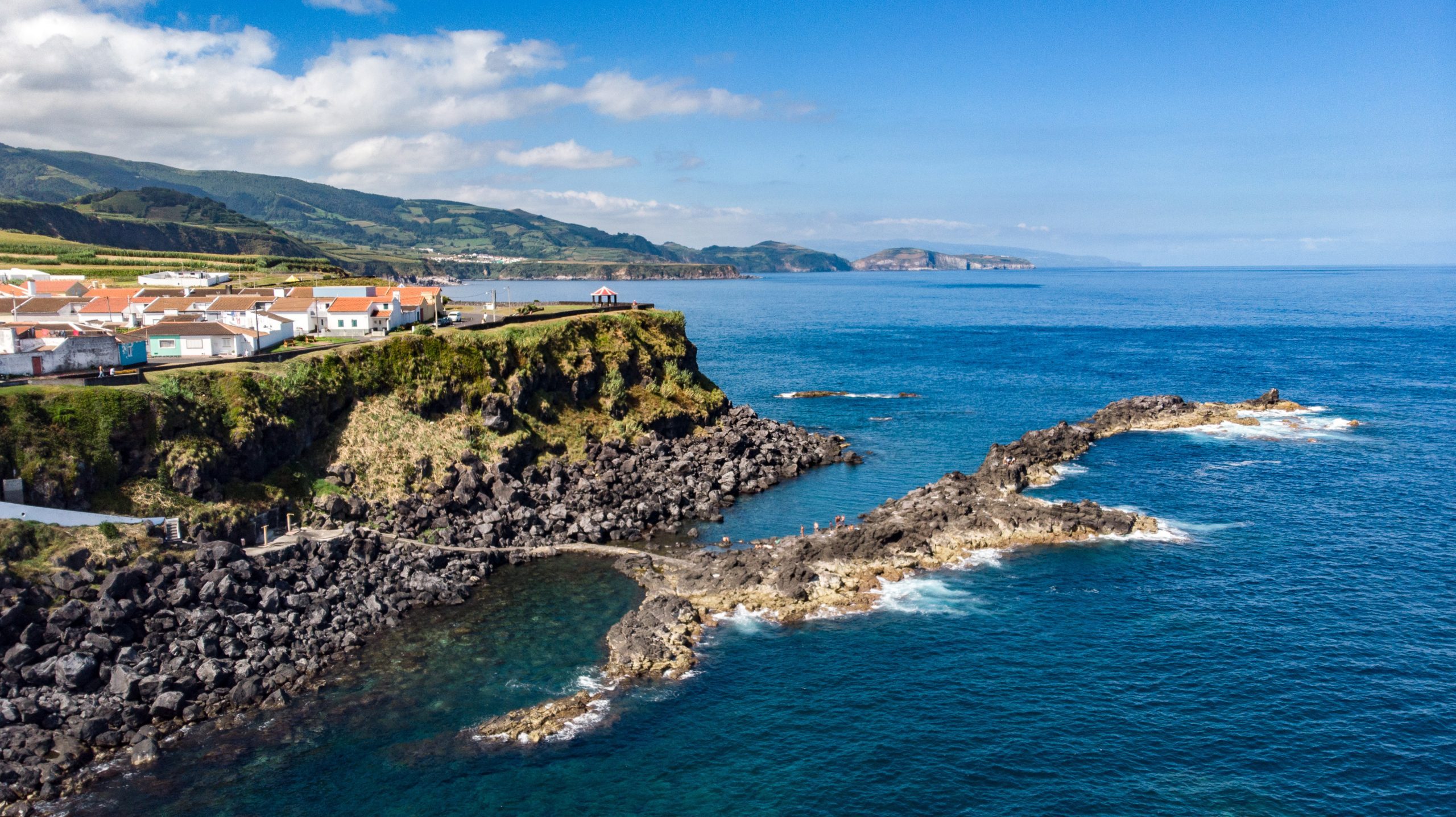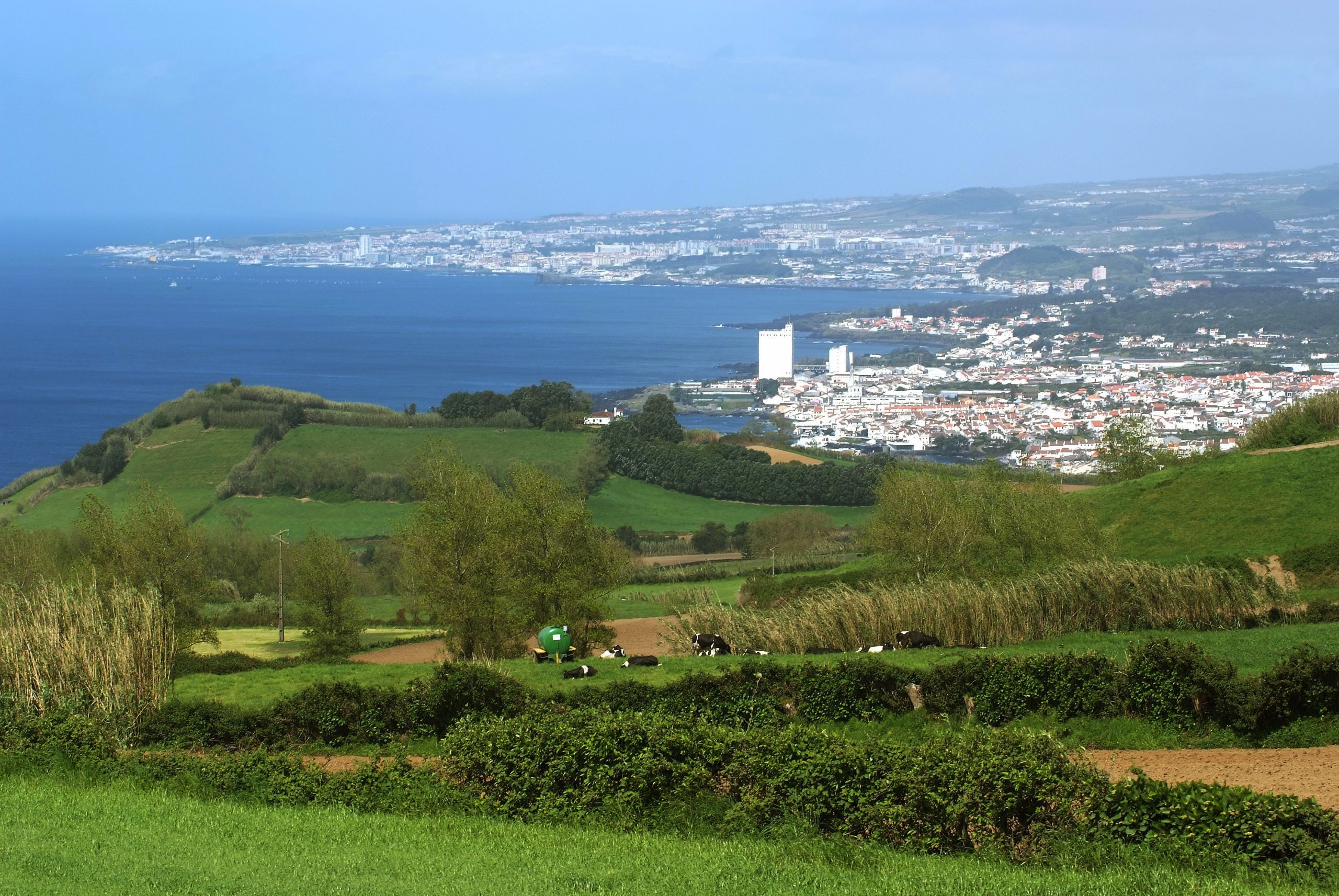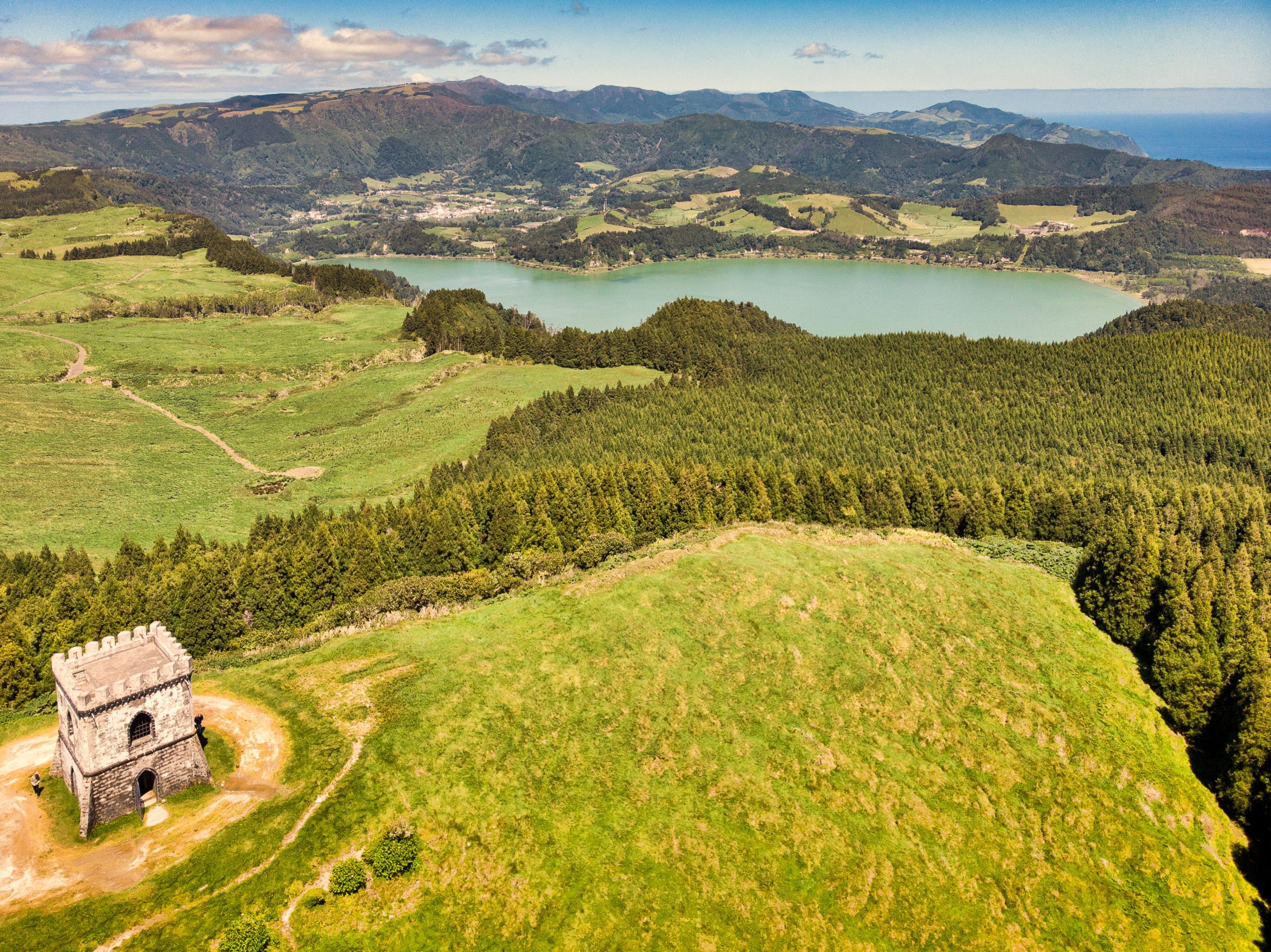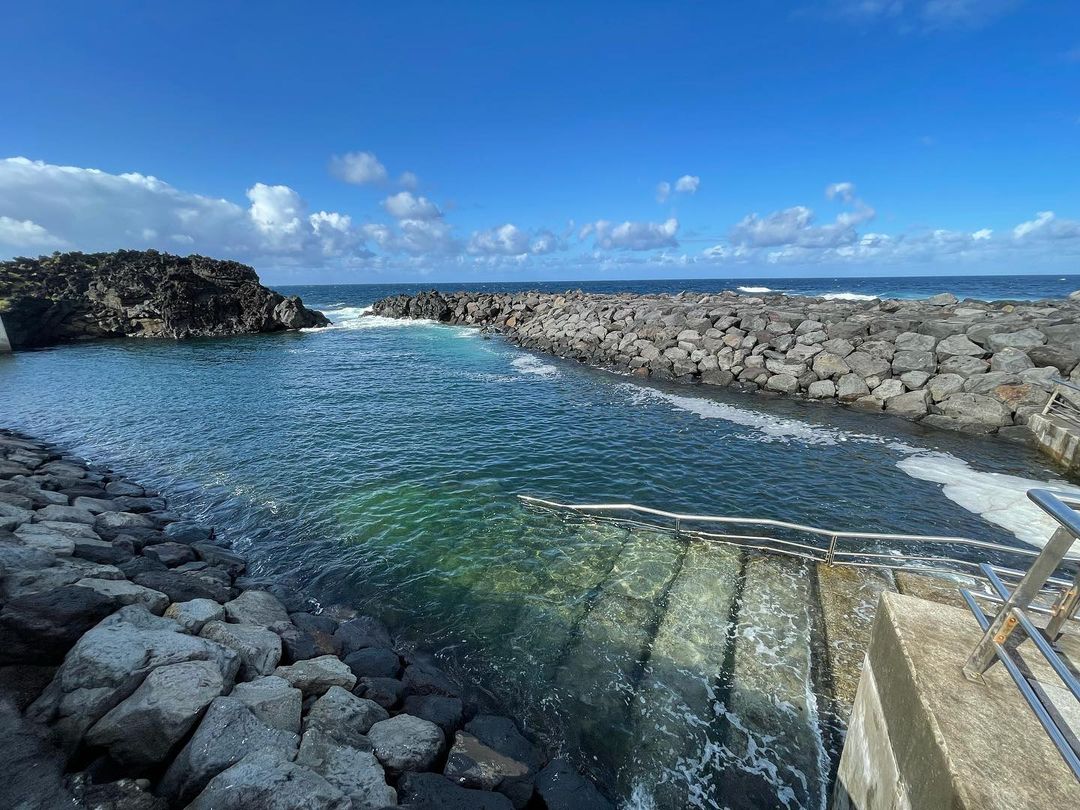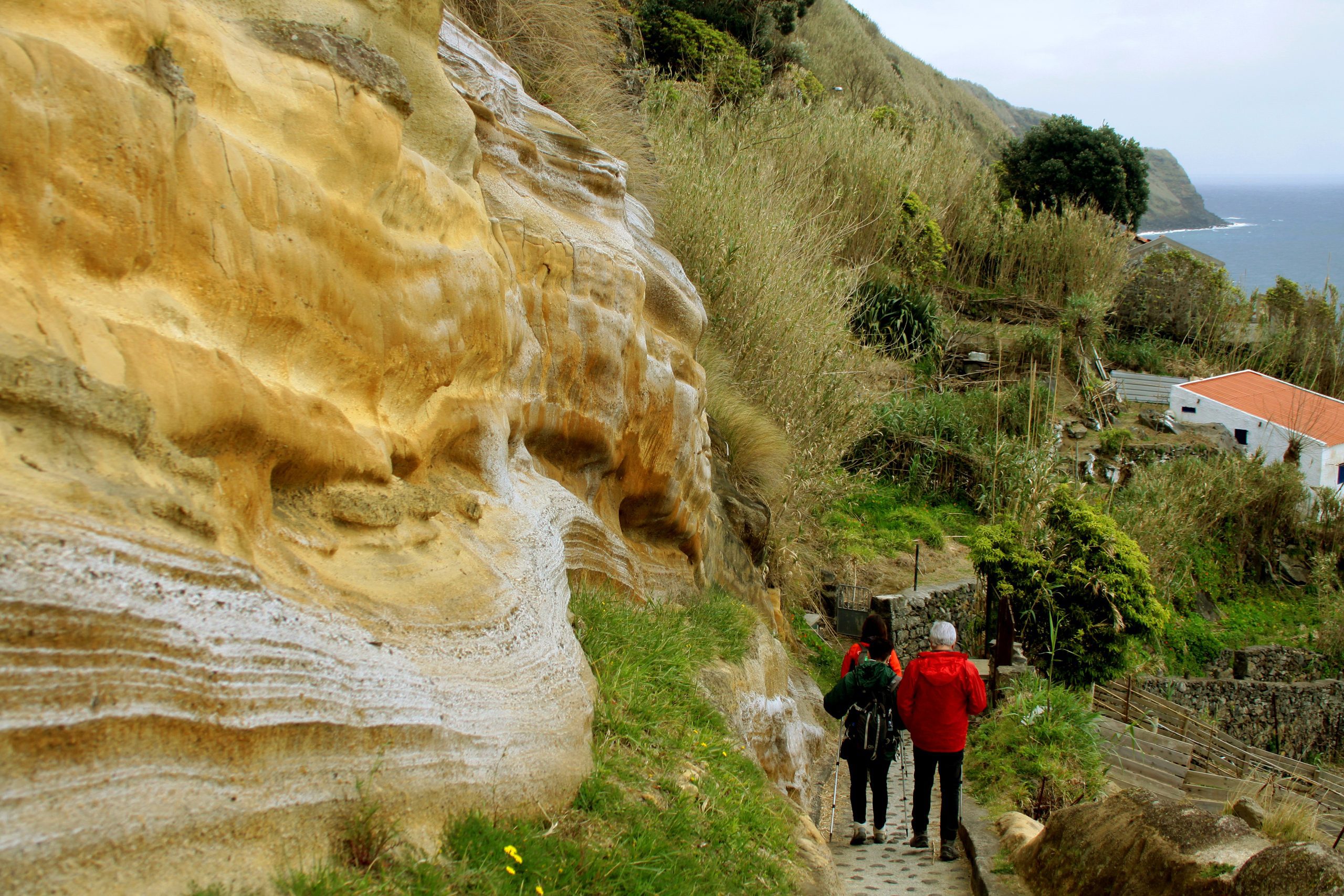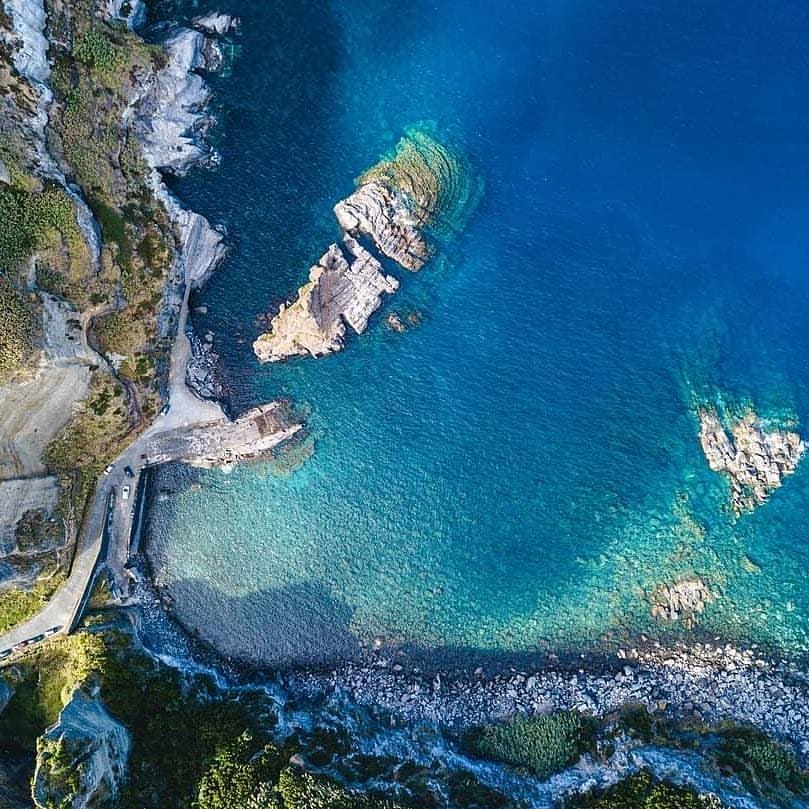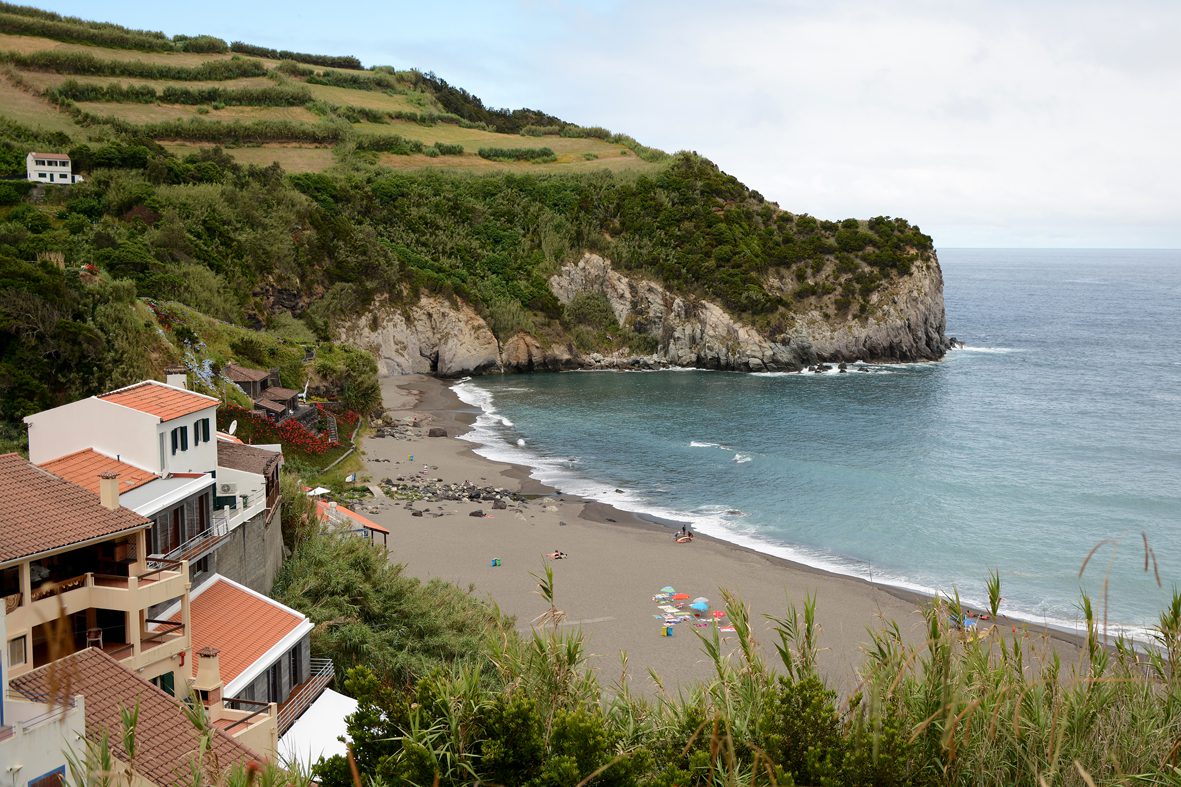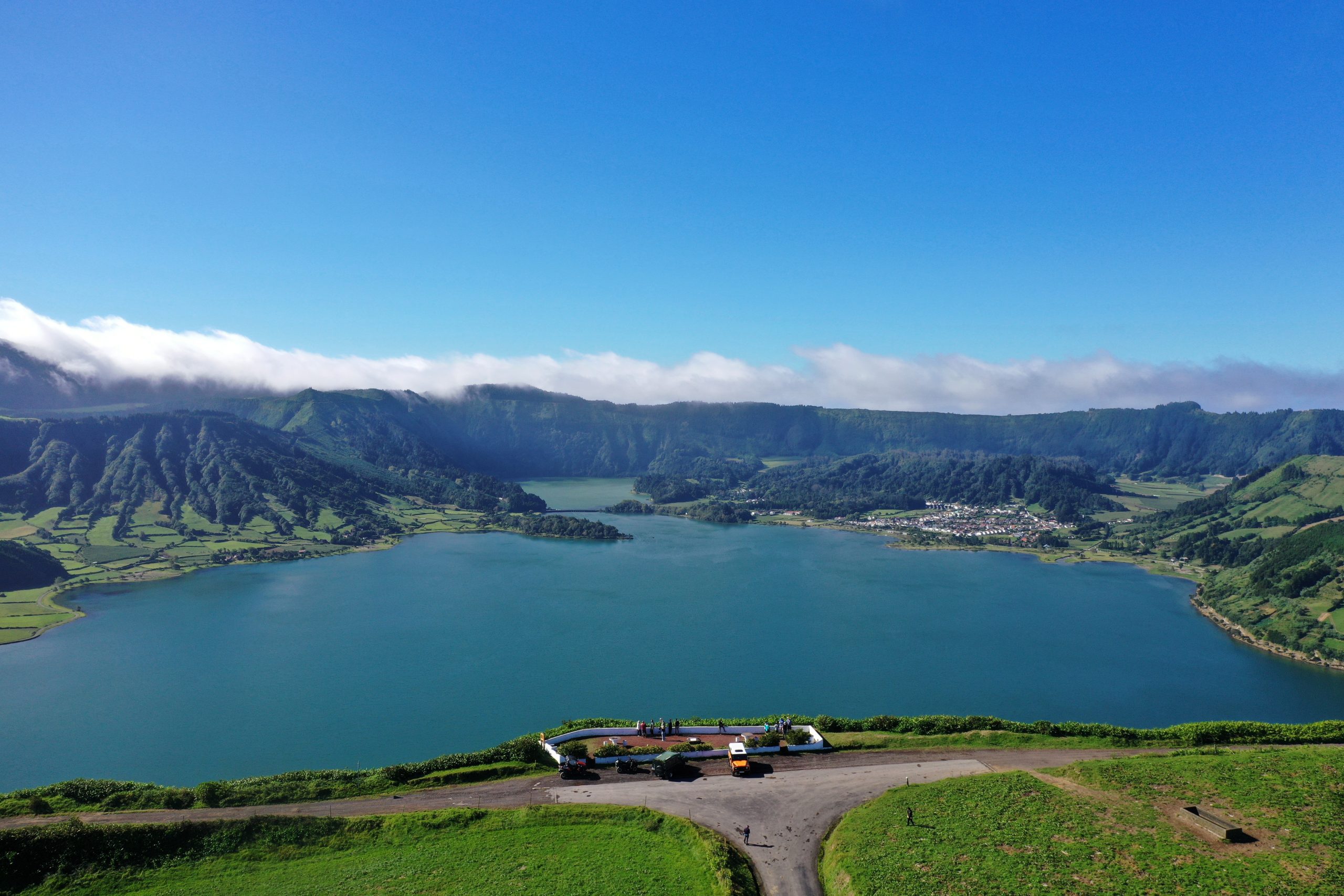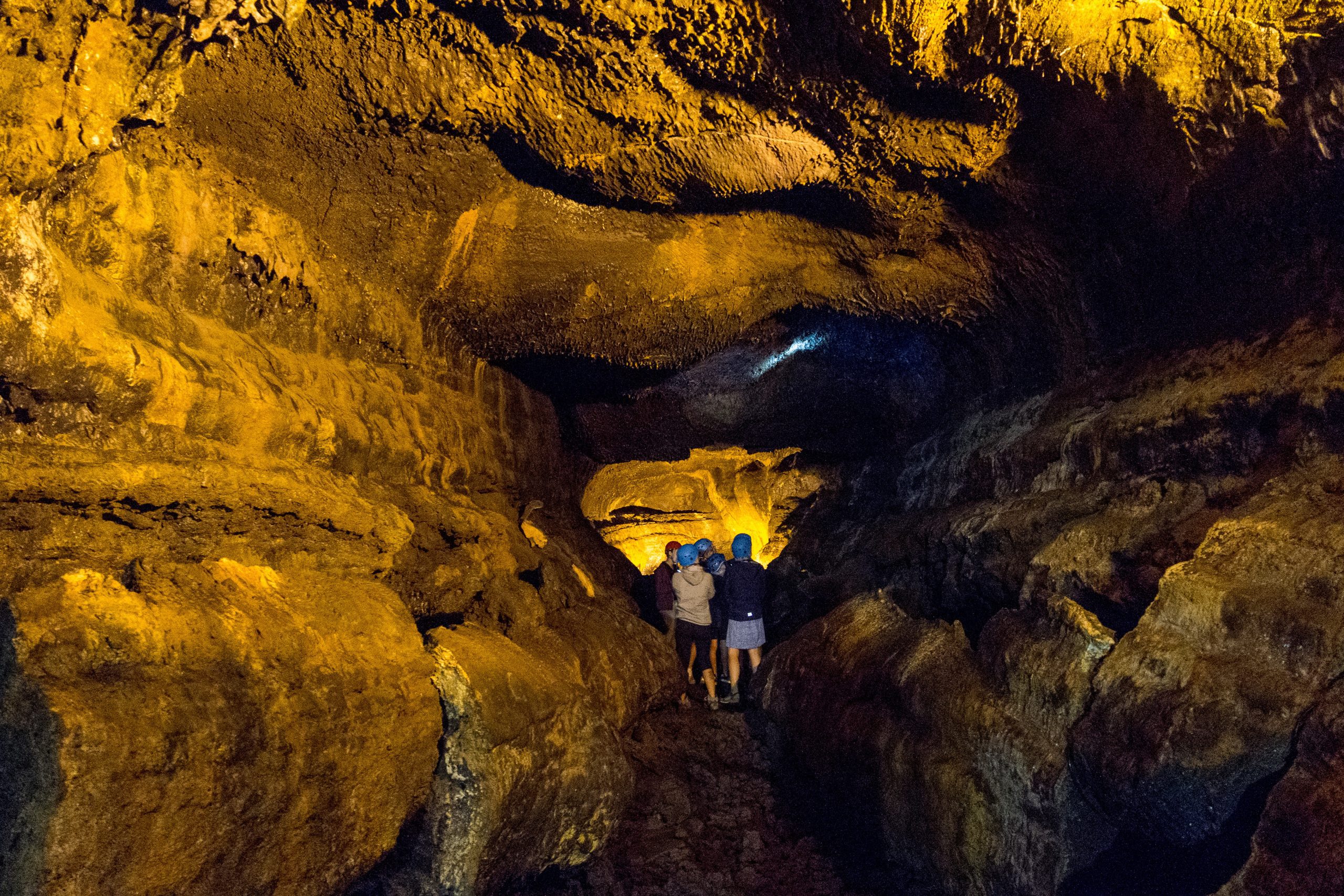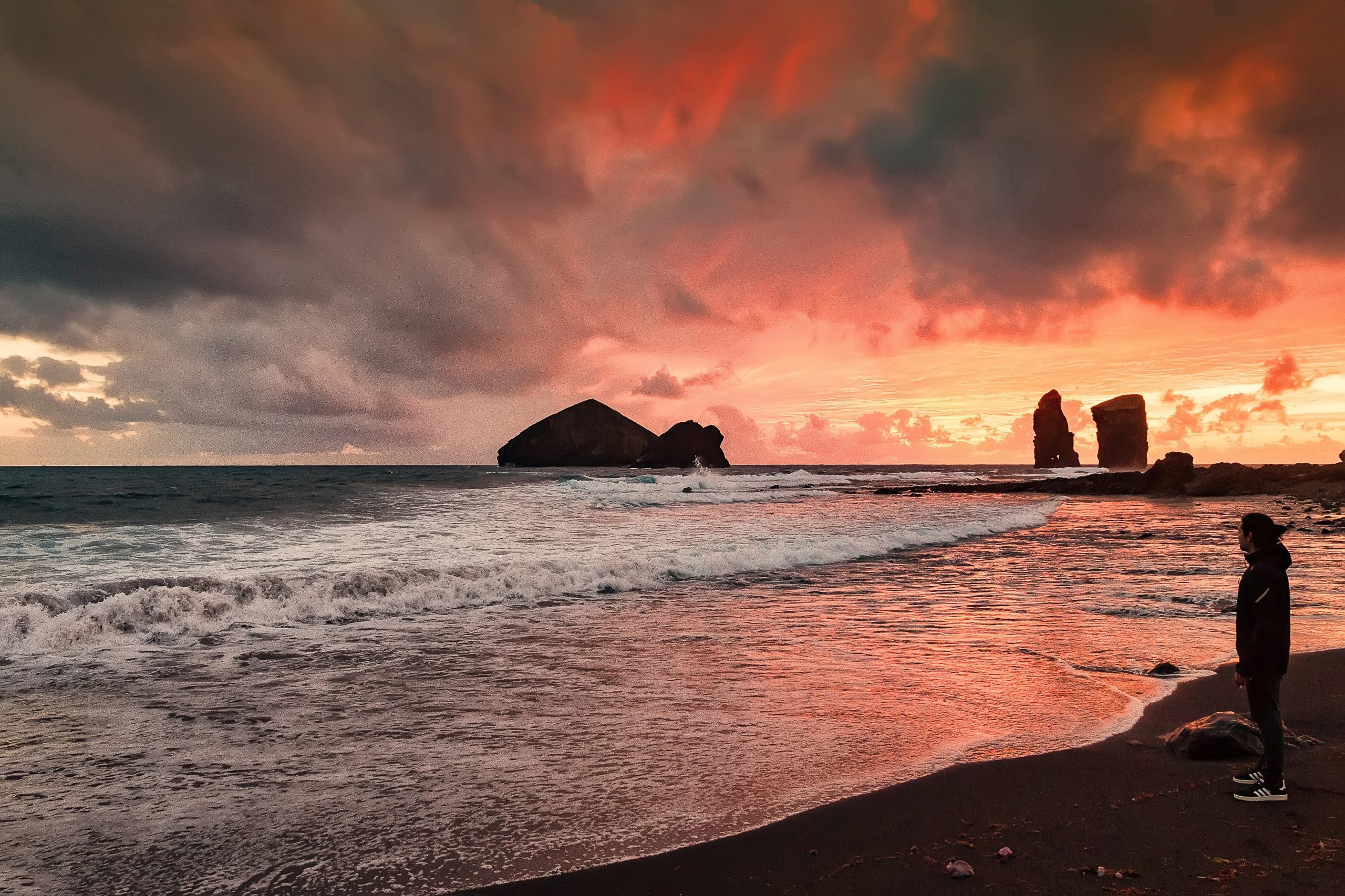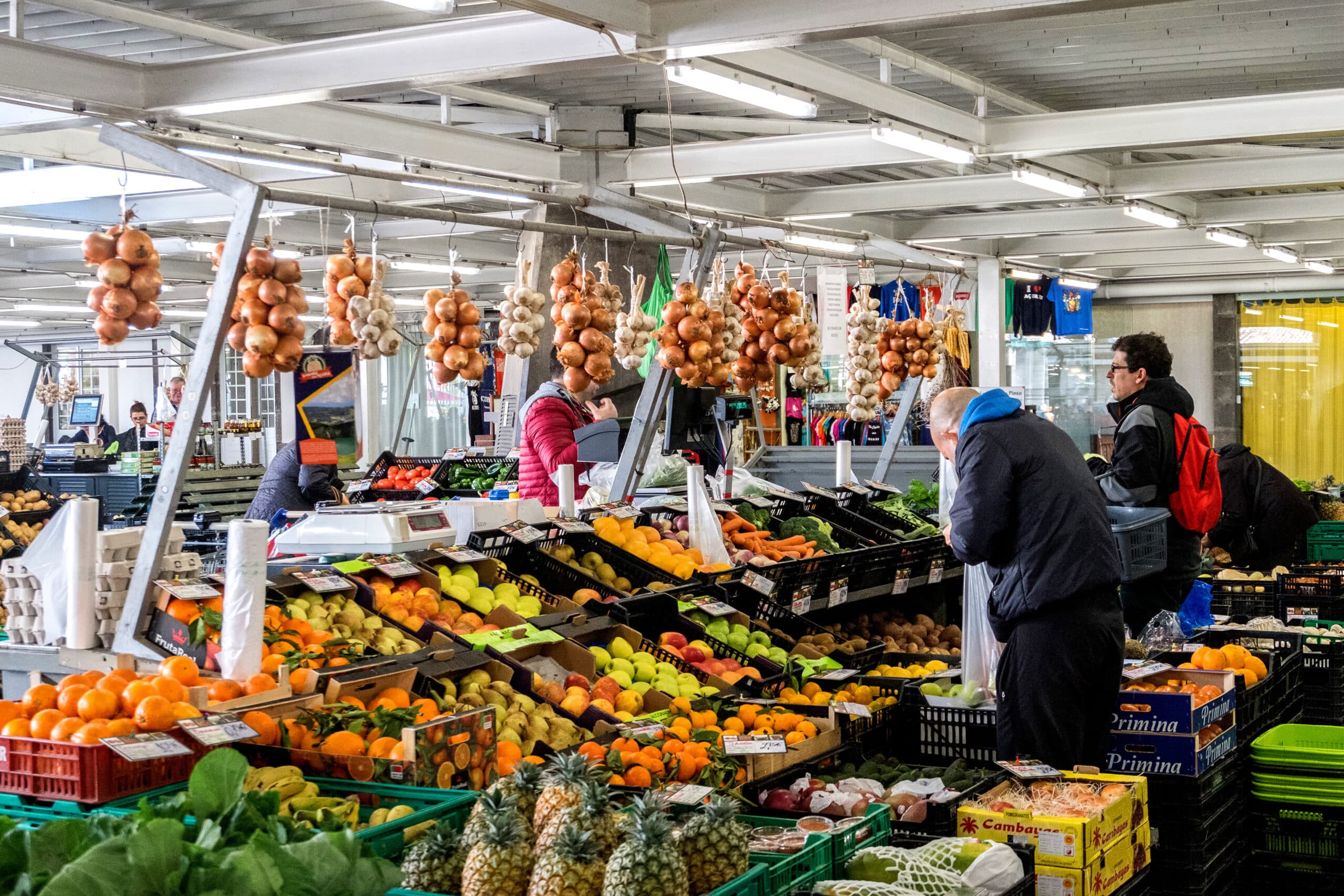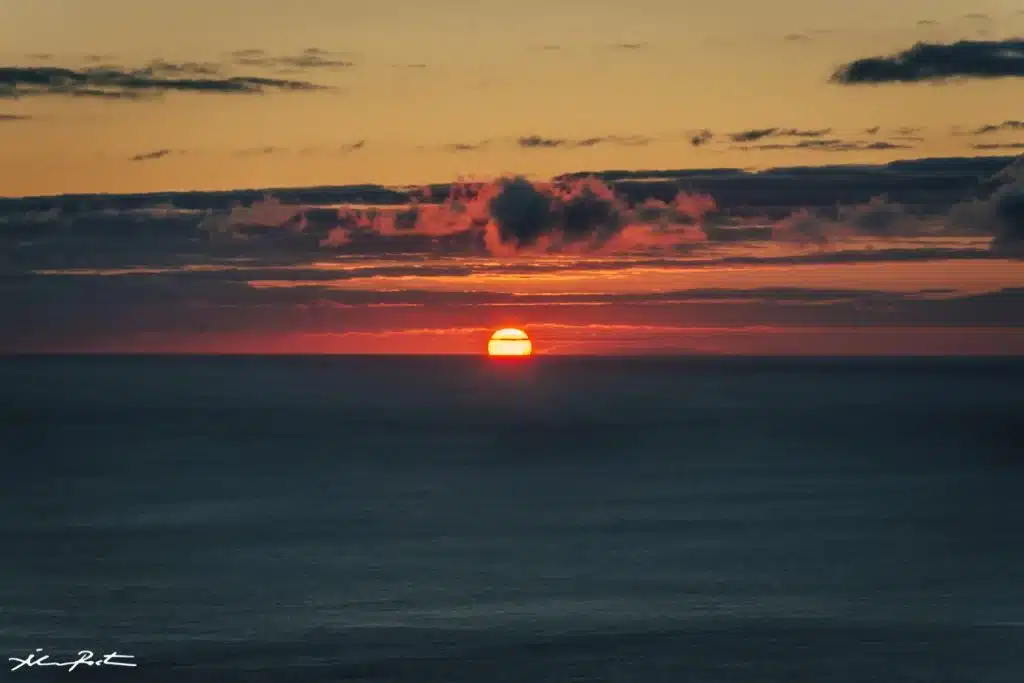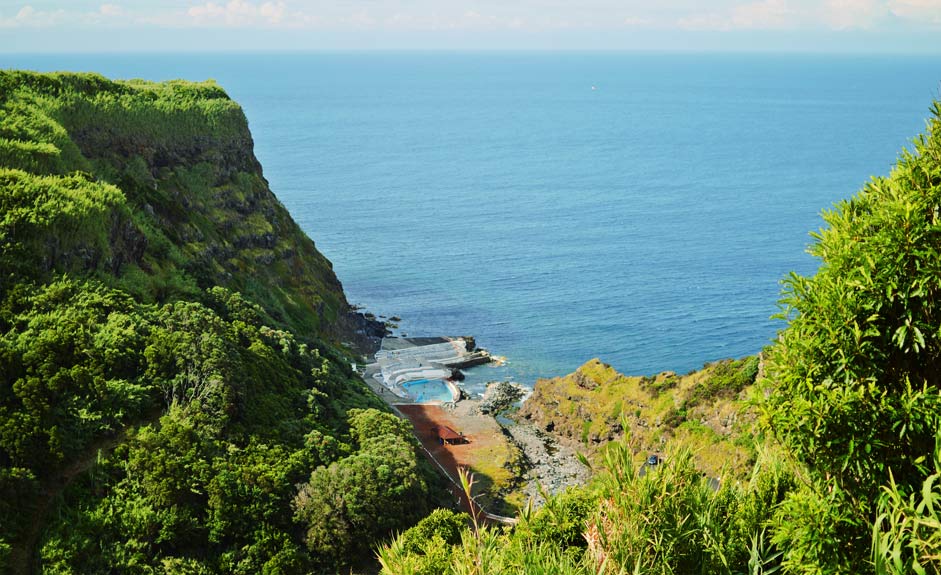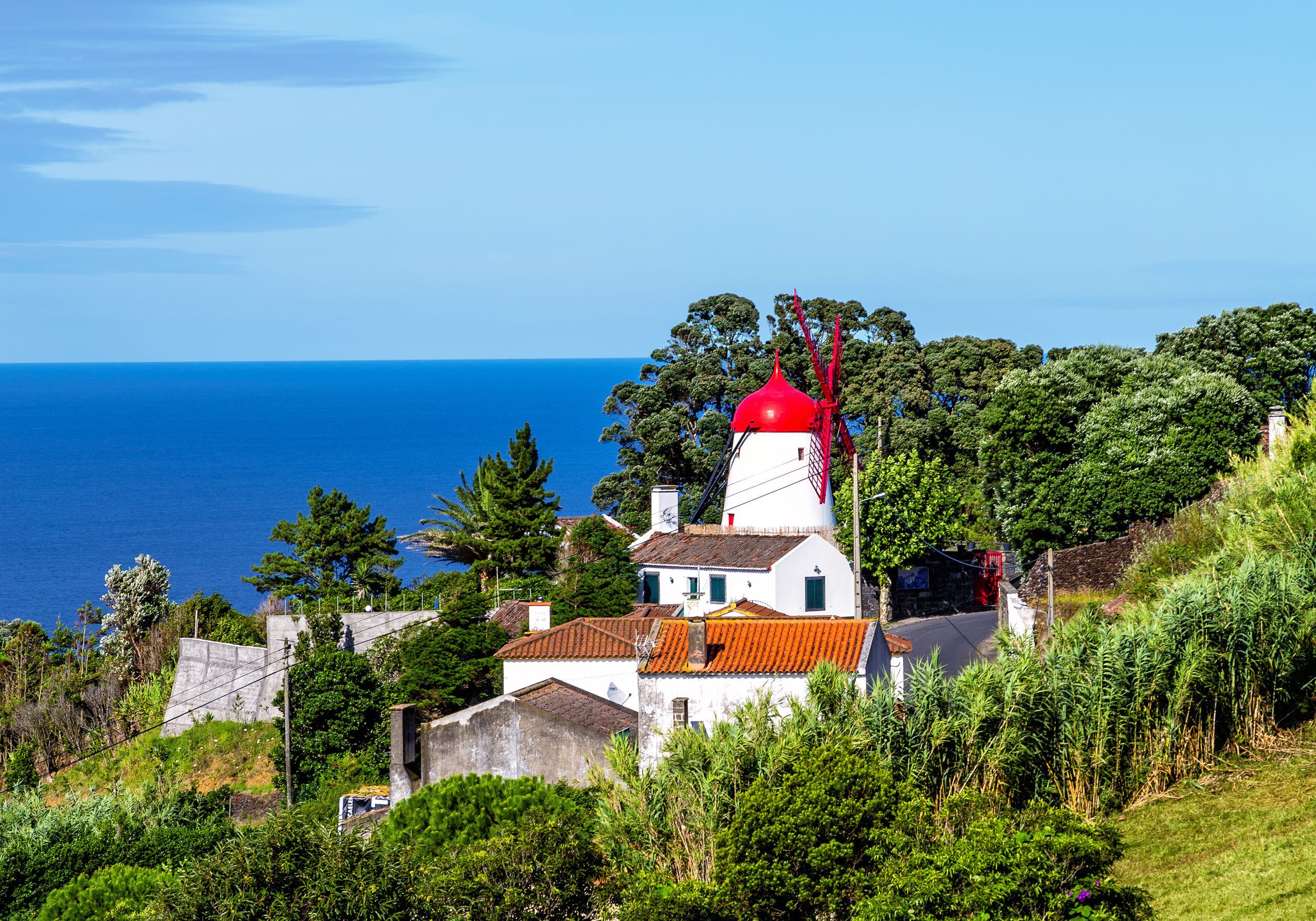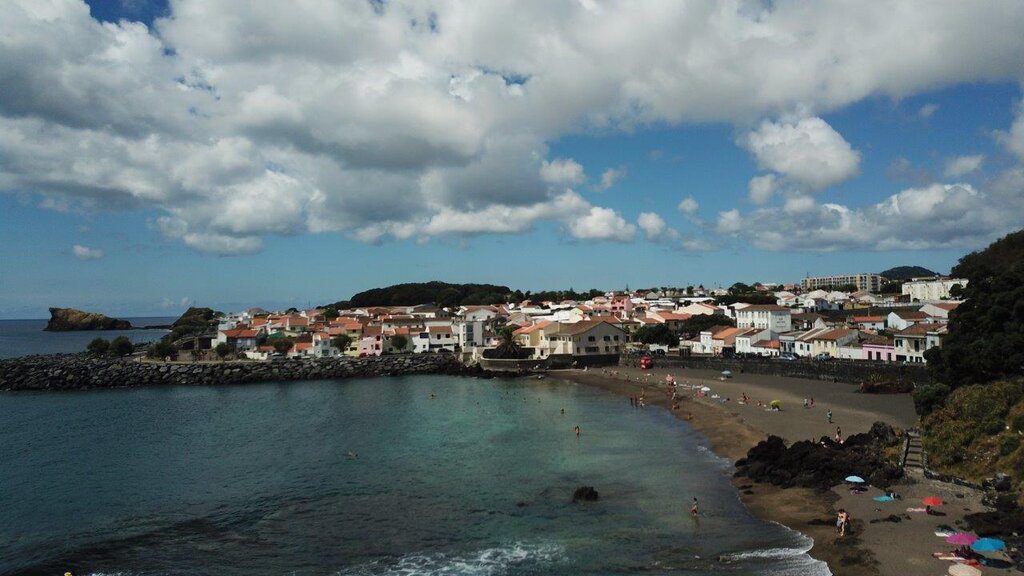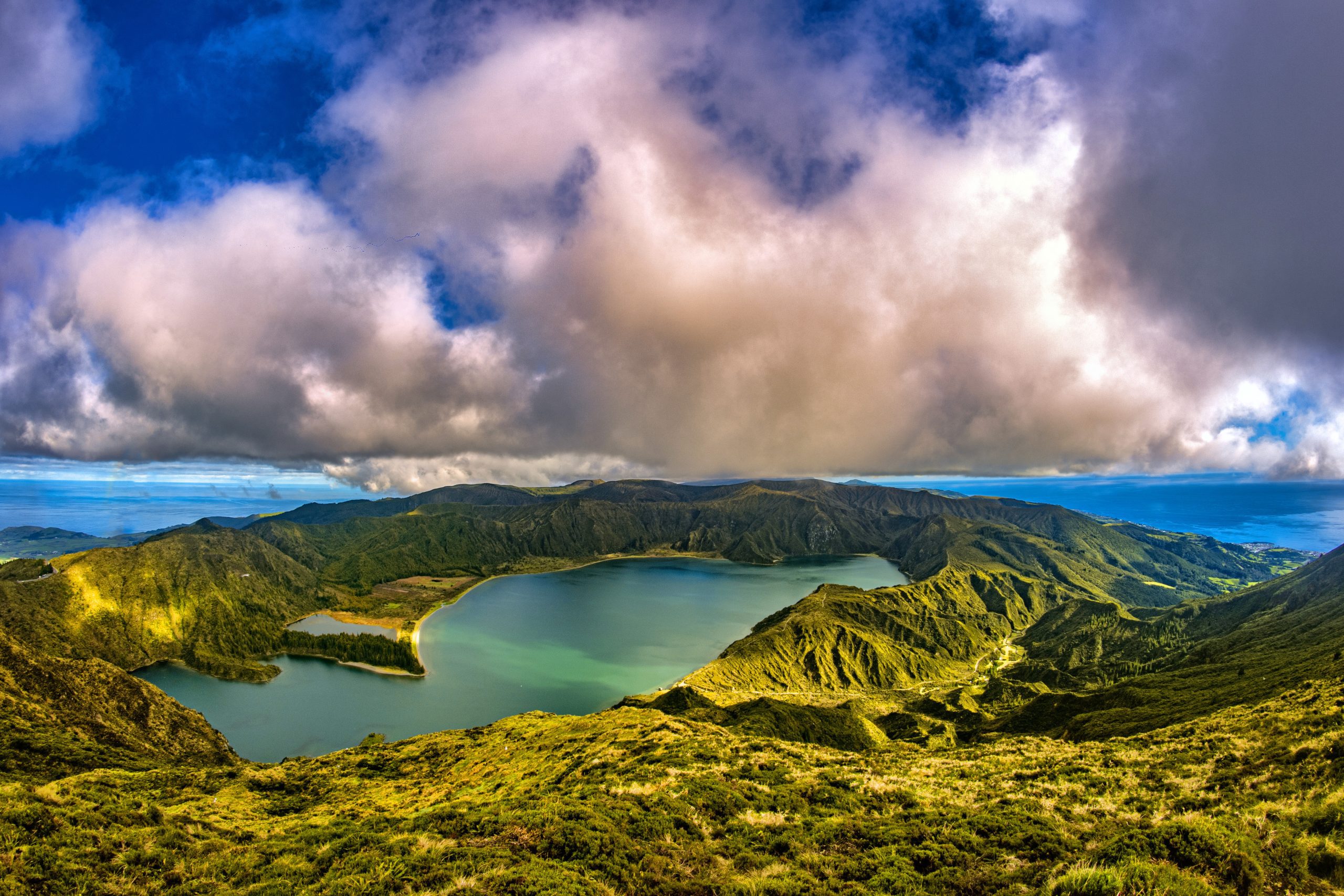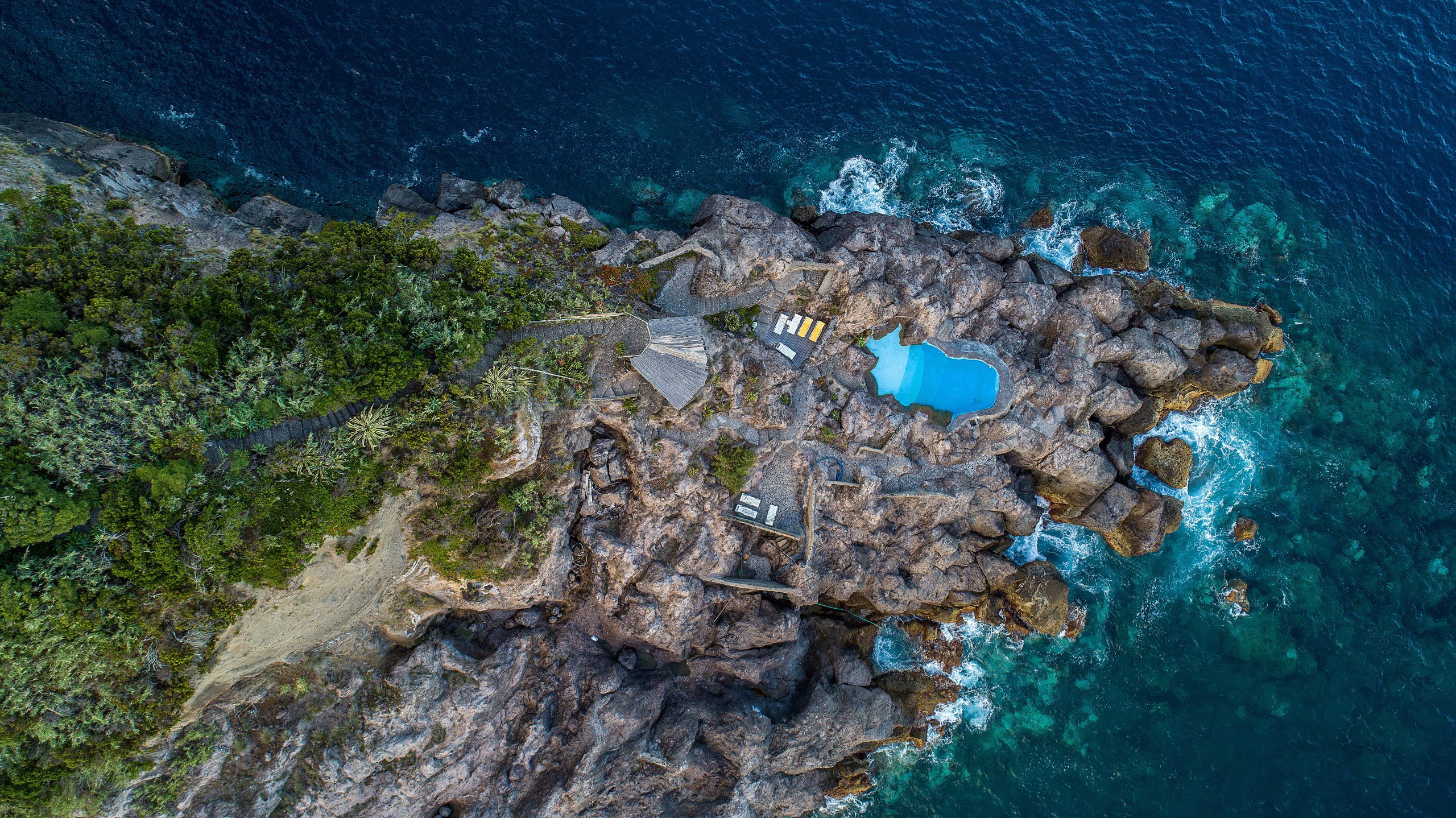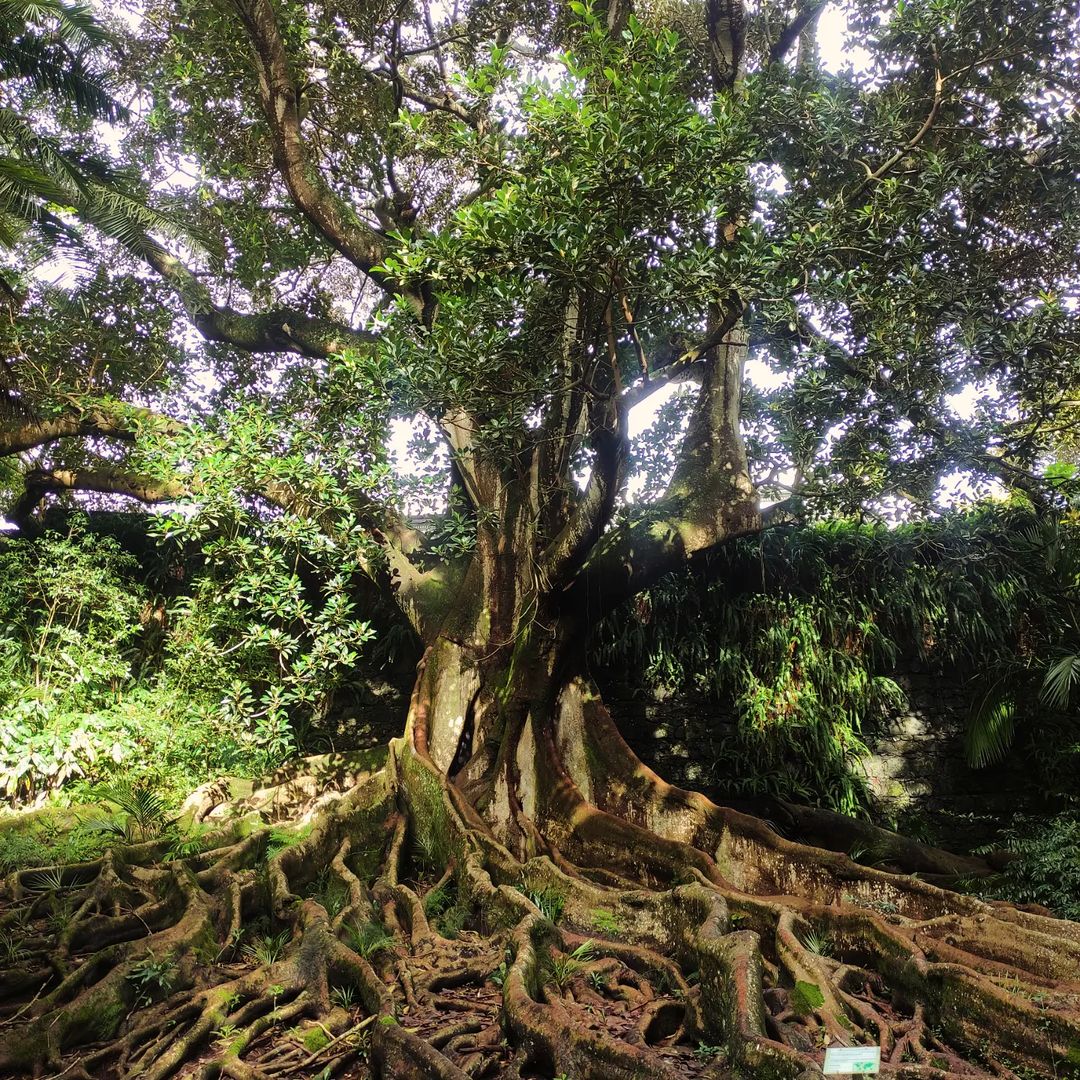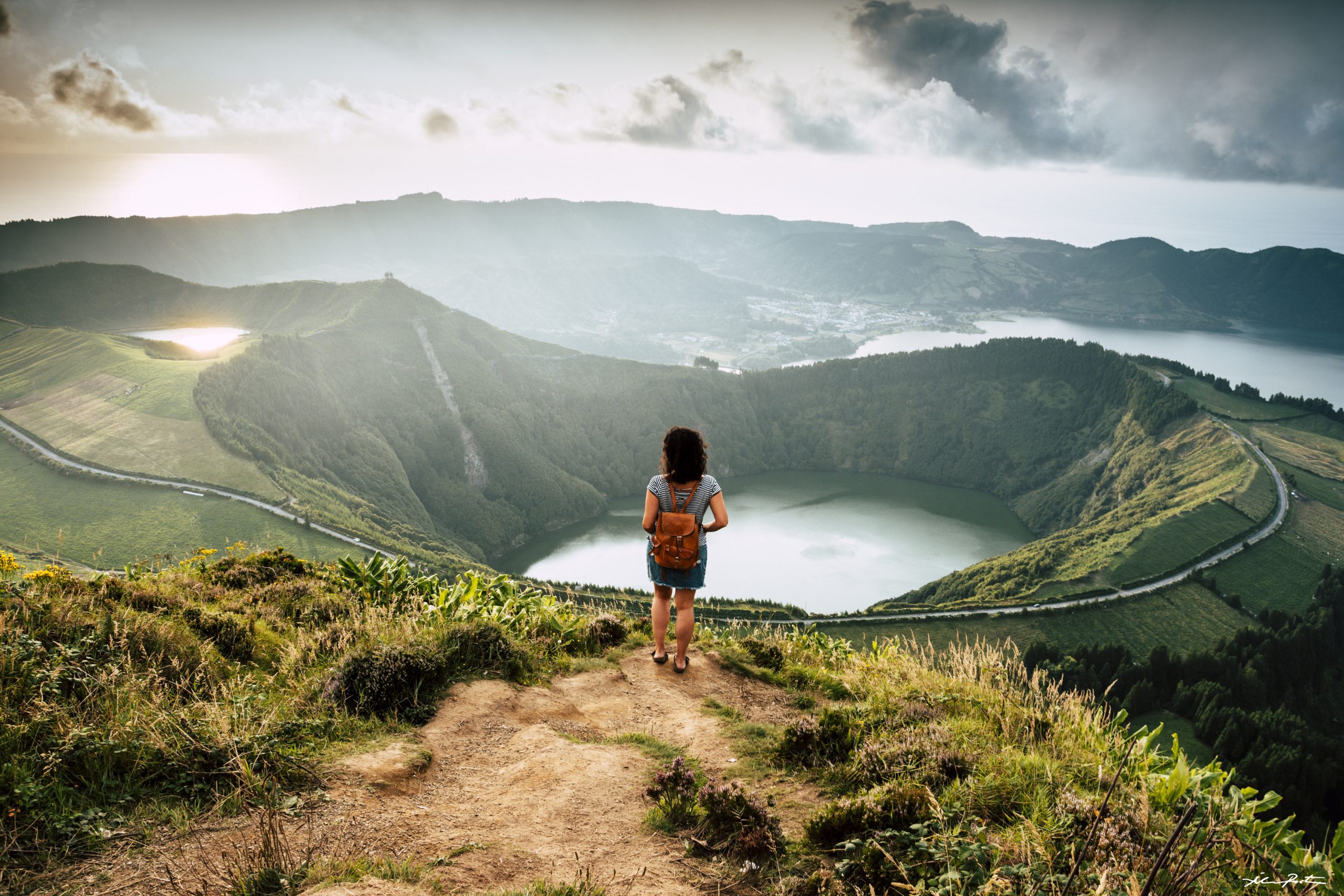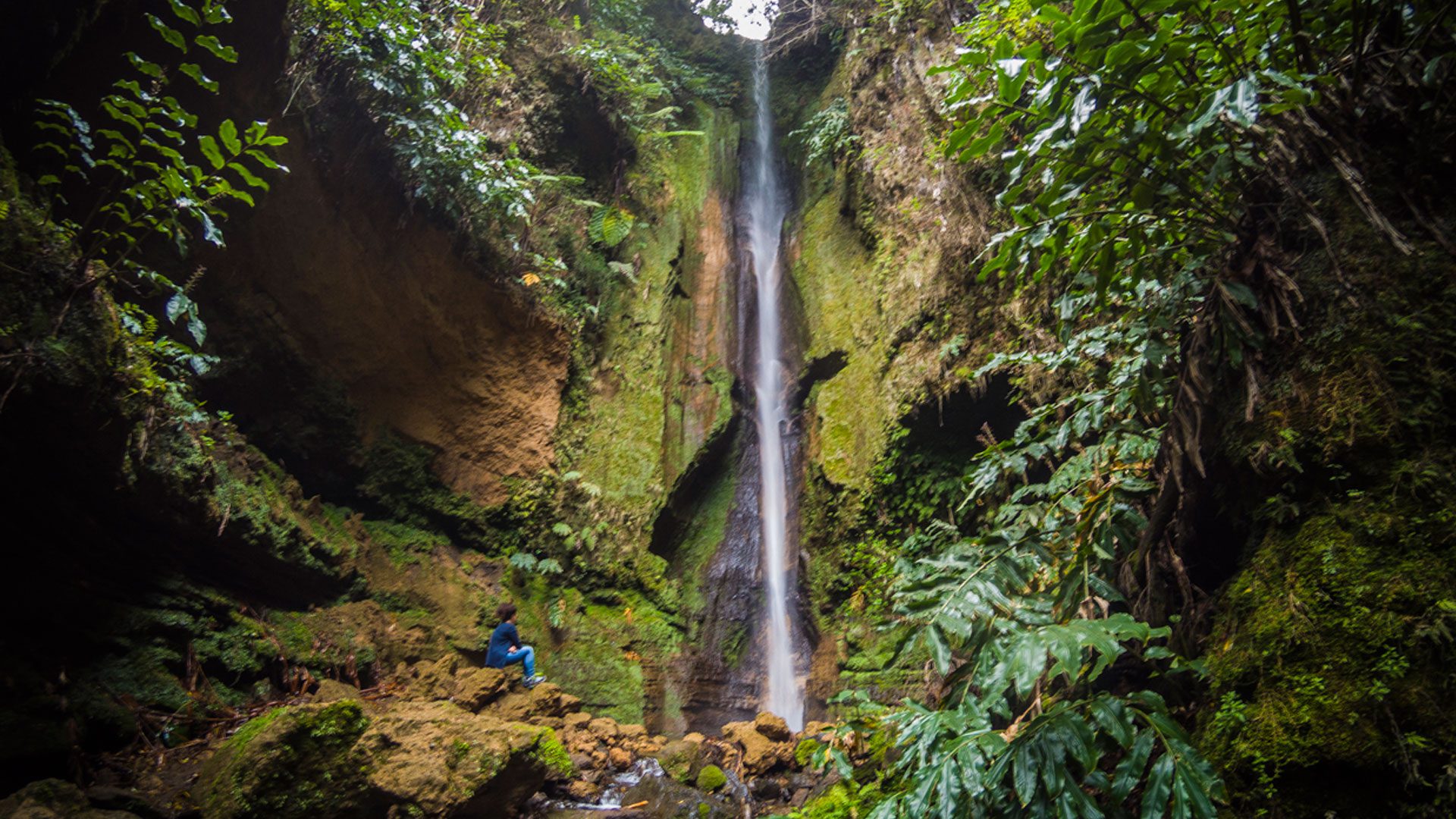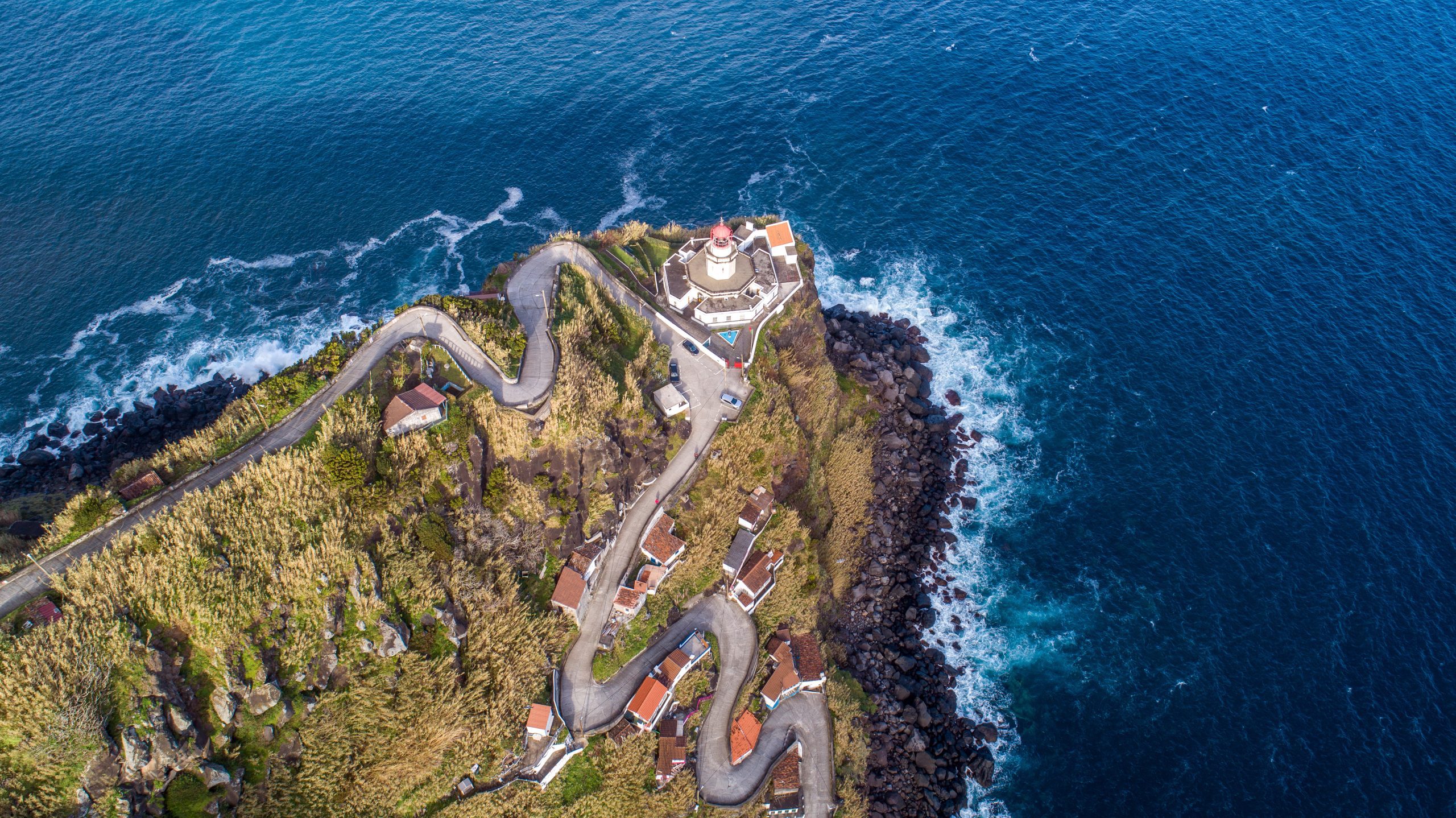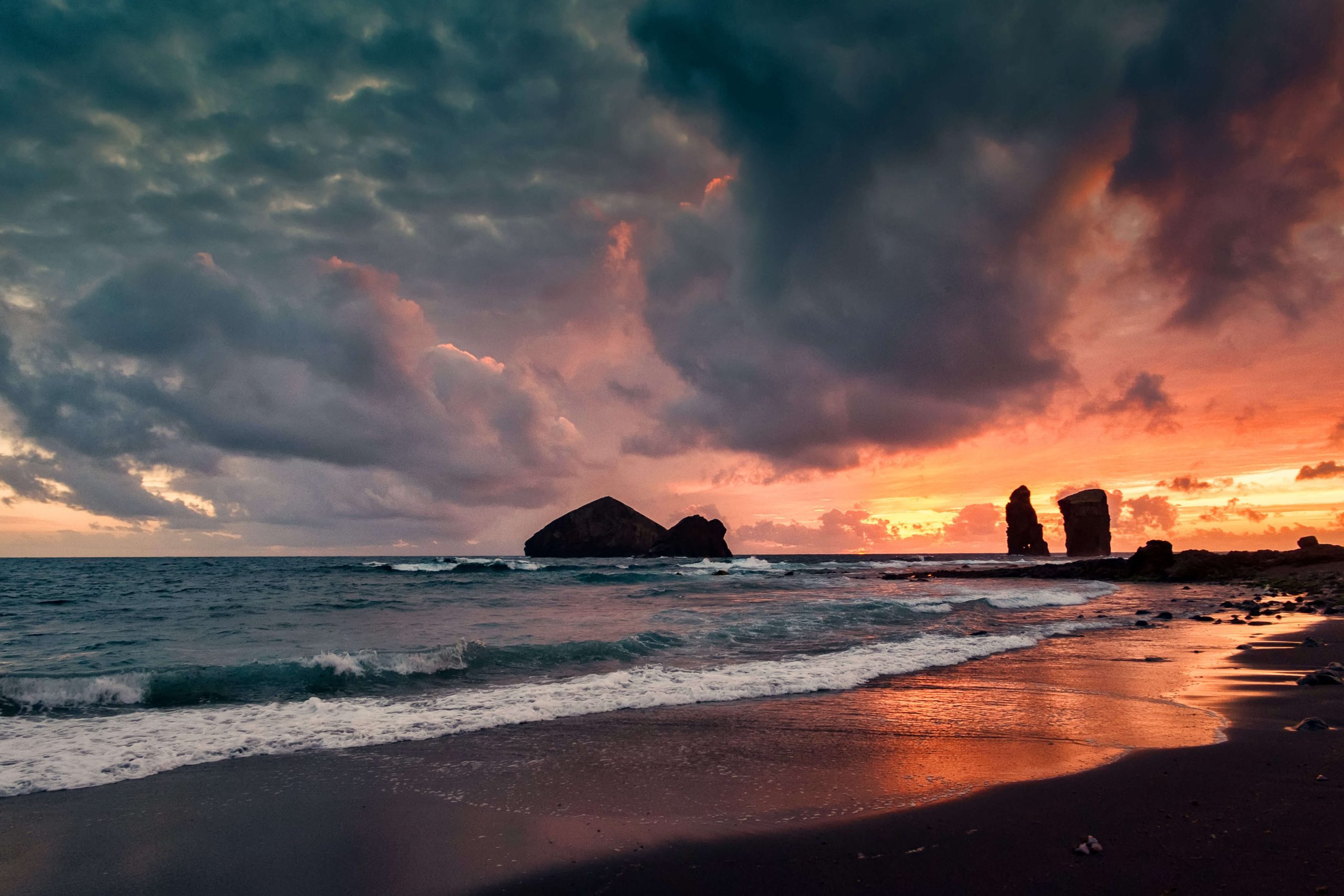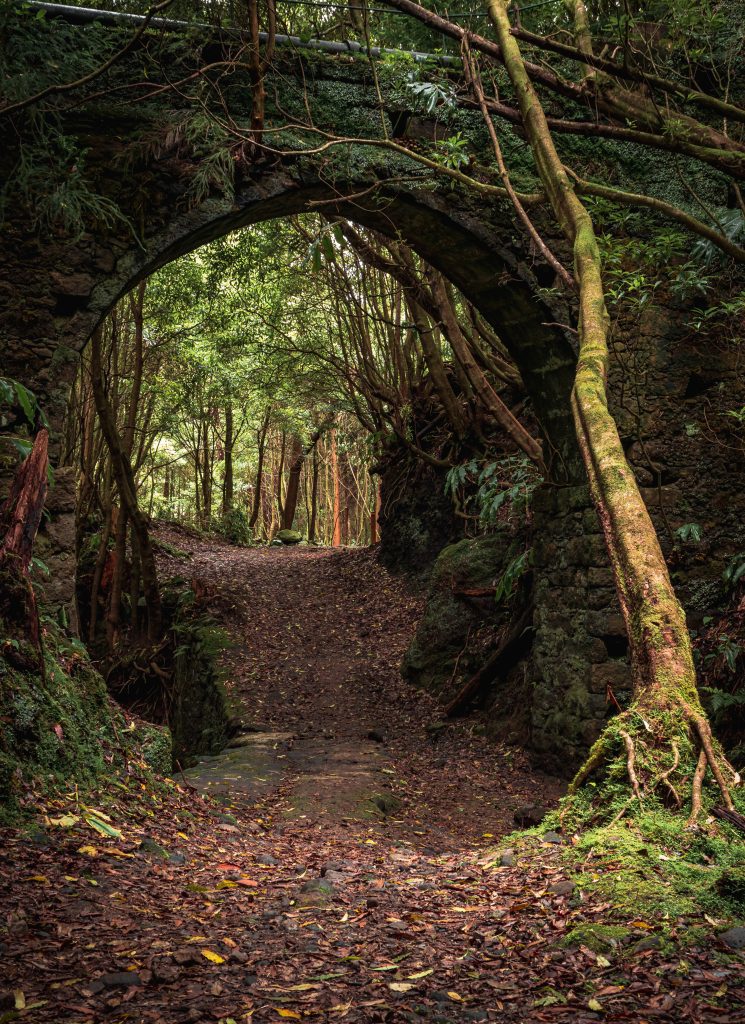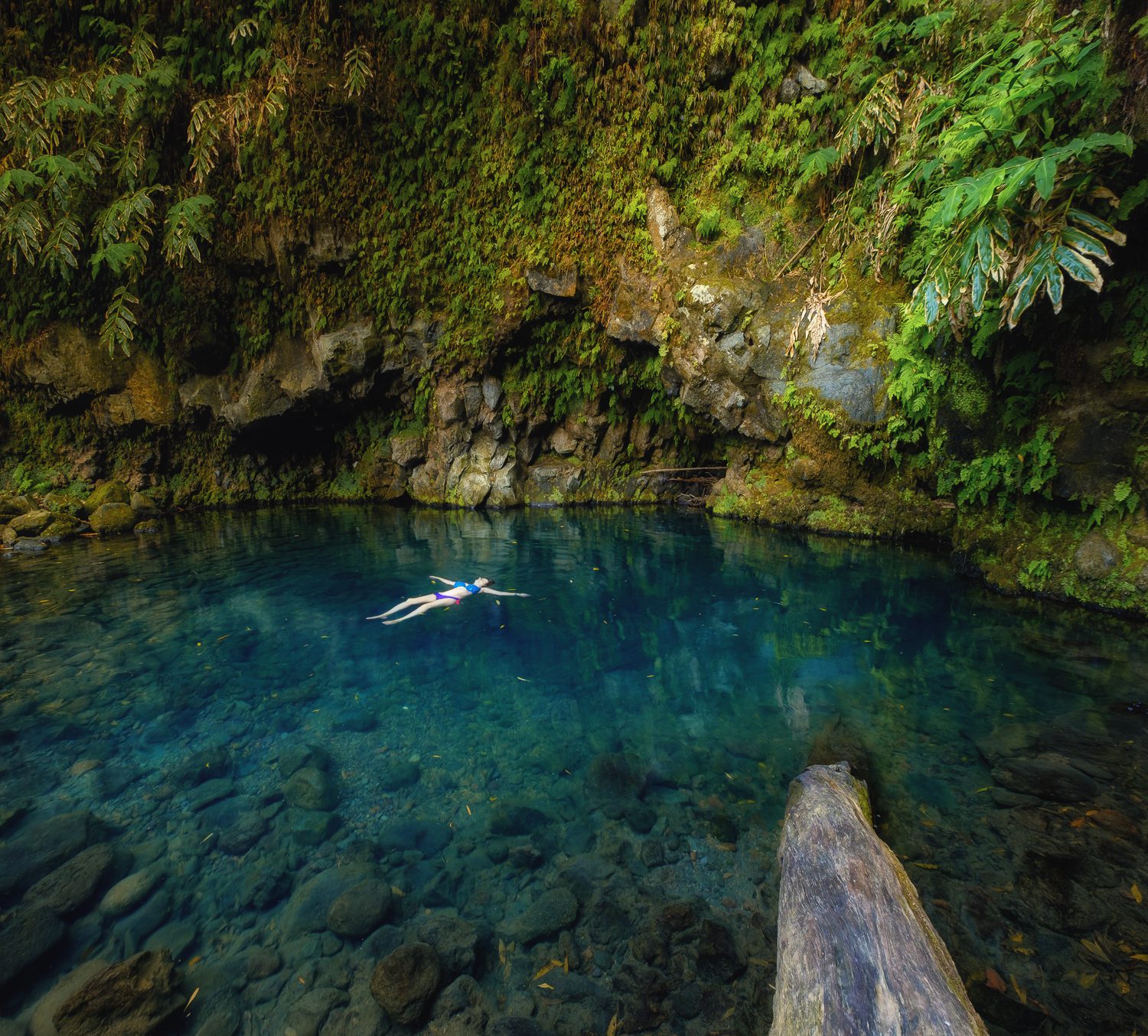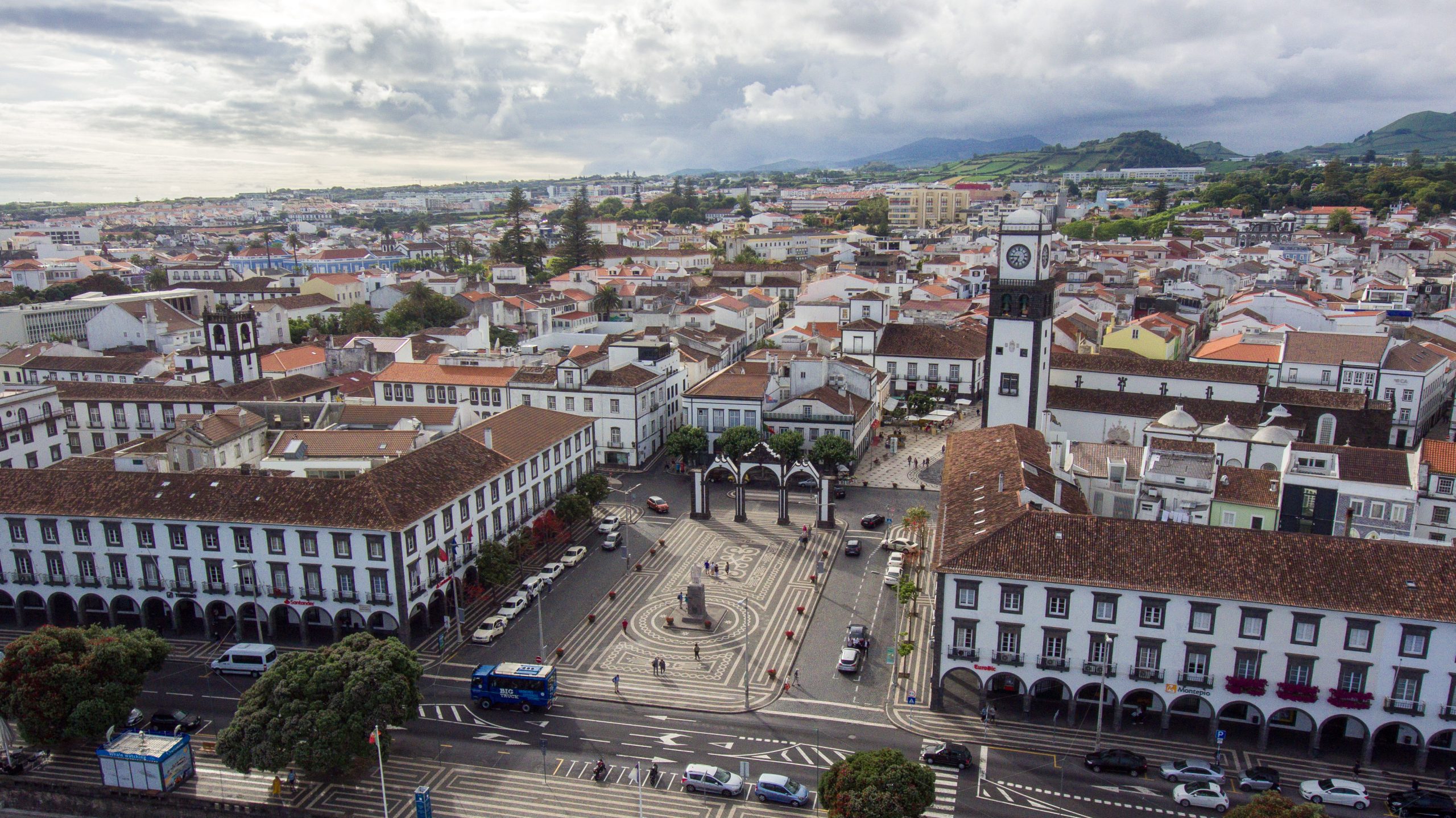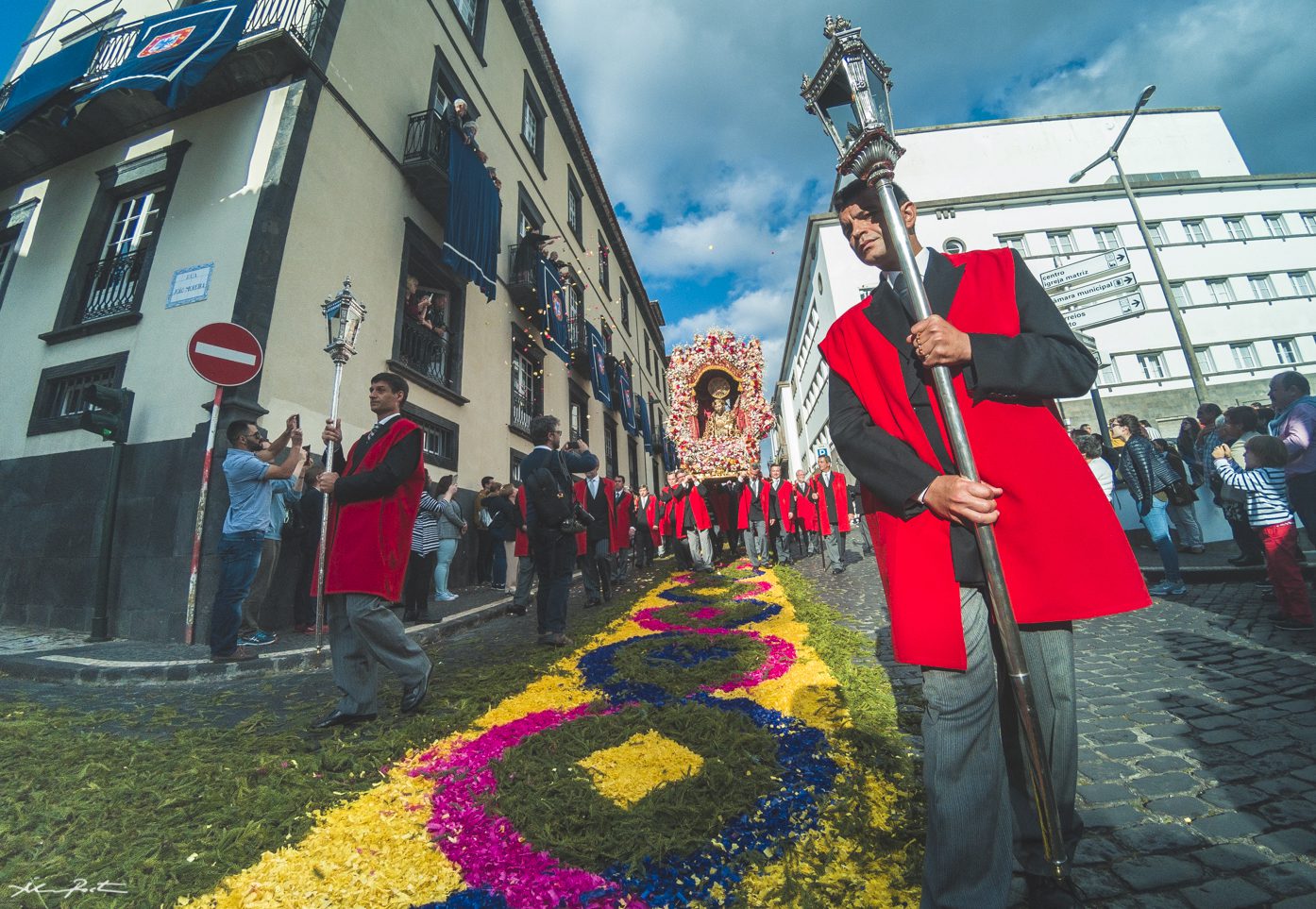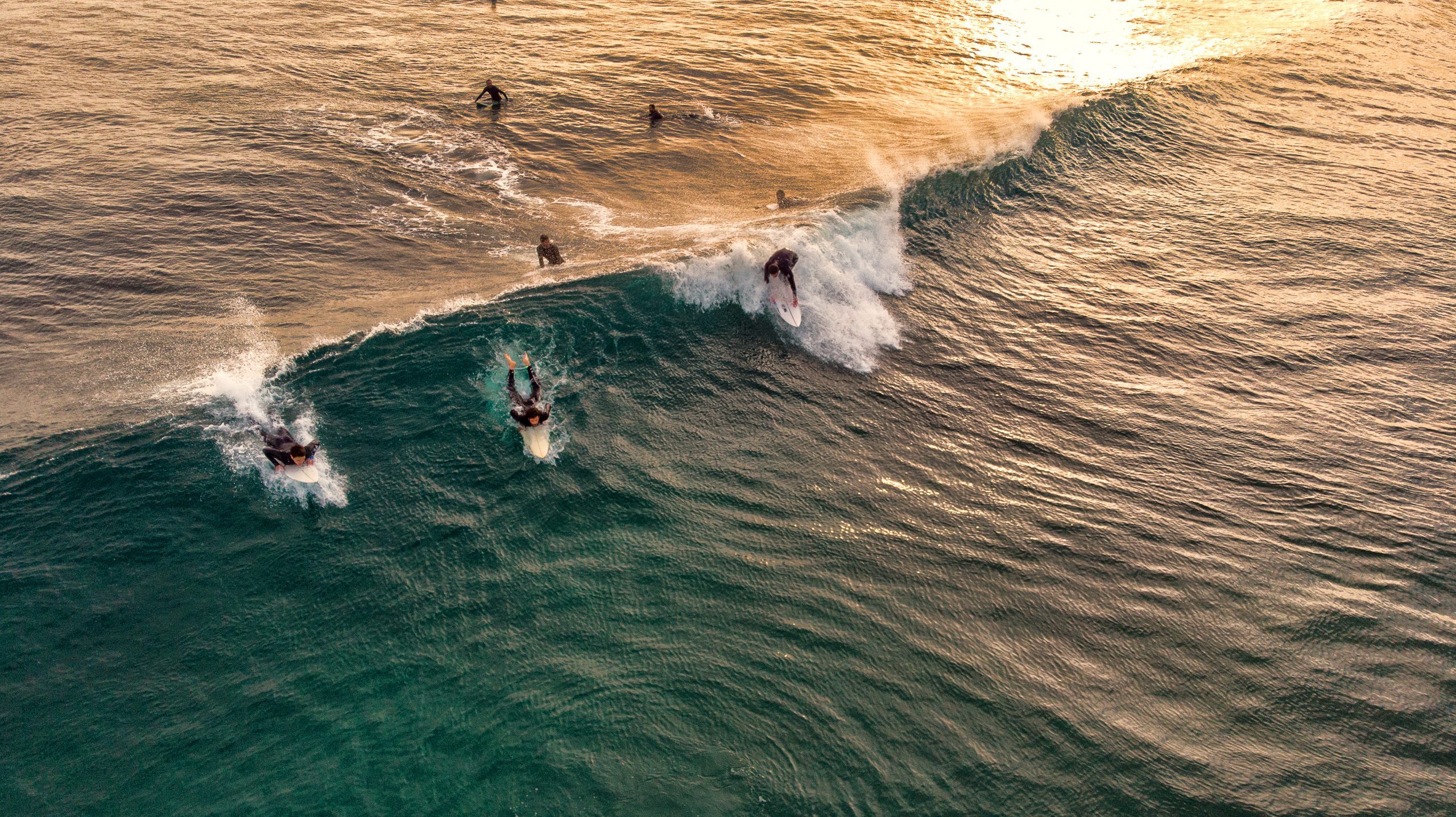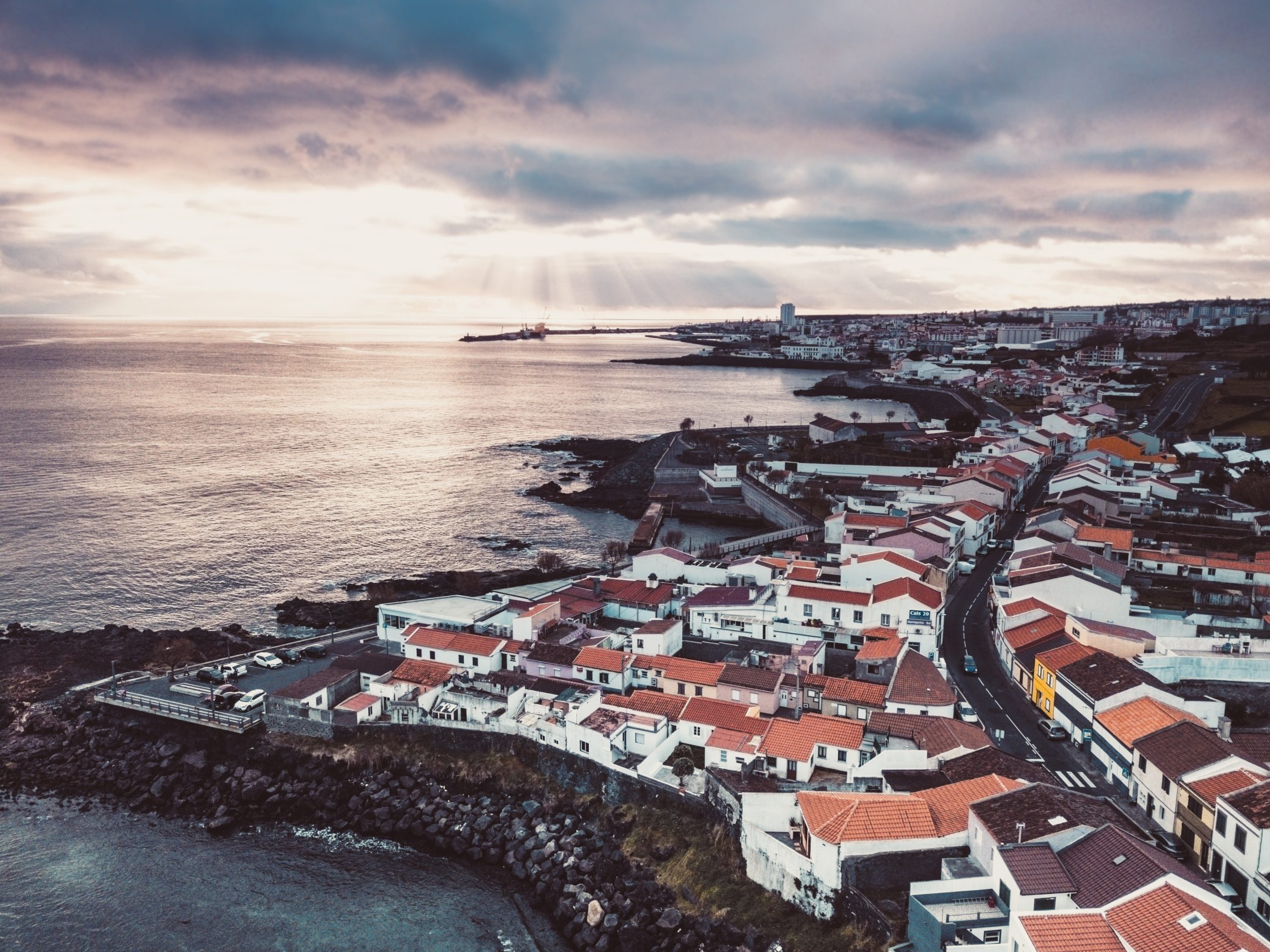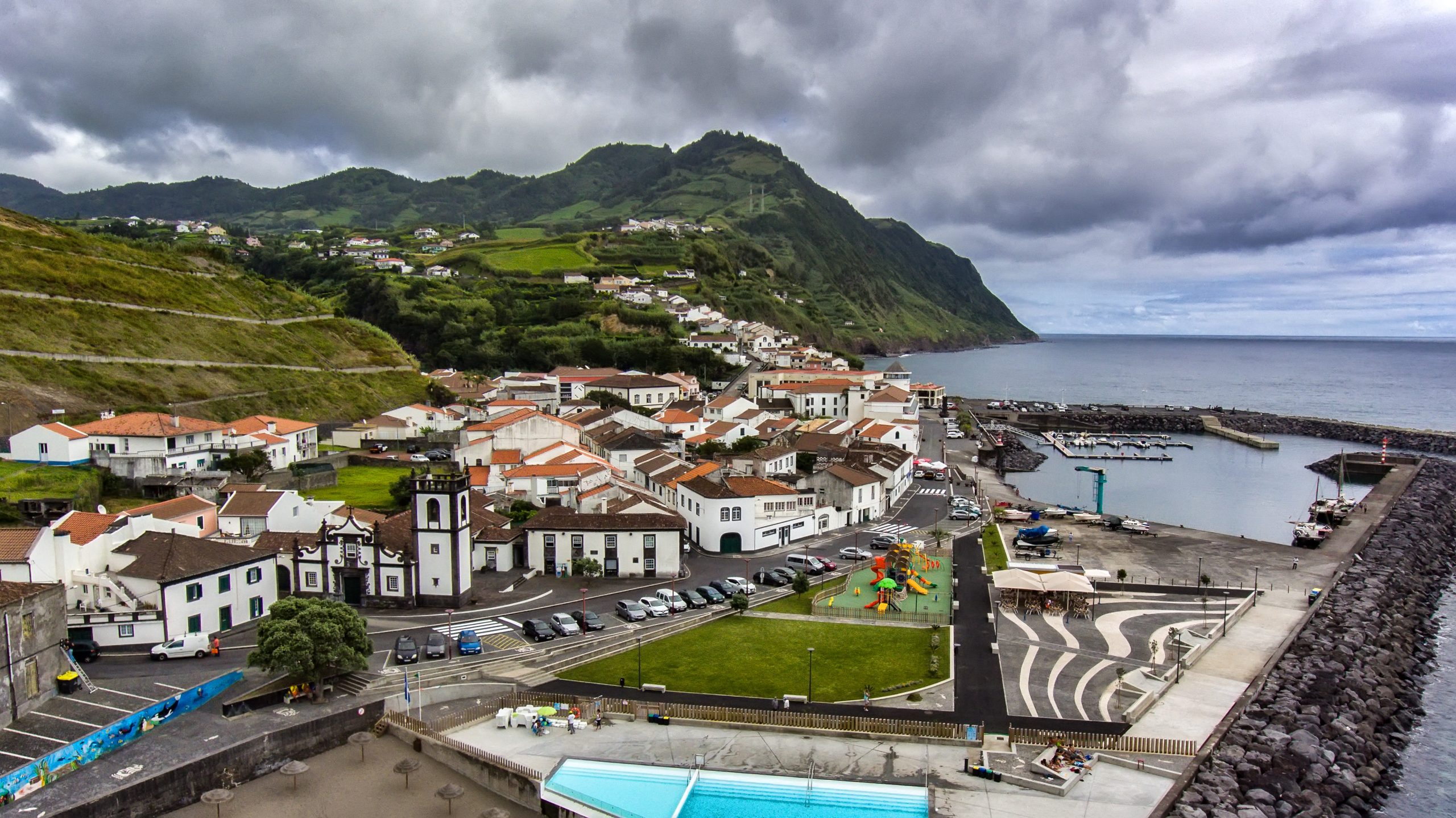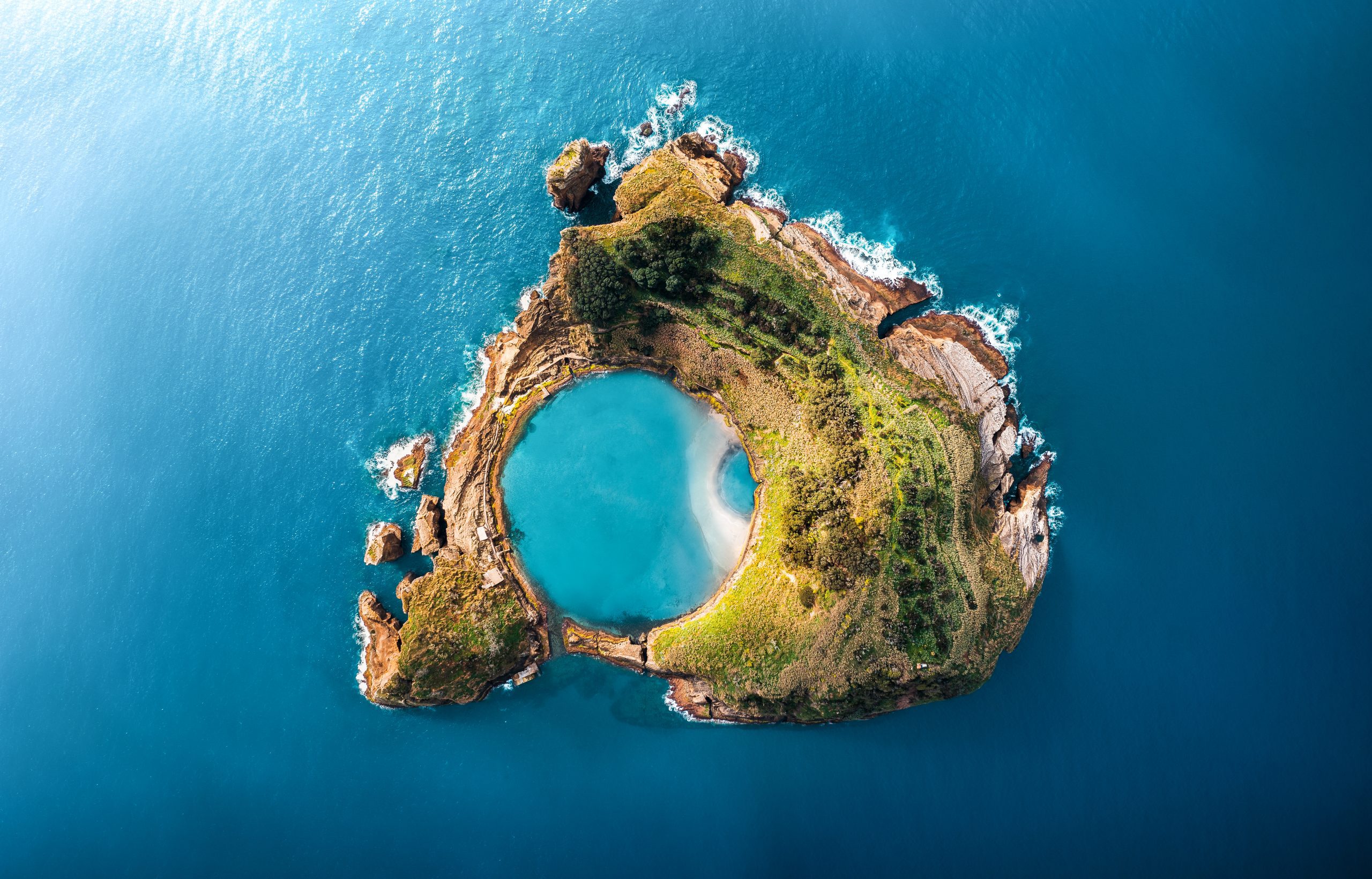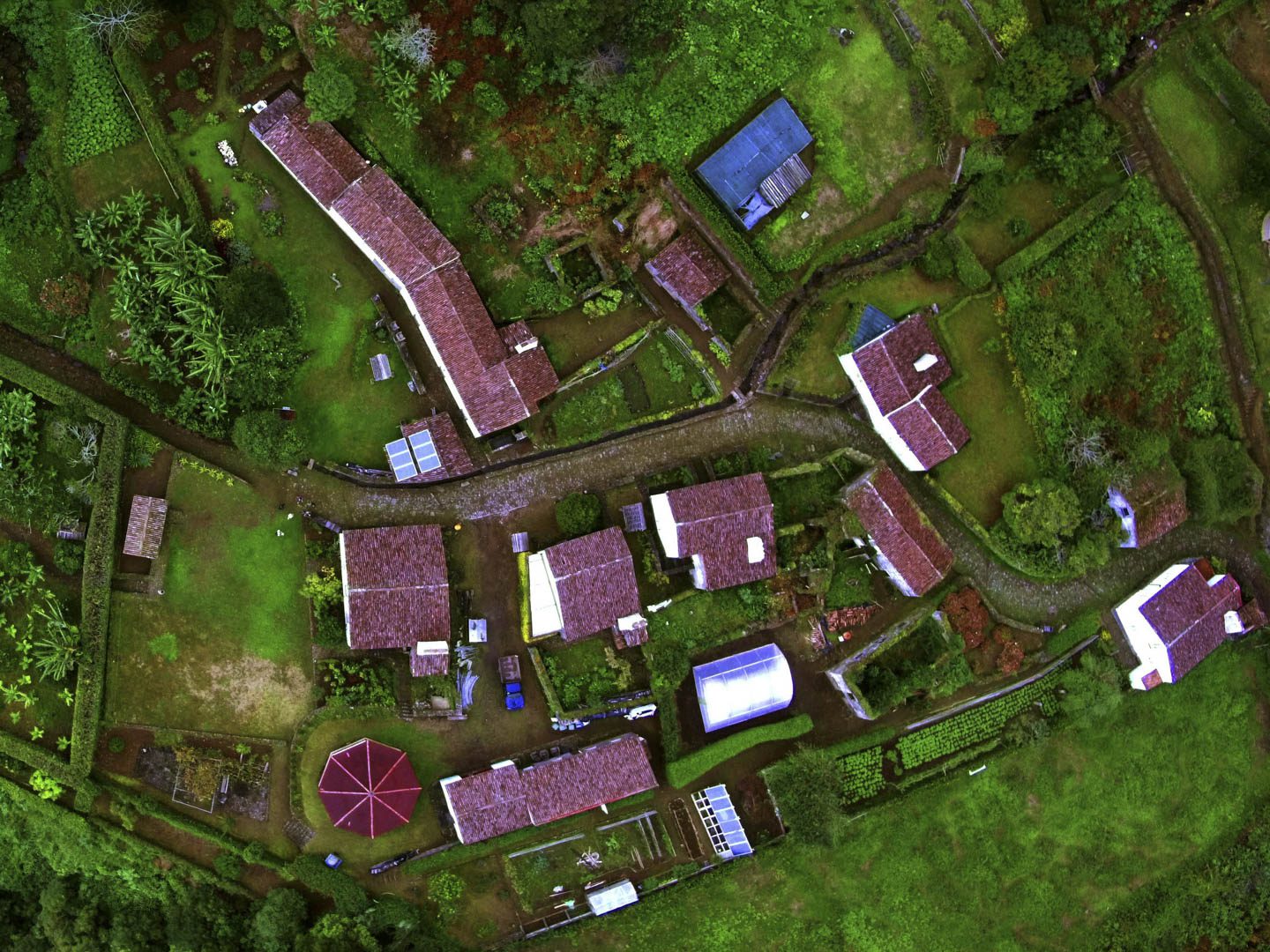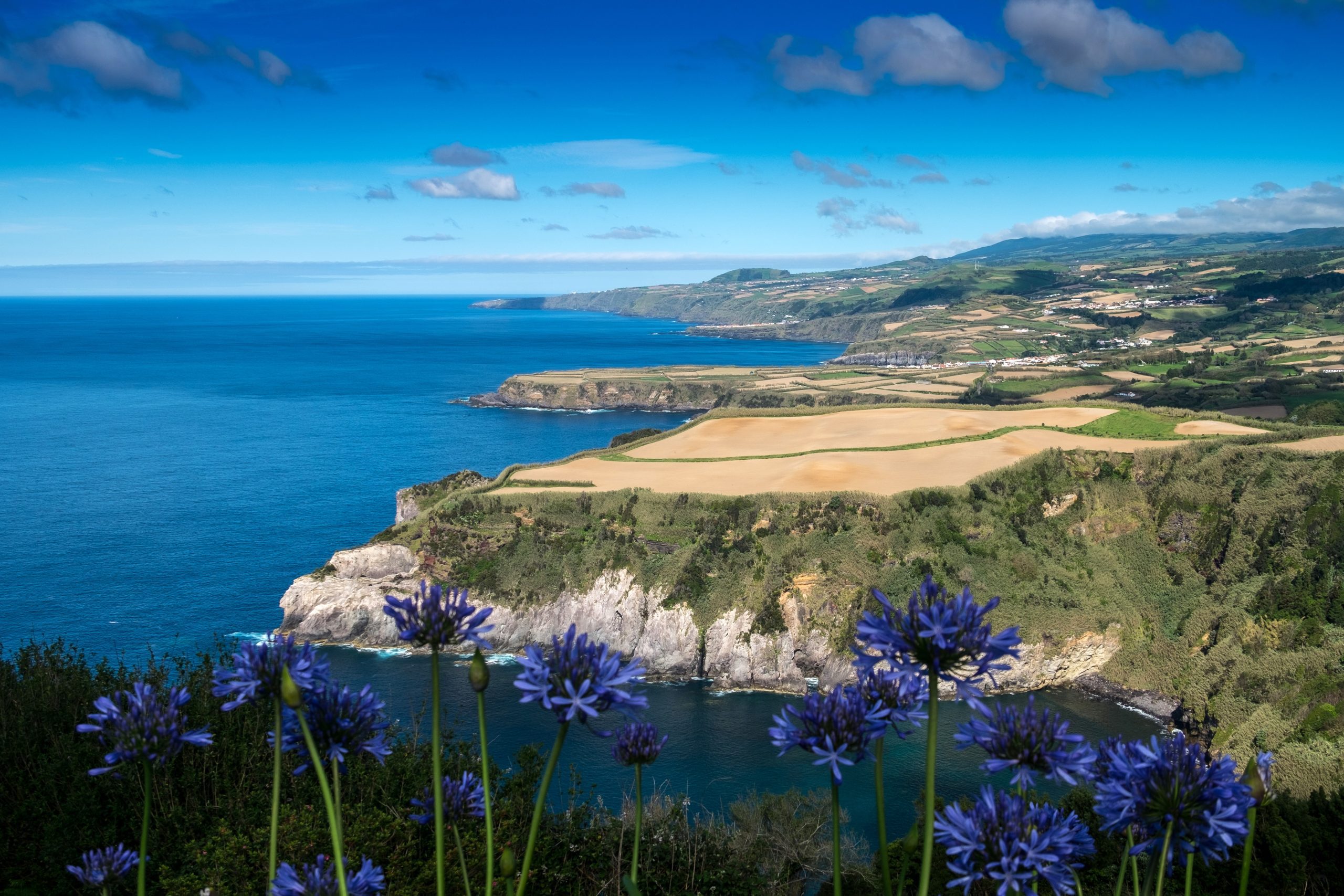The Salto da Farinha is a waterfall approximately 40 meters high, located at the end of Ribeira das Coelhas on São Miguel’s north coast. The name originates from historical grain milling activities in this area, which is known for its stunning geological landscapes.
At almost 130 meters above sea level, the Miradouro do Salto da Farinha offers an incredible panoramic view over the North coast of São Miguel Island, featuring its green cliffs, the Atlantic Ocean, and the 40-meter-high waterfall that shares the same name.
This beautiful waterfall is not to be missed when driving through the Northeastern part of São Miguel, the green island. From this viewpoint, it looks pretty small. But if you get close, sometimes you can’t even hear when someone is talking to you right by your side.
Locals might know it very well, but not every visitor will have it on their itinerary. So let’s unravel together all the secrets around this hidden spot, off the beaten path.
What is Miradouro do Salto da Farinha

Miradouro do Salto da Farinha is a viewpoint with quite a view! From there, you can truly appreciate Mother Nature’s work. It is located inside a lush green forest with exuberant vegetation. A hidden spot straight from a film like Jurassic Park or Indiana Jones.
Quick Info
Up there, you will find a barbecue area with grills, tables, benches, some shelter to eat under, toilets, and a car park. Most of it is accessible to people with disabilities.
The name Salto da Farinha comes from the fact that, once, this waterfall was used to help grind cereals to make flour. Wheat and cornbread were once the main elements of the Azorean diet, similar to those in most European countries.
Check all our articles about each one of the most relevant points of interest in Nordeste: Cu de Judas | Nordeste | Farol do Arnel | Faial da Terra | Ponta do Sossego | Miradouro do Salto da Farinha | Pico da Vara | Pico dos Bodes | Poço Azul | Ribeira dos Caldeirões | Miradouro da Boca da Ribeira | Ponta da Madrugada | Miradouro Vigia da Baleia
Plan Your Visit to Miradouro do Salto da Farinha

How to Get to Miradouro do Salto da Farinha
When driving on the EN1-1A on the Northern shore of São Miguel, towards the East, you will find Miradouro do Salto da Farinha right before the village of Salga. This is accessible by car or taxi. Public transportation, like buses, is not very frequent during the day, so it is better to rent a car.
Once you are at the viewpoint, you can go down to the waterfall by car. However, this is a 35% inclination descent. And then you have to go back up the same way. This is quite dangerous if you don’t have the proper car or good driving experience. So we recommend going on foot.
Did you know
This viewpoint is also on the way to a trail: Padrão das Alminhas — Salto da Farinha (PR21 SMI). This is a nice hike for those who have some time on their hands and love being surrounded by nature.
Planning a trip to the Azores? These articles will help you: How to Get to the Azores 🗺️ | Azores airports 🛬 | Flights between islands ✈️ | Ferries between islands ⛴️ | Which island to choose? 🏝️ | What airlines fly to the Azores? 🛩️
Best Time to Visit
If you want to see the waterfall with more water flow, then you need to visit during the winter months. Or at least aim for some rainy days to make it even more spectacular. If there is plenty of water, you will be astounded by the considerable noise created by the waterfall.
Consider bringing a picnic or some food to grill and enjoy at the viewpoint, especially on sunny days. Come by the end of the morning so you have time to drive there, enjoy a meal, see the waterfall, and return before sunset.
Check all our articles about the weather in the Azores throughout the year 🌤️ ☔️: January | February | March | April | May | June | July | August | September | October | November | December
Pro Tips

If the weather and sea conditions are favorable, you can take a dip at the small rocky beach near the waterfall. However, as this is not an official beach, no one guards it. Always ask locals around for advice. This is a place with strong currents. Moreover, there can be some Portuguese Man O’ War, the very nasty ‘jellyfish’.
Azores Guide Book
Azorean Language & Phrases 🗣️ | Currency & Banks 💵 | Credit Cards & Traveler’s Cheques 🏧 | Driving in the Azores 🚗 | Electricity 🔌 | Experiences & Tours 🗺️ | Health & Safety 🩺 | Internet & Wi-Fi Access 🛜 | Phones & Mobile Service 📞 | Post Offices & Buying Stamps ✉️ | Public Holidays 🏖️ | Shopping 🛒 | Time & Daylight 🕒 | Whale Watching Guide 🐳 | Best Island to Visit 🏞️
What to Do Around Miradouro do Salto da Farinha
Chase Waterfalls at Ribeira dos Caldeirões Park

Stroll through a lush natural park featuring waterfalls of all shapes and sizes. A place where local traditions and nature make one. Discover old material used in the everyday life of Azoreans from the former century and an abundant, dreamy landscape.
When visiting São Miguel island in the Azores, don’t forget to visit Ribeira dos Caldeirões Natural Park. This natural park is a mandatory stop for all travelers. It displays beautiful landscapes and offers an excellent opportunity for a relaxing walk surrounded by spectacular nature. An incredible scenery for pictures!
Between big waterfalls and unique vegetation, this is the perfect place to spend a quiet day far away from the city. But there are also options for the most adventurous travelers!
Swim at Praia da Viola

While some of the green island’s beaches are highly frequented and popular among tourists, there are also many hidden gems that only locals know. One such hidden gem is Praia da Viola, a secluded beach on the north coast of the island.
Praia da Viola is one of the most untouched black sand beaches of the archipelago. It is pretty remote, accessible only via a walking trail. Surrounded by lush green cliffs from where several waterfalls flow into the ocean, Praia da Viola is the ideal spot to experience a typical Atlantic beach of the Azores without the crowds.
The black sand contrasts beautifully with the clear blue waters of the Atlantic, making it a popular spot for swimming and sunbathing. The beach is also an excellent spot for snorkeling, as marine life is abundant in the water around the coast.
Quick Info
If the sea conditions are not appropriate, venturing out can become quite dangerous.
→ Related Post: Best beaches in the Azores. Read more!
Explore the Poço Azul

Poço Azul is one of the most researched points of interest on the green island of São Miguel, Azores.
Why? Well, for a simple reason. As you can guess, its name means ‘the blue well’, and once you get there, you will be transported to a magical scenery straight out of a fairy tale, surrounded by unique natural beauty.
This hidden gem will reveal the singular beauty trapped in the island’s remote locations. Walking to Poço Azul is like entering another world. This clear-blue-water lagoon and its famous cave are a remarkable landmark in São Miguel. There is even a waterfall. What a great way to begin the day in the Azores.
Hike the Moinho do Félix Trail

If you are a hiking enthusiast looking for another great hiking experience near Poço Azul, Moinho do Félix is a great spot. On this 2-hour round-trip trail, you will be immersed in the forest and find many waterfalls. It is located in the neighboring village of Lomba de São Pedro.

Complementary Information
Best Season to Visit the Azores
The Azores Archipelago boasts a unique climate that shapes its lush landscapes, making it a splendid year-round destination. With mild temperatures and minimal fluctuations, each season offers something unique. Spring averages 16 °C, summer reaches 21 °C, autumn cools to 18 °C, and winter remains mild at 14 °C.
→ For a detailed breakdown of the weather by month, check the following links 🌤️☔️: January | February | March | April | May | June | July | August | September | October | November | December
How to Get to the Azores
The Azorean Archipelago is easily accessible through numerous flight routes. Lisbon and Porto are the main entry points to the continent, with direct flights available to São Miguel (PDL), Terceira (TER), Faial (HOR), Pico (PIX), and Santa Maria (SMA). To find the best flight, use search engines like eDreams or Skyscanner. These platforms let you compare prices and schedules from multiple airlines in one convenient location.
For more details on how to get to the Azores, take a look at our complete guide. But what if you want to explore beyond your arrival island? We’ve got you covered!
- Azores airports 🛬
- Flights between islands ✈️
- Ferries between islands ⛴️
- Which island to choose? 🏝️
- What airlines fly to the Azores? 🛩️
→ Once you’ve found the perfect route, book your tickets and get ready to experience one of the world’s most stunning island groups!
Travel Essentials
Essential Information for your Azores trip: Azorean Language & Phrases 🗣️ | Currency & Banks 💵 | Credit Cards & Traveler’s Cheques 🏧 | Driving in the Azores 🚗 | Electricity 🔌 | Experiences & Tours 🗺️ | Health & Safety 🩺 | Internet & Wi-Fi Access 🛜 | Phones & Mobile Service 📞 | Post Offices & Buying Stamps ✉️ | Public Holidays 🏖️ | Shopping 🛒 | Time & Daylight 🕒 | Whale Watching Guide 🐳 | Best Island to Visit 🏞️
Useful Tools & Apps
The weather in the Azores can be variable, so it’s helpful to use some apps before visiting the islands. Spotazores provides live camera feeds from the main tourist attractions, allowing you to check the weather and plan your visit. For accurate weather predictions, use Windy or Windguru — they provide the most reliable predictions.
Video
Conclusion
To sum up, Miradouro do Salto da Farinha is a gorgeous viewpoint on the north coast, offering a view of one of the most impressive waterfalls on São Miguel Island, especially in the wintertime or after heavy rains.
From up there, admire the natural beauty of the Green Island and enjoy a lunch surrounded by untouched nature, with all the appliances needed for a comfortable time. This is definitely a spot you want to add to your island itinerary, as it’s less crowded with tourists, and you will enjoy a privileged view.
Authors’ Note
I am pleased to inform you that all the recommendations in this article are based on my personal experience and observations. As the author, I have personally visited each attraction mentioned, ensuring that every suggestion is grounded in first-hand knowledge and genuine enthusiasm.
FAQs
Miradouro do Salto da Farinha is situated on the island of São Miguel in the Azores. It is easily accessible and offers spectacular views of the Salto da Farinha waterfall.
The best time to visit Miradouro do Salto da Farinha is during spring and summer when rainfall is less frequent, and the vegetation is in full bloom, providing stunning views.
Yes, there are trails nearby that allow you to explore the surrounding nature and get closer to the Salto da Farinha Waterfall. These paths offer an excellent opportunity to admire the area’s natural beauty.
Besides enjoying the view of the Salto da Farinha Waterfall, you can hike in the surrounding area, photograph the landscape, and enjoy picnics in designated spots, taking advantage of the tranquility of the location.






